Austin in the 1970s was a special time and place in American history. The city was on the cusp of significant changes transforming it from a sleepy college town into a bustling metropolis. It was a time of cultural and social upheaval, as the counterculture movement of the 1960s spilt over into the new decade.
The city was home to a vibrant music scene that would go on to produce some of the most excellent musicians of all time. The Armadillo World Headquarters was the epicenter of this scene, hosting legendary performances by the likes of Willie Nelson, Jerry Jeff Walker, and Waylon Jennings. It was where hippies and rednecks could come together to enjoy good music and vibes.
But Austin was more than just a music town. It was also a hub of political activism, particularly around civil rights issues and environmentalism. The University of Texas at Austin was at the forefront of this activism, with students organizing protests and sit-ins to demand change. The city was also home to a thriving feminist movement, with women advocating for equal rights and opportunities.
Read more
Despite these progressive movements, Austin was still a profoundly segregated city in the 1970s. The city’s east side was predominantly African American, and many black residents faced discrimination and limited opportunities. Mexican Americans also faced similar challenges, with many working in low-wage jobs and living in poverty.
One of the defining moments of the decade was the opening of the University of Texas Tower observation deck in 1975, which had been closed since the infamous tower shooting in 1966. The tower shooting was a tragedy that shocked the nation and forever changed the city of Austin. The observation deck’s reopening symbolized the city’s resilience and determination to move forward. Austin was also a city of contradictions. While it was home to some of the country’s most progressive and forward-thinking people, it was also a place where traditional values and conservative politics held sway. The city’s famous slogan, “Keep Austin Weird,” was not yet a thing, but the sentiment was certainly there.
One of the most significant events of the decade was the creation of the Austin City Limits television program. The show debuted in 1976 and quickly became a cultural institution, showcasing some of the world’s best musicians and helping establish Austin as a music mecca. The 1970s were also a time of growth and change for the city. The population doubled between 1970 and 1980 as people flocked to Austin for its low cost of living and laid-back lifestyle. New businesses and industries sprang up, and the city became known for its high-tech sector, later earning it the nickname “Silicon Hills.” But the rapid growth also had its downsides. Traffic congestion and air pollution became significant issues, and many residents worried about the impact that development had on the city’s natural beauty and resources.
Looking back on Austin in the 1970s, it’s clear that the city was a product of its time. It was a place where the counterculture movement of the 1960s met the conservative politics of the Southwest and where traditional values and progressive ideas clashed and coexisted. It was a time of change and growth, and the planted seeds continue to shape the city and its culture to this day.
#1 Line of Cars Waiting to Enter a Festival, 1970s
#2 Motorists stranded in flood waters, May 21, 1979.
#3 The sky of downtown Austin and the new Austin high school building where the city can be seen in the distance, along with small neighborhoods and suburbs in the foreground, 1978
#4 Auditorium Shores on Town Lake, looking east, with three boys riding bikes on a gravel path, 1972 .A railroad bridge crosses the river behind them. Crest Inn is visible in the distance.
#5 A group of school children eating lunch in the Pflugerville Elementary School cafeteria, 1978
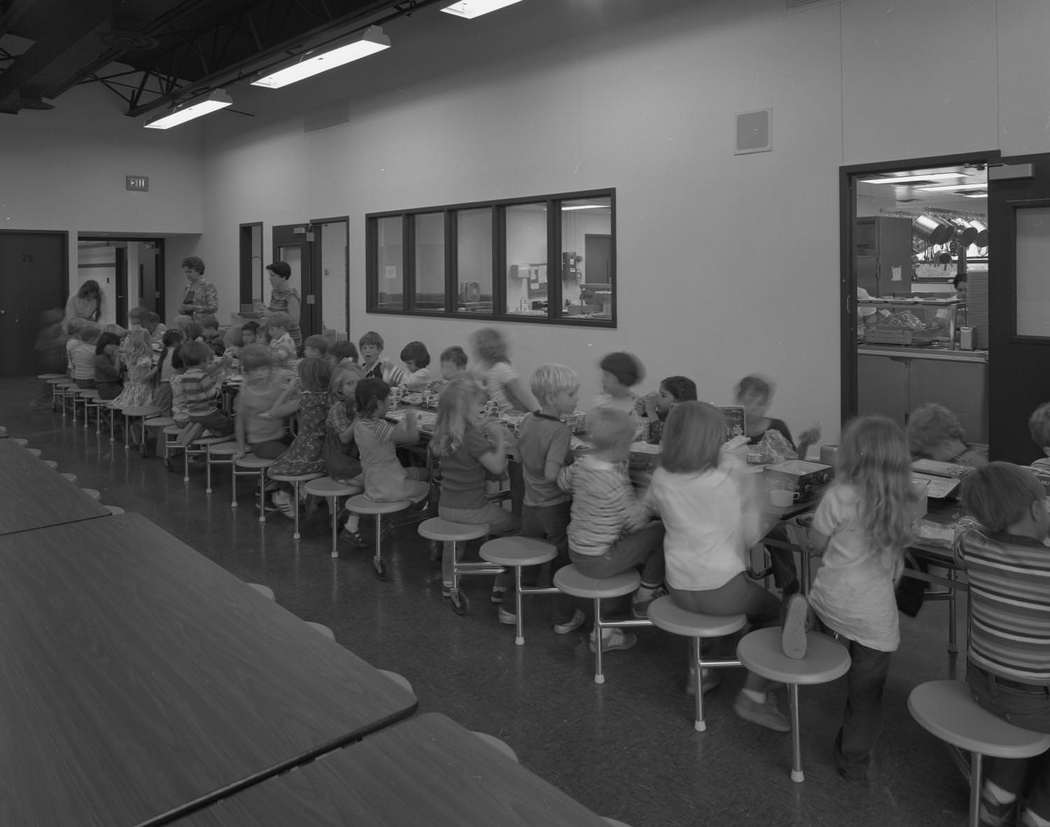
The students can be seen sitting at a very long lunch table with stools attached. two teachers can be seen standing in the background at the end of the table. An empty table can be seen in the foreground, and the cafeteria kitchen can be seen in the background through windows and doors on the wall to the right.
#6 A group of people holding a hose in the middle of Barton Pool, 1970
#7 Convict Hill Restaurant, December 11, 1973.
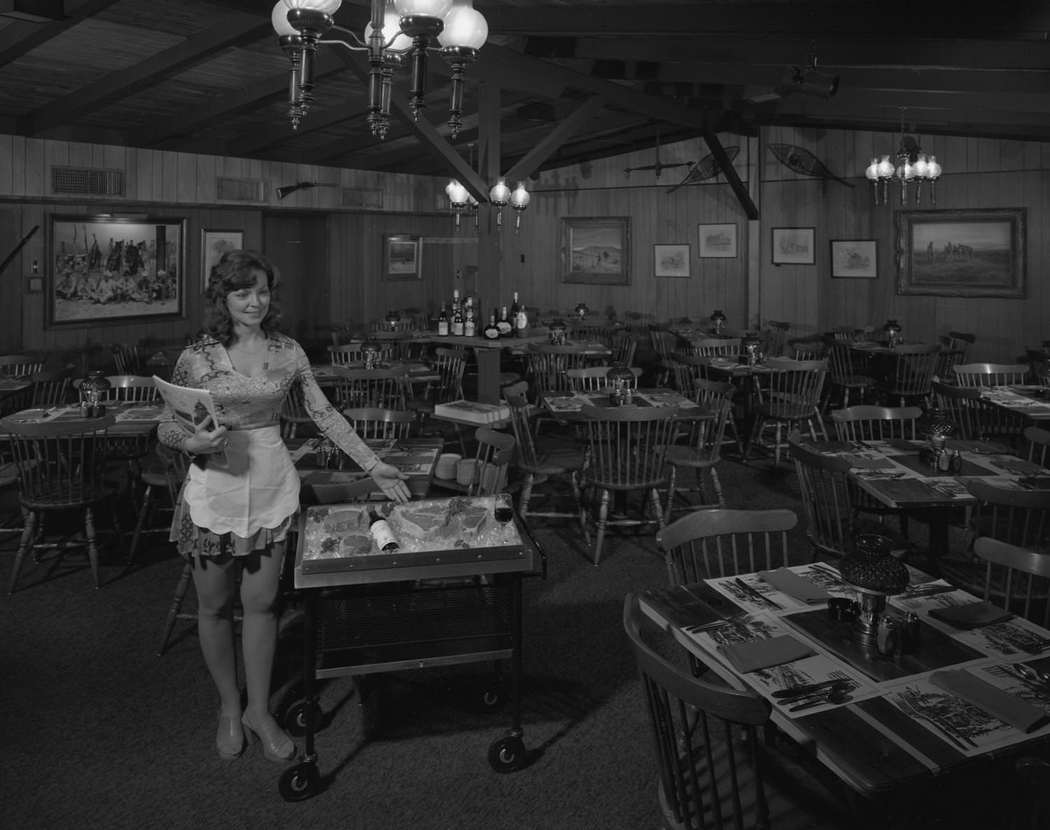
In the foreground, a waitress in a short dress can be seen holding menus and gesturing at a food cart filled with iced steak cuts, along with a wine bottle and glass of wine. Wooden tables set with silverware can be seen throughout the restaurant, and various western paintings can be seen hanging on the wall.
#8 Old Men’s Barracks at the Bergstrom Air Force Base, 1970. There is a line of laundry between houses to the left, and men sit at a picnic table to the right.
#9 Town Lake Gazebo, 1970
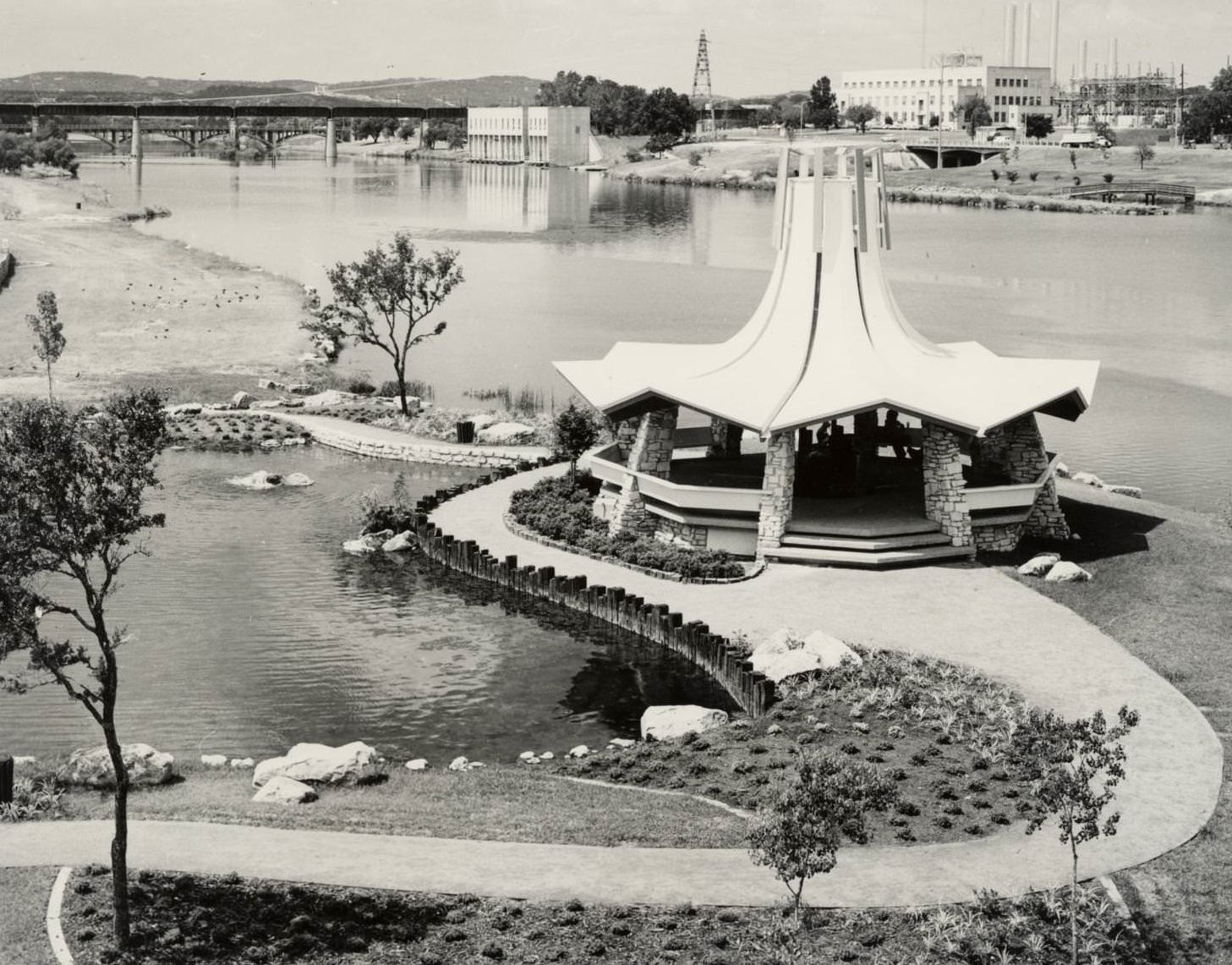
A pathway curves around to the gazebo in the foreground and Town Lake is behind the gazebo. Buildings across the river and a bridge are visible in the background. Started in 1967 and dedicated to the city in 1970 by the Austin Chapter of the National Association of Women in Construction as a "lasting tribute to the construction industry." The gazebo is built on the promontory where Barton Creek flows into Town Lake providing a view of downtown Austin from the south side of Town Lake.
#10 Downtown Austin, Texas, 1970s
#11 Houses in Austin, 1978
#12 Barton Pool Cleanup #2,March 25, 1970.
#13 The Canadian Street Branch Library located at 2131 East Ceaser Chaves/1st st, 1970
#14 Courthouse from Westgate, 1971
#15 Martin Luther King Jr. Blvd. from Nueces, 1972
#16 Scholz Garten and Saengerrunde Hall, 1971
#17 Steel Framing of the Frank Erwin Center, December 2, 1975.
#18 Cars drive up and down Congress Avenue at the intersection with 11th Street in the downtown district of the city of Austin, 1970
#19 American Bank Exterior, 1978. The building stands on the corner of West 6th Street and Colorado Street.
#20 The exterior of a restaurant called “The Barn”, located at 8611 Balcones Drive, 1977
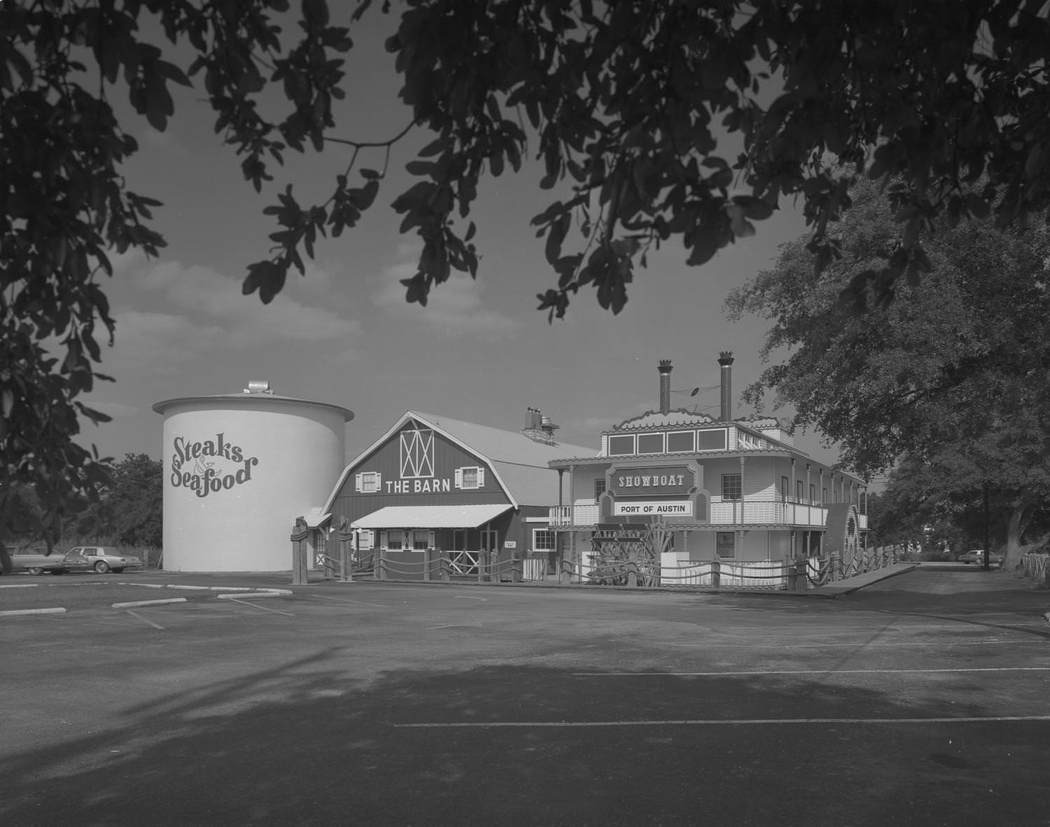
Three large buildings can be seen side by side and attached to one another. The first is a cylindrical structure with the words, "Steaks and Seafood", seen painted on. Next, is a barn-like building with the restaurant's name seen on the front. Third, is a building made to appear like a steamboat with the words, "Showboat" and "Port of Austin".
#21 A modern, postwar, multi-story building near a river or lake. A treetrunk takes up the right foreground, 1975
#22 Metalsmith sculptor selling wares at the Renaissance Market, 1977
#23 Several officers in gas masks standing together during a mock casualties and chemical warfare exercise at the Bergstrom Air Force Base, 1973
#24 Air Force One carrying the casket of President Lyndon B. Johnson. People stand on the tarmac, some at attention, 1973
#25 Family housing buildings under construction at the Bergstrom Air Force Base, 1970
#26 Children at Zilker Park Kite Tournament, 1970.
#27 Erwin Center Construction, August 11, 1975.
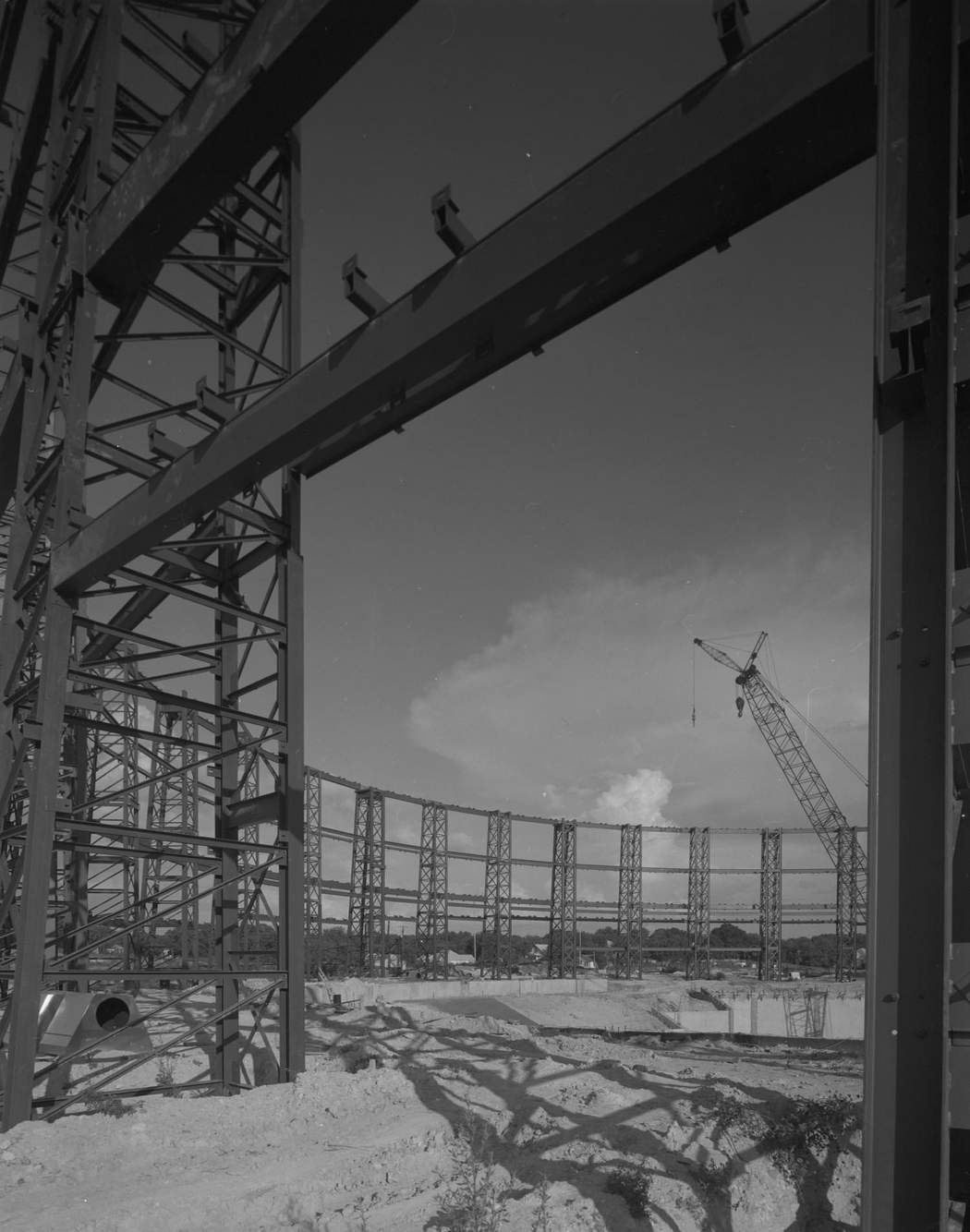
The shape of the building suggests it is the Erwin Center. The edge of the steel beam wall in the foreground can be seen curving around to the right in the background. The dirt in the center of the structure is dug out, and a crane can be seen to the right in the background.
#28 David Crockett High School at 5601 Manchaca Road at the corner of Stassney Lane, 1970s
#29 Sidney Lanier High School on 1201 Payton Gin Road from Payton Gin Road, 1970s
#30 Flagpole inauguration at the Montopolis Branch of the Austin Public Library on July 4th, 1971.
#31 Holly Street Power Plant, 1970
#32 Montopolis Bridge, February 1971.
#33 Austin Neighborhood Citizens’ Patrol, 1978
#34 South Austin, 1978
#35 South Austin, 1978
#36 Austin Neighborhood, 1978
#37 Aircrew Class 70-8B in Front of Plane, 1970
#38 Students boycotting the closing of L.C. Anderson High School, 1971
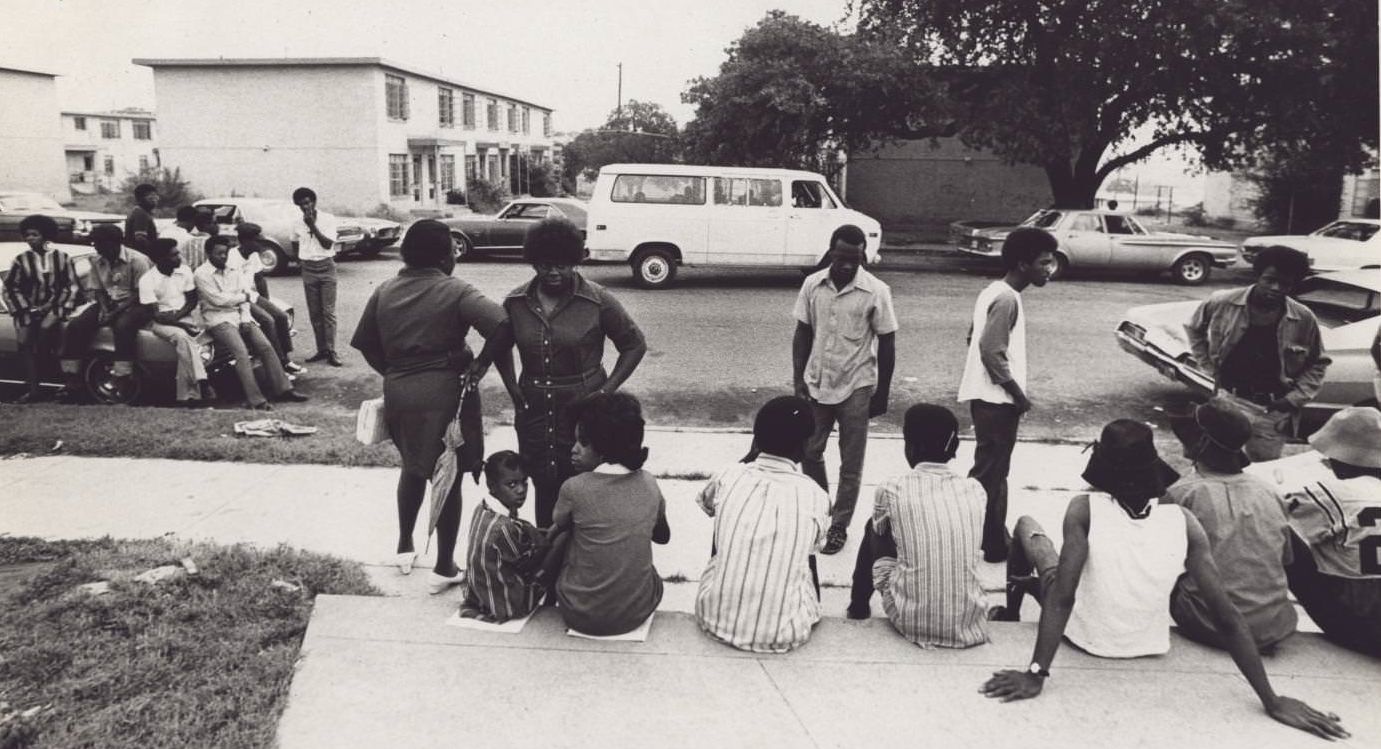
The school was ordered closed in 1971 by a federal judge as part of desegregation. African-American students and parents sit on sidewalks and cars to protest the closing. The school, located at 900 Thompson Street, was originally named E.H. Anderson, and later renamed L.C. Anderson after one of its longest-serving principals. In 1973, a new, integrated L.C. Anderson High School reopened at its current location at 8403 Mesa Drive.
#39 People Walking With Banner in Parade, 1979.
#40 Building T-407 at the Bergstrom Air Force Base, before the fire that destroyed it, 1974
#41 A group of school children in a classroom at Pflugerville Elementary School, 1978
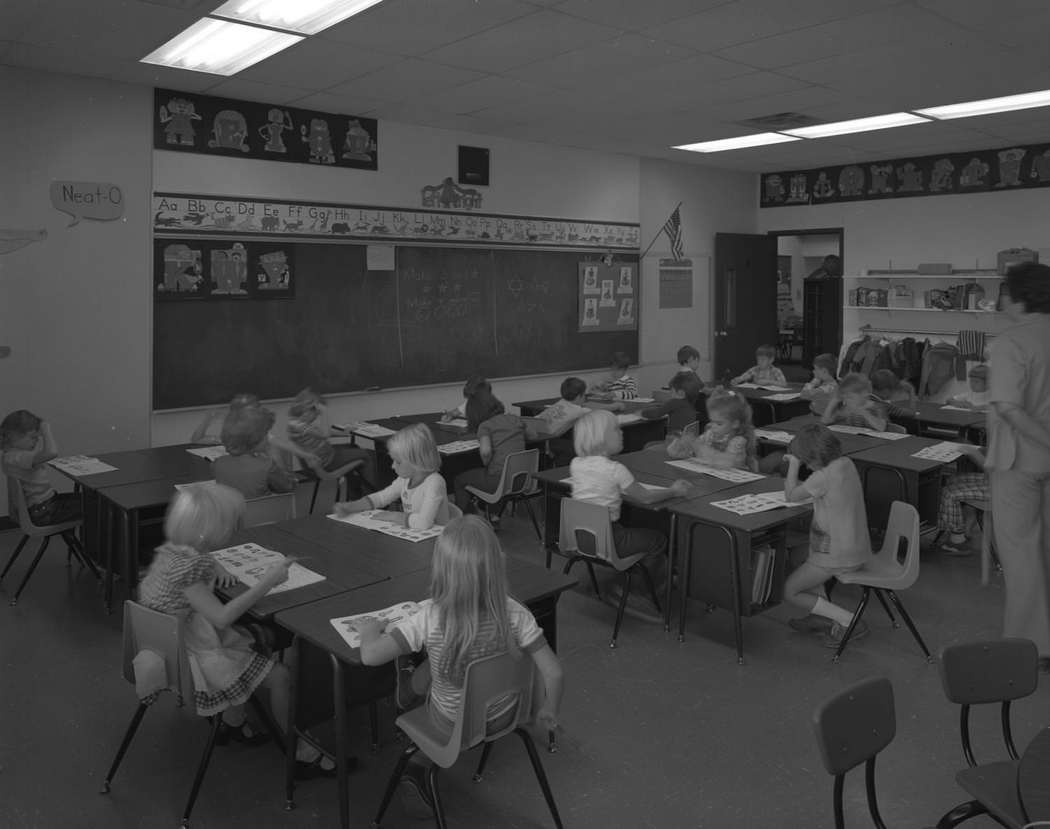
The children can be seen working in workbooks at small desks, and the teacher can be seen standing to the far right. A chalk board with the alphabet can be seen on the left wall, and shelves with coats and lunchboxes can be seen on the wall to the right, in the background. An open door can be seen to the left of the lunchbox shelf.
#42 A large dining room at a restaurant or club in the Texas Hill Country, 1973
#43 The Pflugerville Elementary School building, 1978
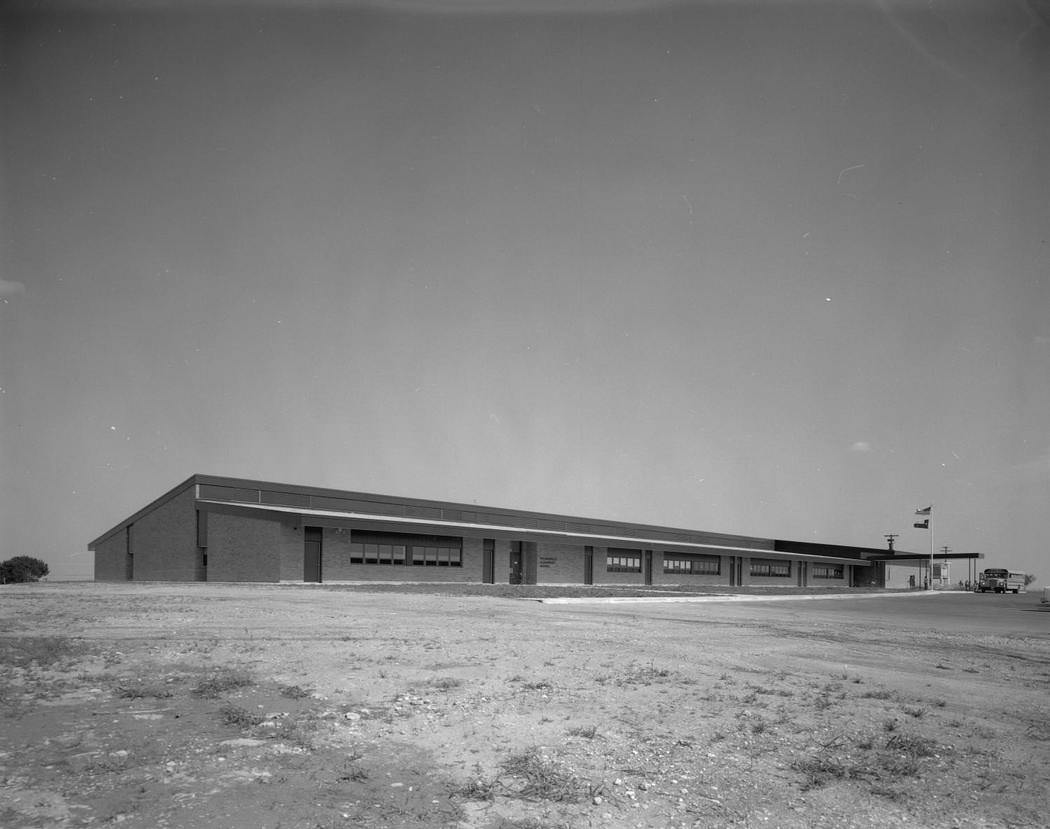
The structure is long and narrow. A flag poll with the U.S. and Texas flag can be seen in the background to the right, at the end of the building. A school bus can also be seen next to the flag poll. An empty lot can be seen in the foreground and a tree can be seen in the background to the left.
#44 Exterior of log cabin at Bohl’s Place, 1971.
#45 Governor’s Mansion with fence, 1971.
#46 Kite Tourney in Zilker Park, 1970.
#47 Kite Tourney in Zilker Park #4 ,March 8, 1970.
#48 Last Eagle passenger train through Austin, 1970
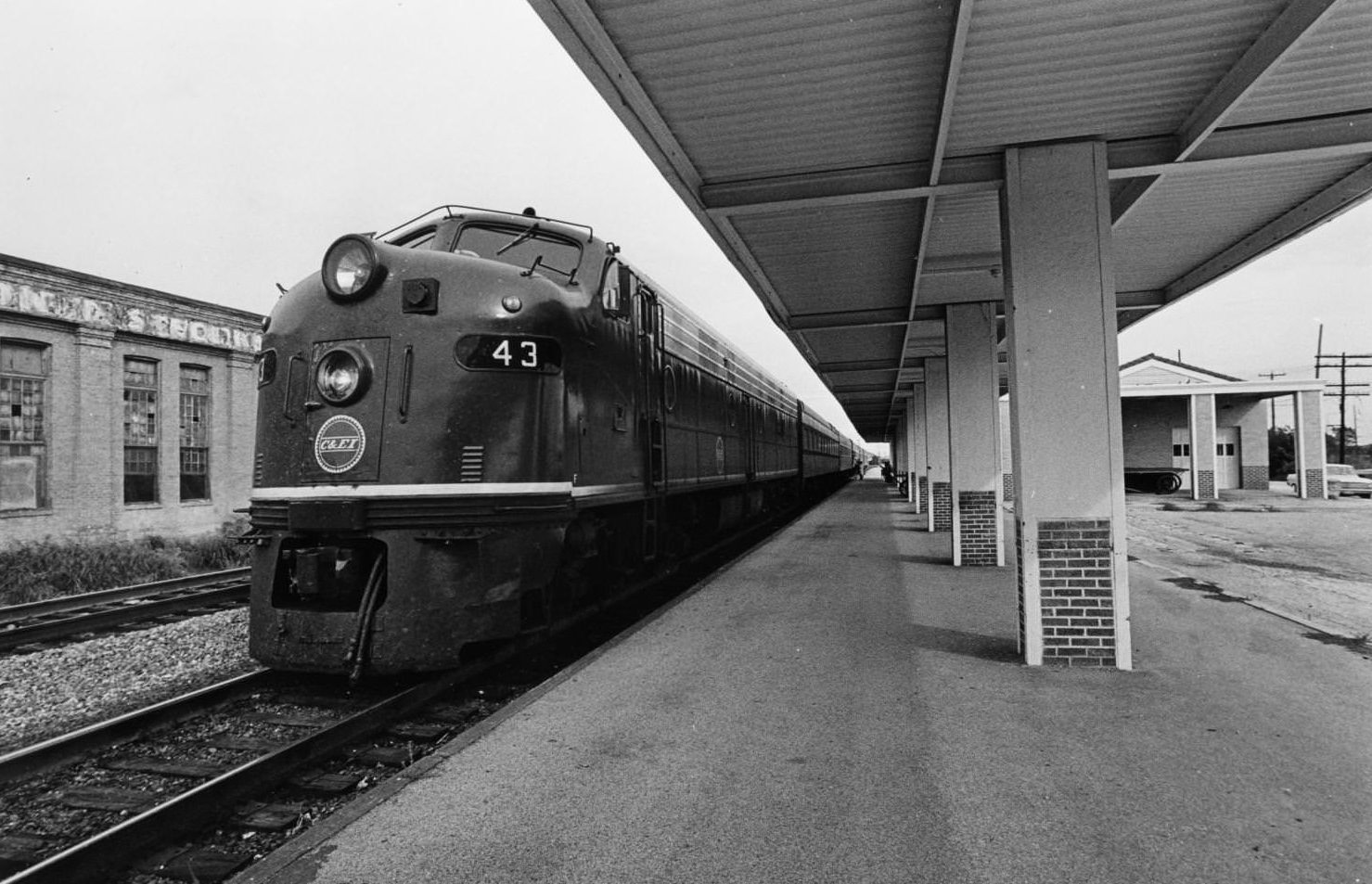
The train stops at the Austin International & Great Northern (I&GN) Railroad depot in Austin. There are no passengers waiting on the platform. The engine has the logo of C&EI (Chicago and Eastern Illinois Railroad). I&GN Railroad operated in Texas. It was created when the International Railroad company and Houston-based Great Northern Railroad company merged on September 30, 1873. I&GN's Austin depot was completed on 3rd and Congress Avenues on December 28, 1876. In 1924, the I&GN was bought by Gulf Coast Lines (GCL), which was subsequently purchased by Missouri Pacific on Januray 1, 1925. I&GN operated as a subsidiary of Missouri Pacific until March 1, 1956, when all GCL subsidiaries were merged under Missouri Pacific, and I&GN ceased to operate as a corporate entity. The old Austin depot had been demolished in 1950. sumed operation of the station and the Eagle.
#49 Mechanics Working in a Garage, 1975
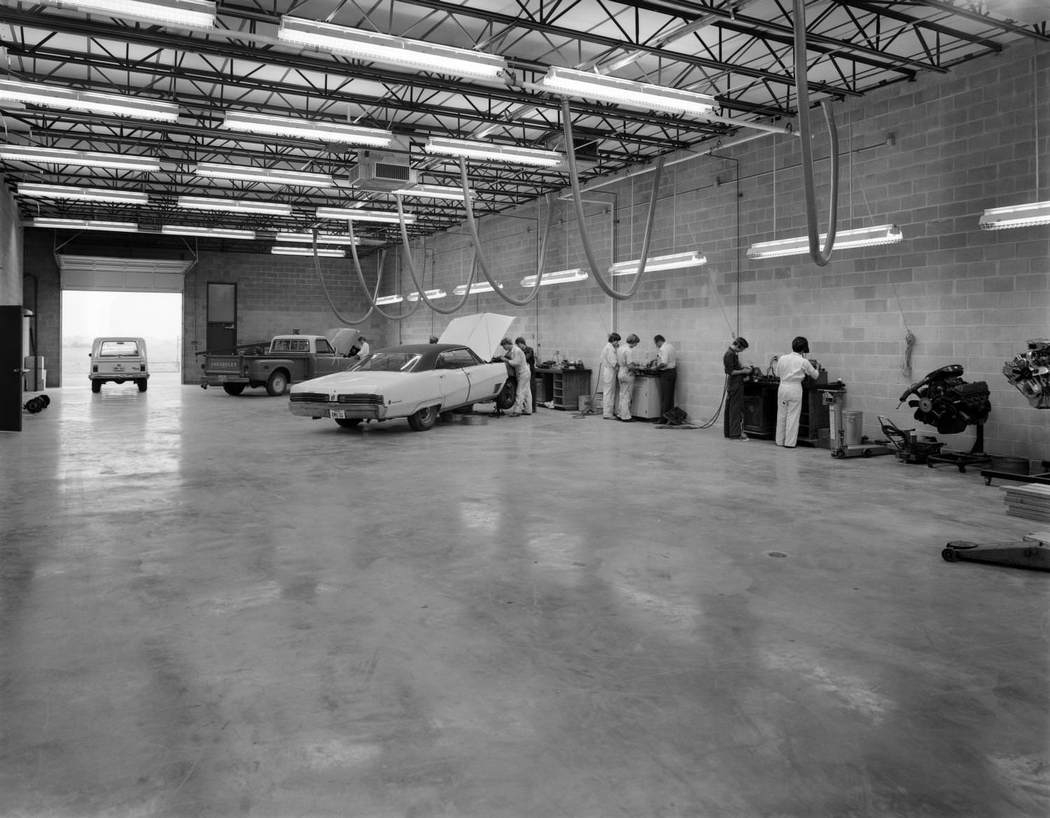
In the centerground is a jacked 1967 Buick Wildcat with the hood up; behind it is a Chevrolet C/K with the hood up. A stationwagon is visible in the garage door in the left background. The cars are attended to by several mechanics, possibly students, while others work with machinery at desks along the right wall.
#50 Old Bergstrom Air Base chapel, which was later converted to the base education office, 1975
#51 Opening of Bartholomew Playground, June 1, 1970.
#52 Relocatable Family Housing, 1970.
#53 Scenery at Givens Beauty Pageant, May 1970.
#54 The South Ridge Plaza strip mall with Spanish tile along the roof line, 1979
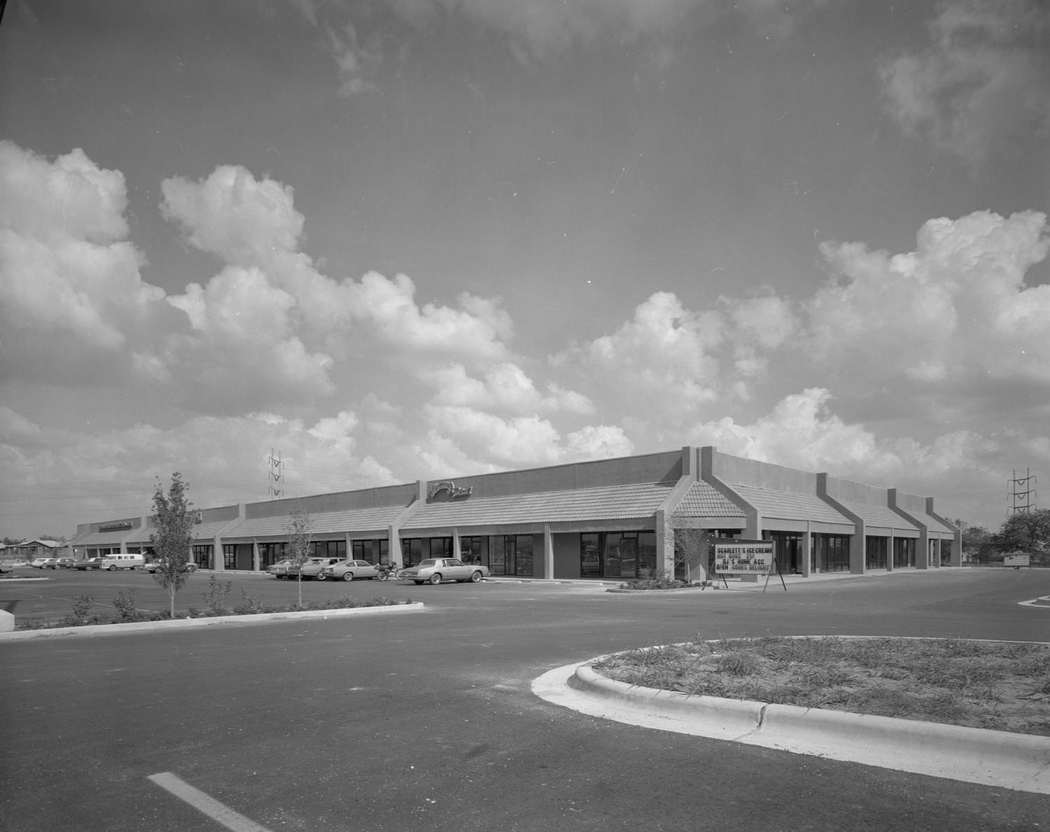
A sign for an ice cream shop can be seen on the foremost right corner, and more store units can be seen stretching into the background to the left. Several vehicles can be seen parked directly in front of the stores. In the foreground, a mostly empty parking lot and drive with a few small trees planted in garden dividers can be seen.
#55 A small diner called Steak ‘N’ Stein with an old neon sign that can be seen on a tall stand to the right, 1973
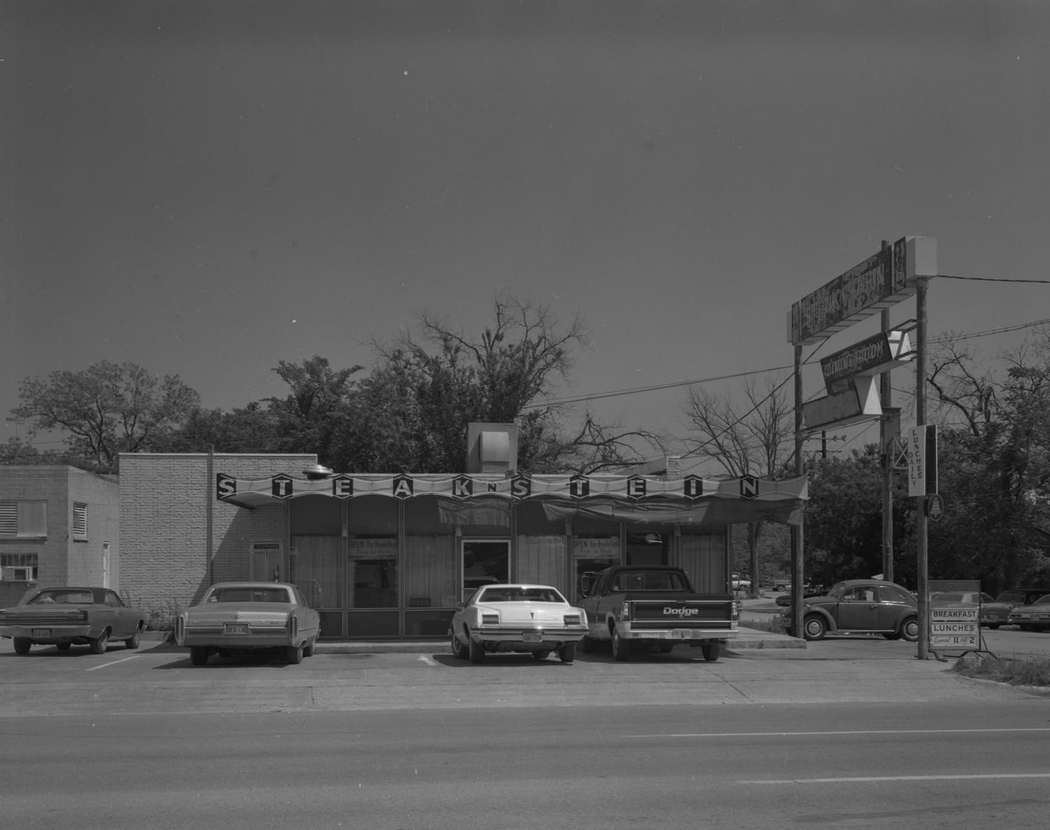
Vehicles can be seen parked front between the building and the street in the foreground, including a Dodge truck and a Volkswagen. A small sign can be seen to the right advertising breakfast and lunch specials. The restaurant, now demolished, was located on 1701 San Jacinto Boulevard.
#56 Protesting Aqua Fest Boat Races, 1970
#57 Library Study and Periodicals Section, 1975
#58 A protest to save Juarez-Lincoln University and mural (by Raul Valdez) at East 1st Street and I-35 in Austin, 1979
#59 St. John’s Elementary School, December 22, 1972.
#60 Students in High School Library, 1971.
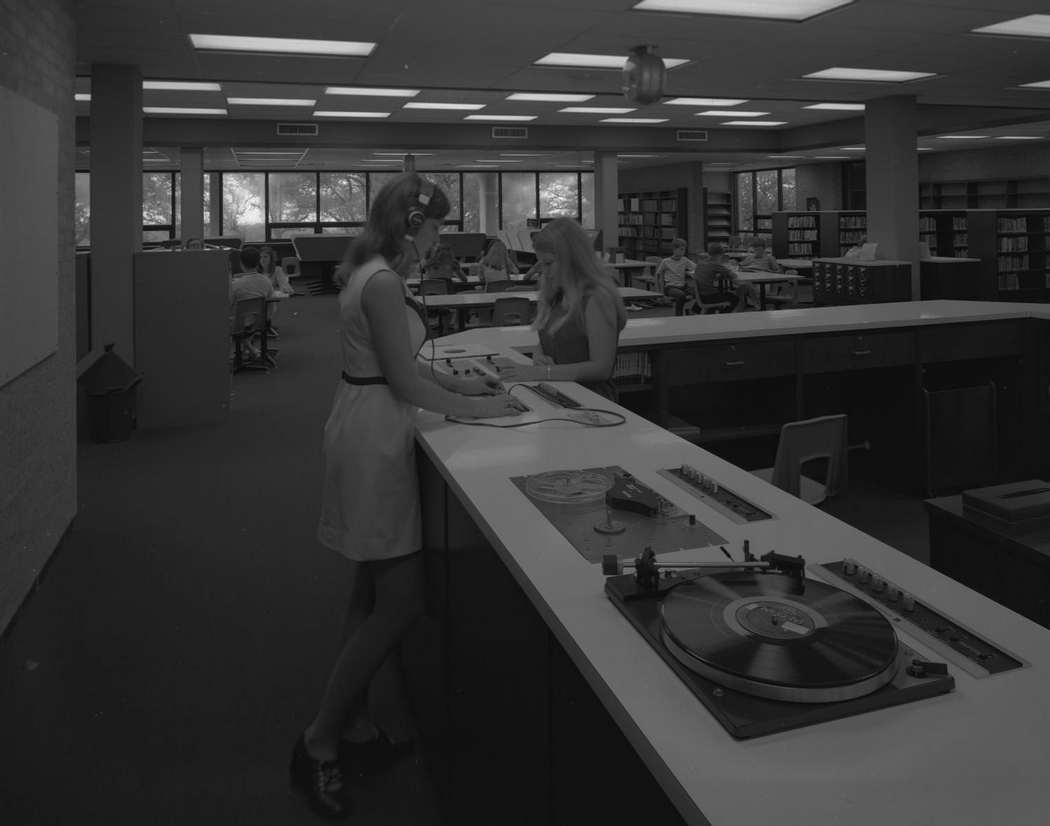
A girl can be seen wearing headphones at a recorded media listening station in the foreground. Another girl can be seen to the right behind the media station's counter. Bookshelves can be seen in the background to the right, and many windows can be seen on the back wall. Students can be seen sitting at tables throughout the space in the background.
#61 Theater students rehearsing, 1975
#62 Travis Bank and Trust ,1976.
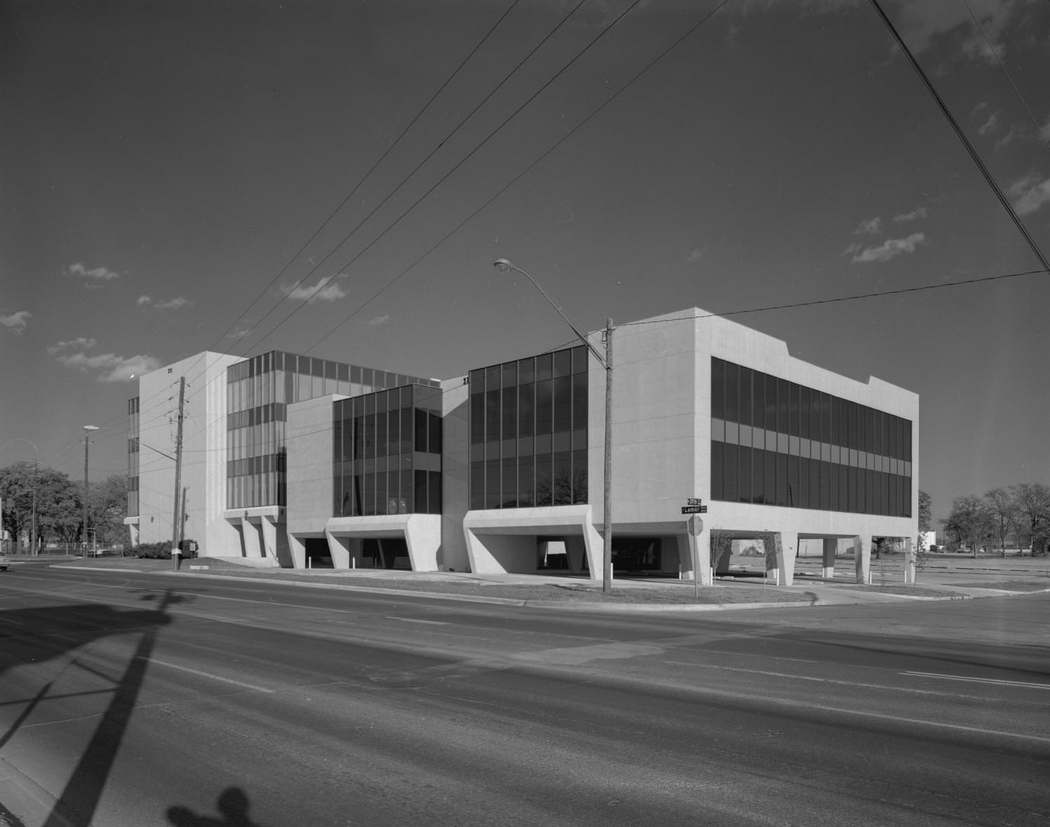
The building was located at 3711 North Lamar Boulevard, possibly now heavily renovated or demolished. The photo is taken from across the street, at a southwest angle. The building is a pale color with many dark windows and has two major segments that can be seen, each with a different number of stories. The shorter of the two segments can be seen in the foreground.
#63 Travis Bank and Trust Sign, November 20, 1976.
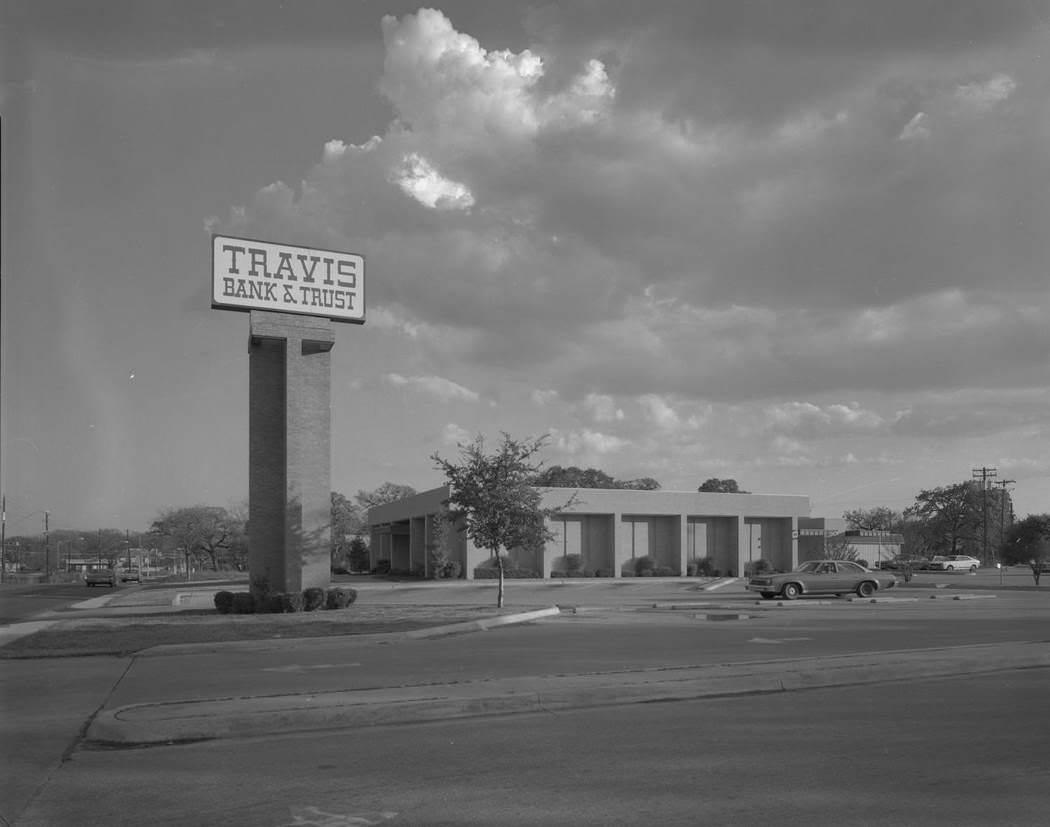
The sign rests on a tall brick structure with bushes seen planted at the base. A single story, postmodern building can be seen in the background to the right, and a single car can be seen parked in that building's parking lot, though more cars can be seen in the parking lot further in the background. A road can be seen to the left with cars driving on it.
#64 Tubas in Music Class, 1975
#65 Zilker Park Kite Tournament,March 8, 1970. A child is seen holding up a kite and a vehicle is parked behind him.
#66 Zilker Park Kite Tournament #4 1970
#67 Austin Community Garden near airport, 1975.
#68 Paving on 38th Street, 1975.
#69 Group of People at Houston Pride Event, 1979.
#70 The Spencer and Associates architect, office located in an older building, 1979
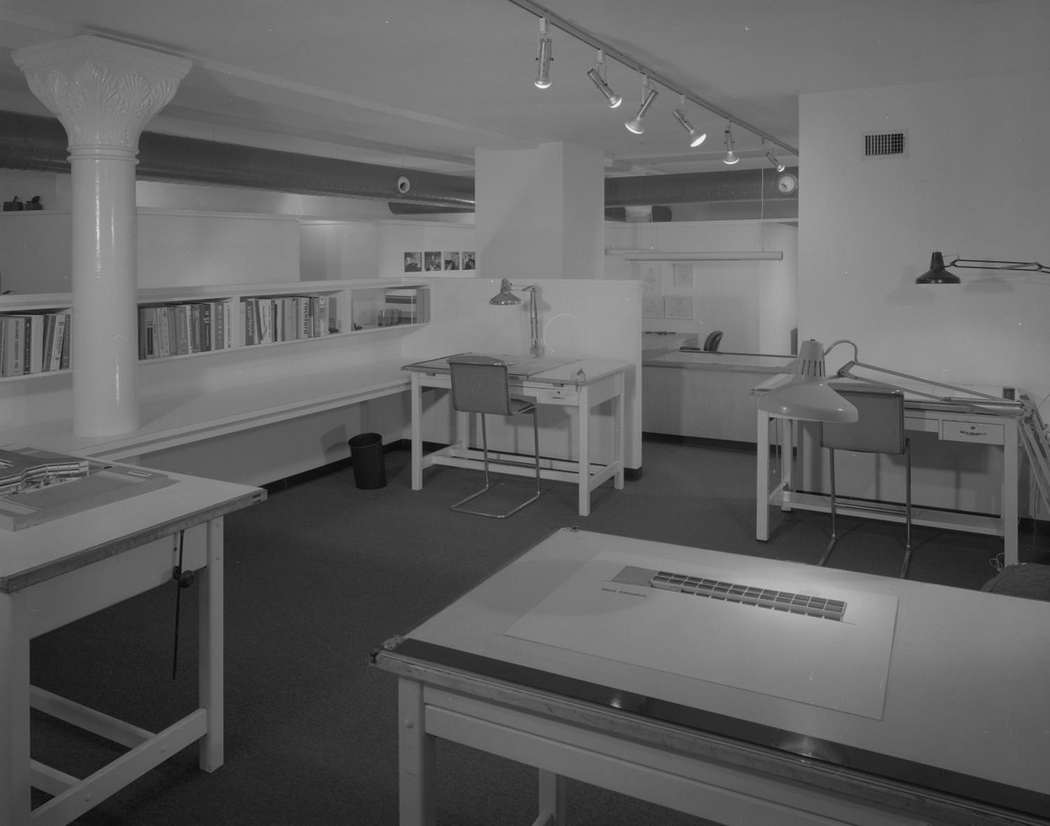
Four desks can be seen in the foreground, and a low bookshelf wall with a Corinthian column can be seen to left, closing in the desk area. Track lighting can be seen on the ceiling above the desk area, and in the background an exposed air duct can also be seen near the ceiling.
#71 Best in TAC Award Ceremony, 1970
#72 Asign at the Bergstrom Air Force Base, which reads “Combat Support Center”., 1970s
#73 Driskill Penthouse,1979.
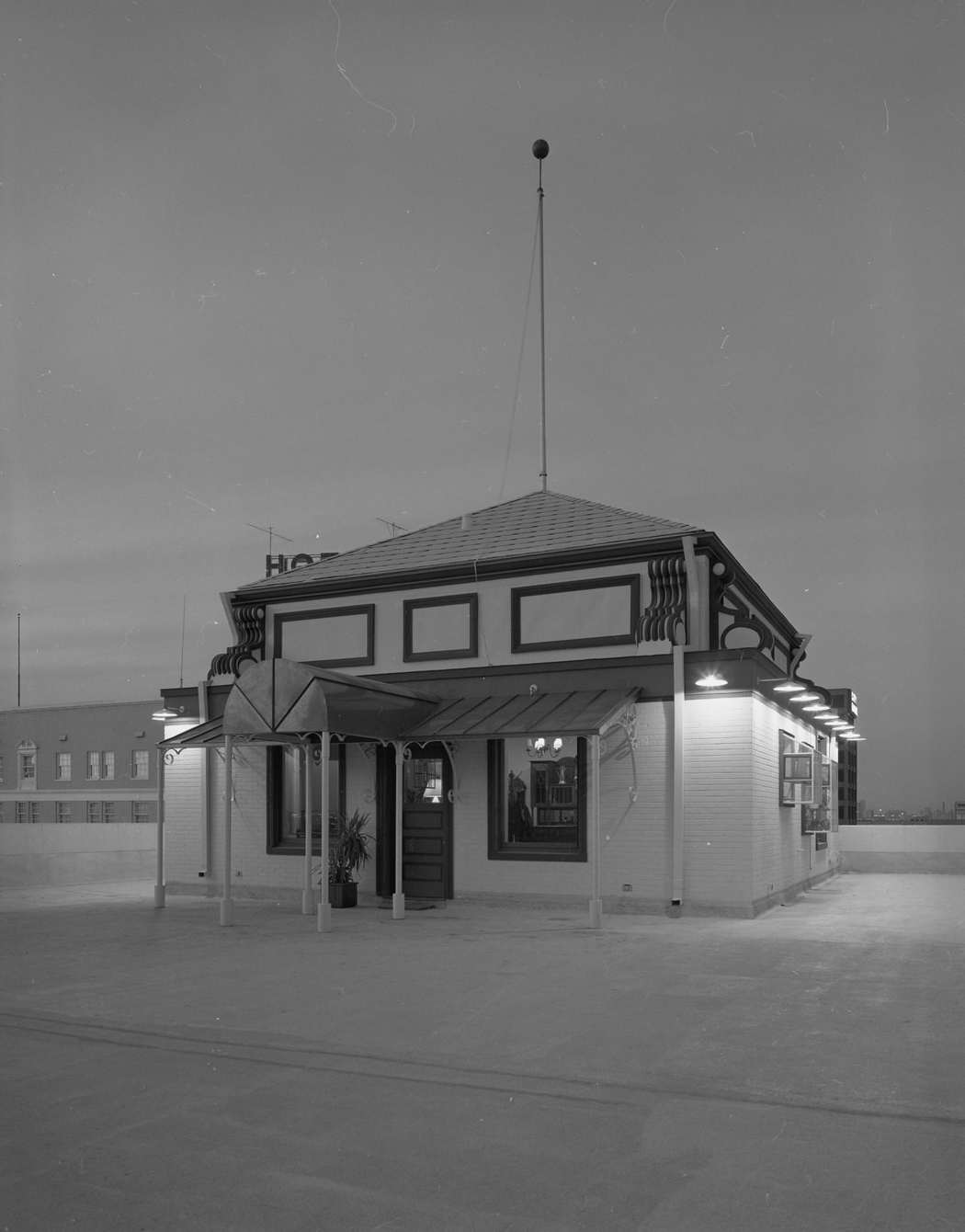
The building is small but well crafted, with several wood sculpted architectural details seen along the exterior wall under the roof line. Several lights can be seen posted to the building's perimeter. An attached window awning can be seen on the foremost side of the house over an entrance.
#74 Exterior of 12th Air Force Headquarters ,1970s
#75 F-4 Phantoms, 1970s
#76 The scenery at Given Beauty Pageant in 1970.
#77 Motorola Employees, February 20, 1979.
#78 Parking lot outside a new 10-lane bowling alley on the Bergstrom Air Force Base, 1970
#79 An Elementary School in Austin, 1973
#80 Exterior of Wilford Hall medical center, owned by the U.S. Air Force, 1979
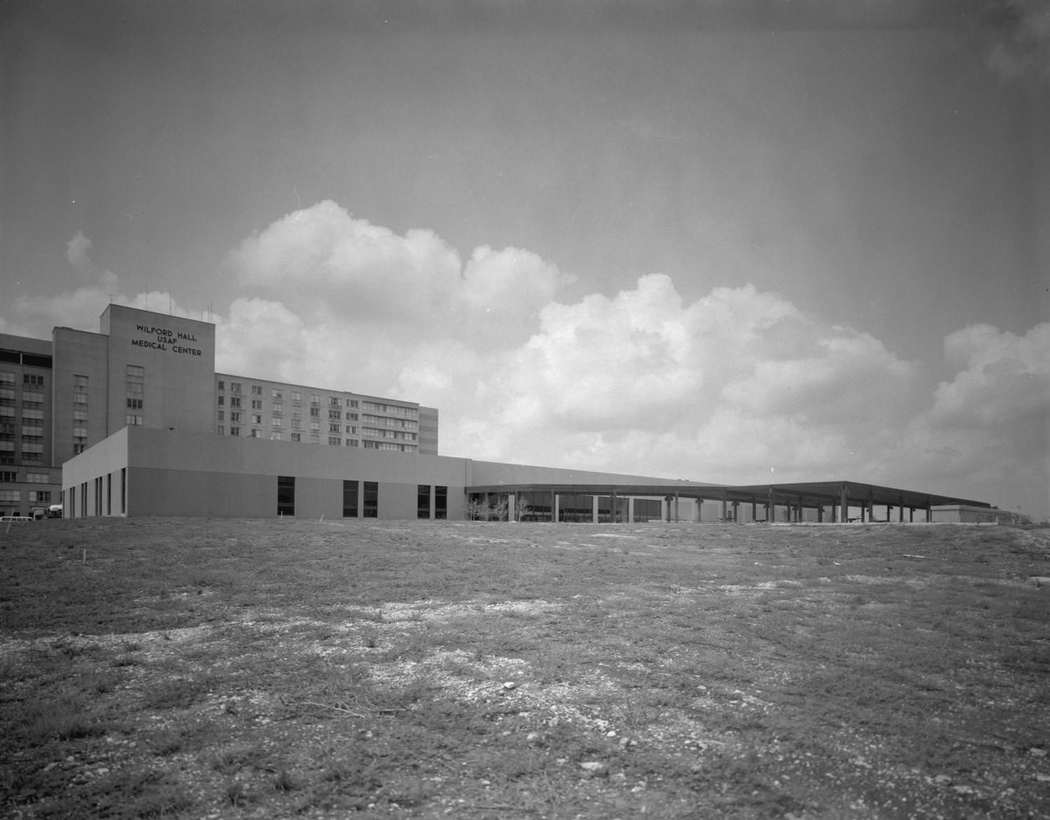
The building can be seen in two parts, a lower single story building in the foreground, and a taller building with several stories in the background. Both buildings are fairly wide and can be seen centered to the left in the photo. On the tall building in the background, the words, "Wilford Hall USAF medical Center" can be seen


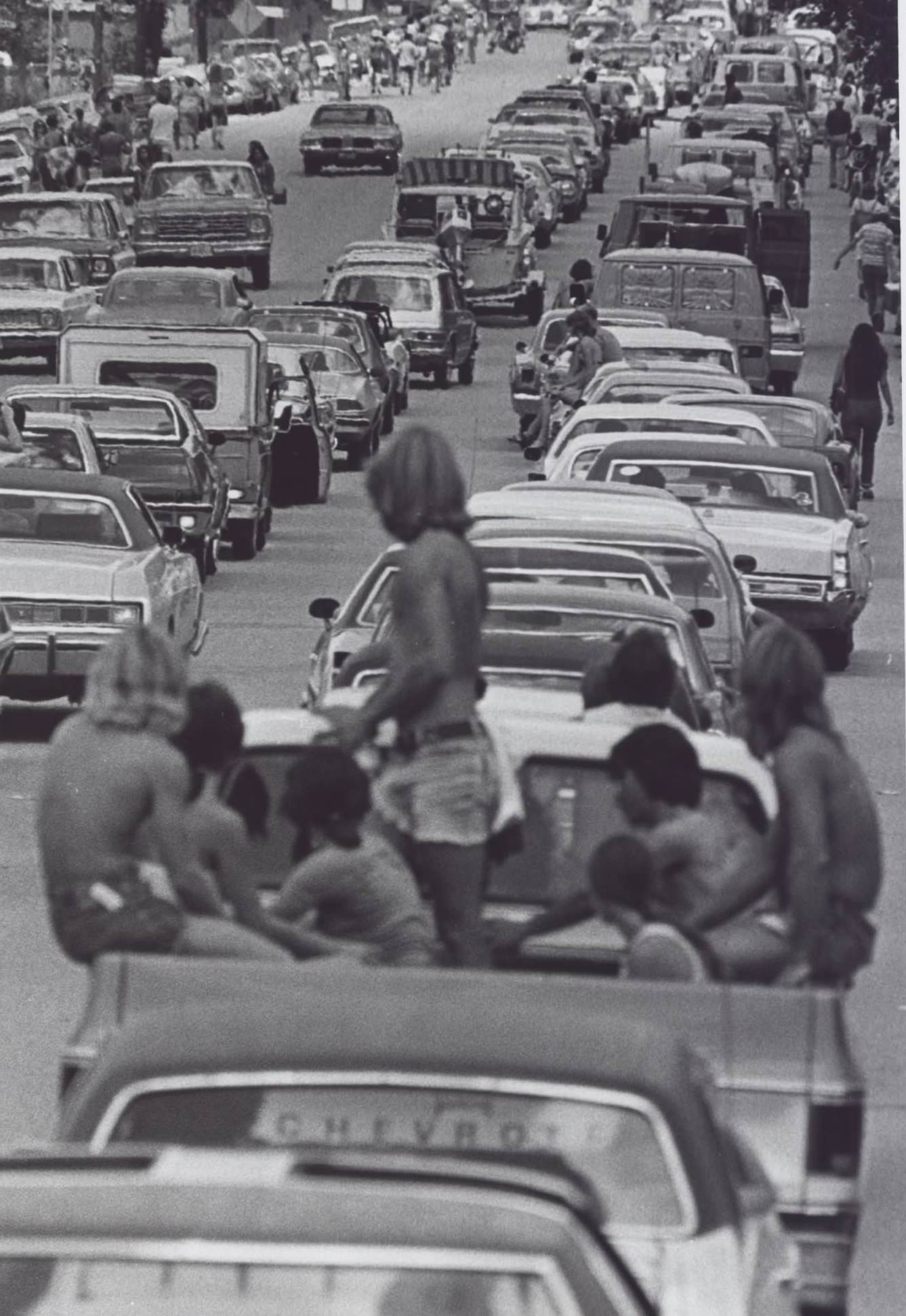
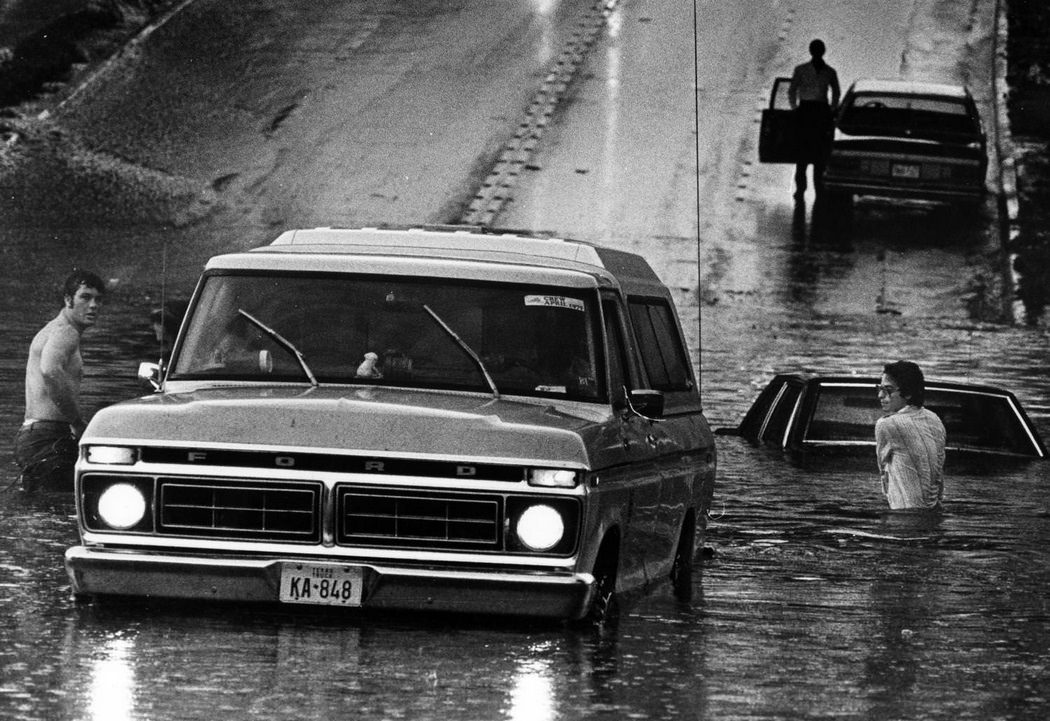
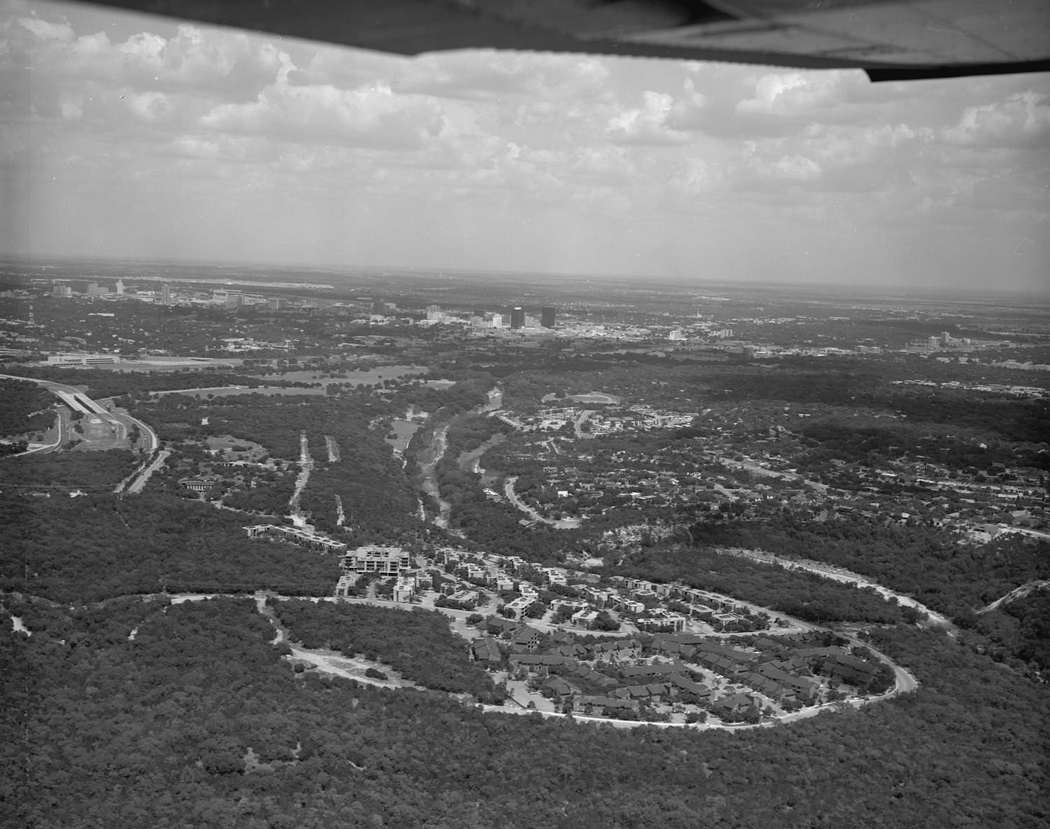
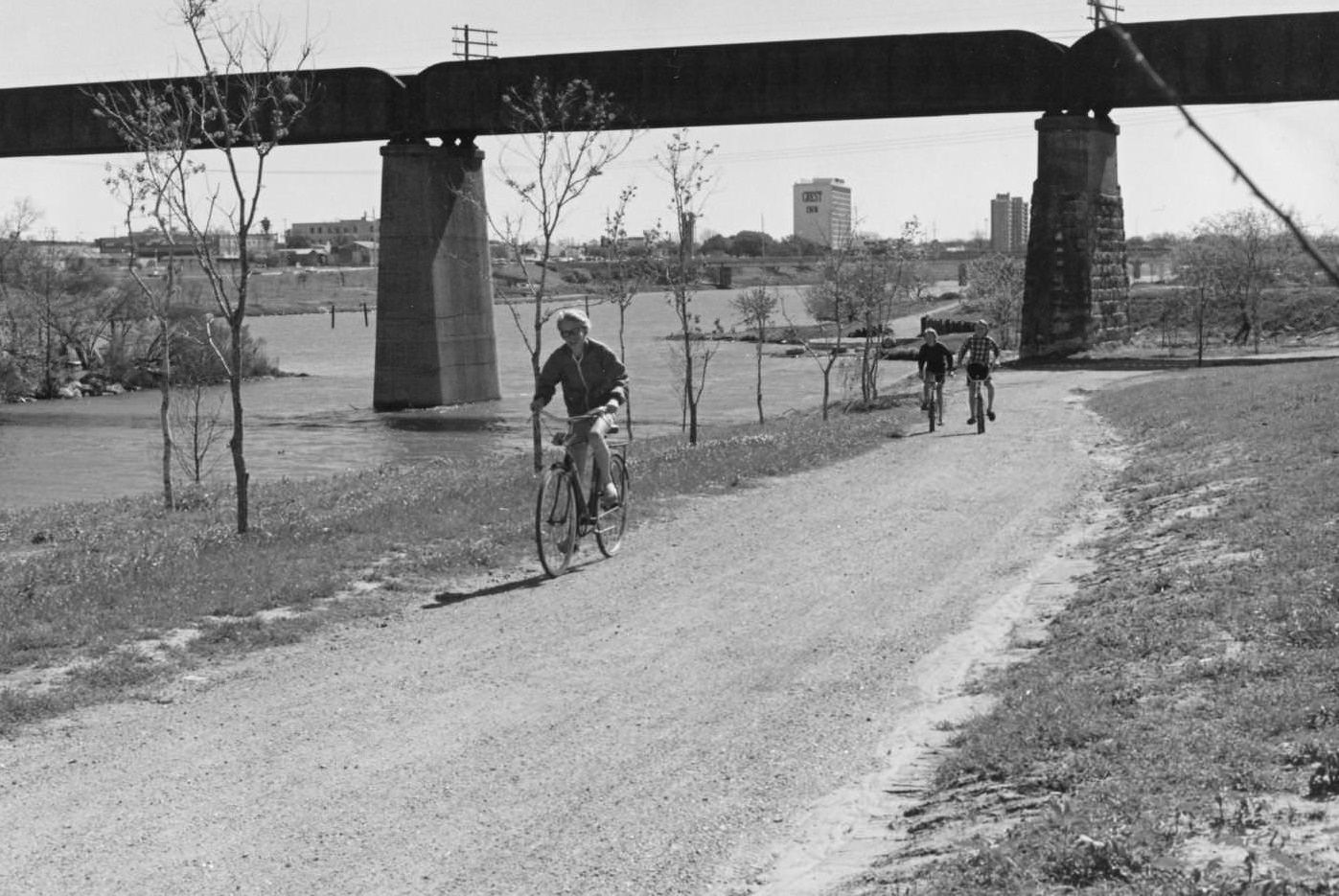
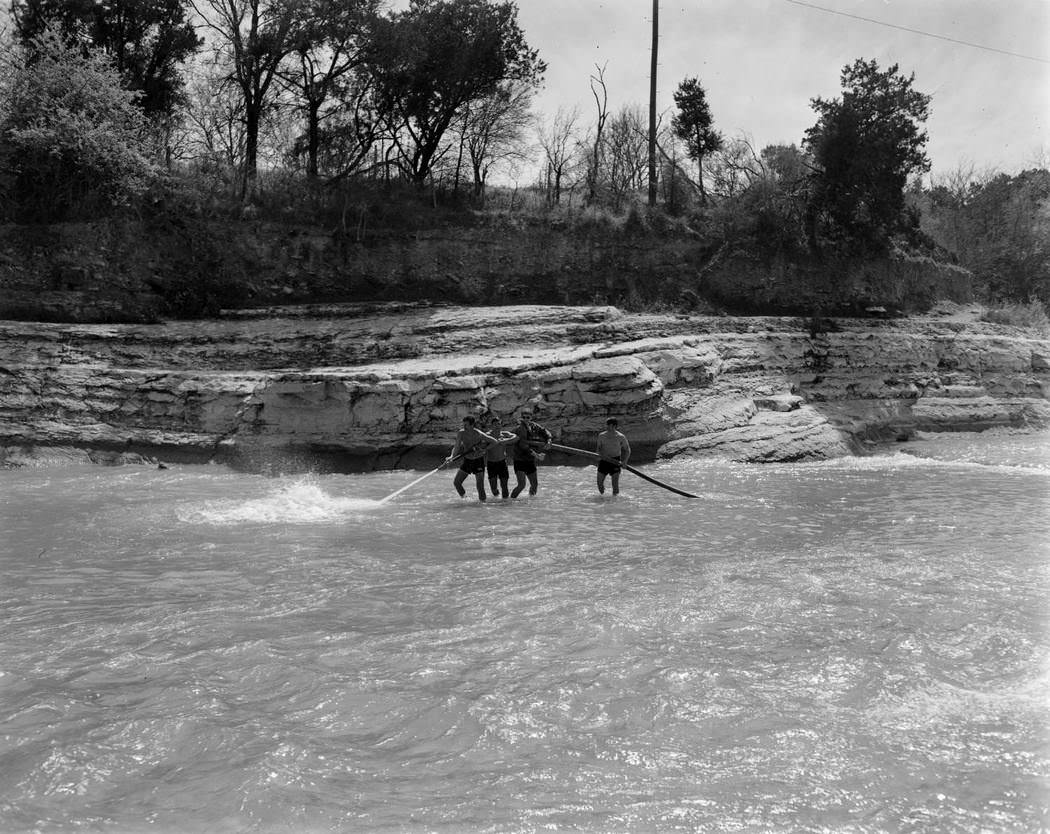
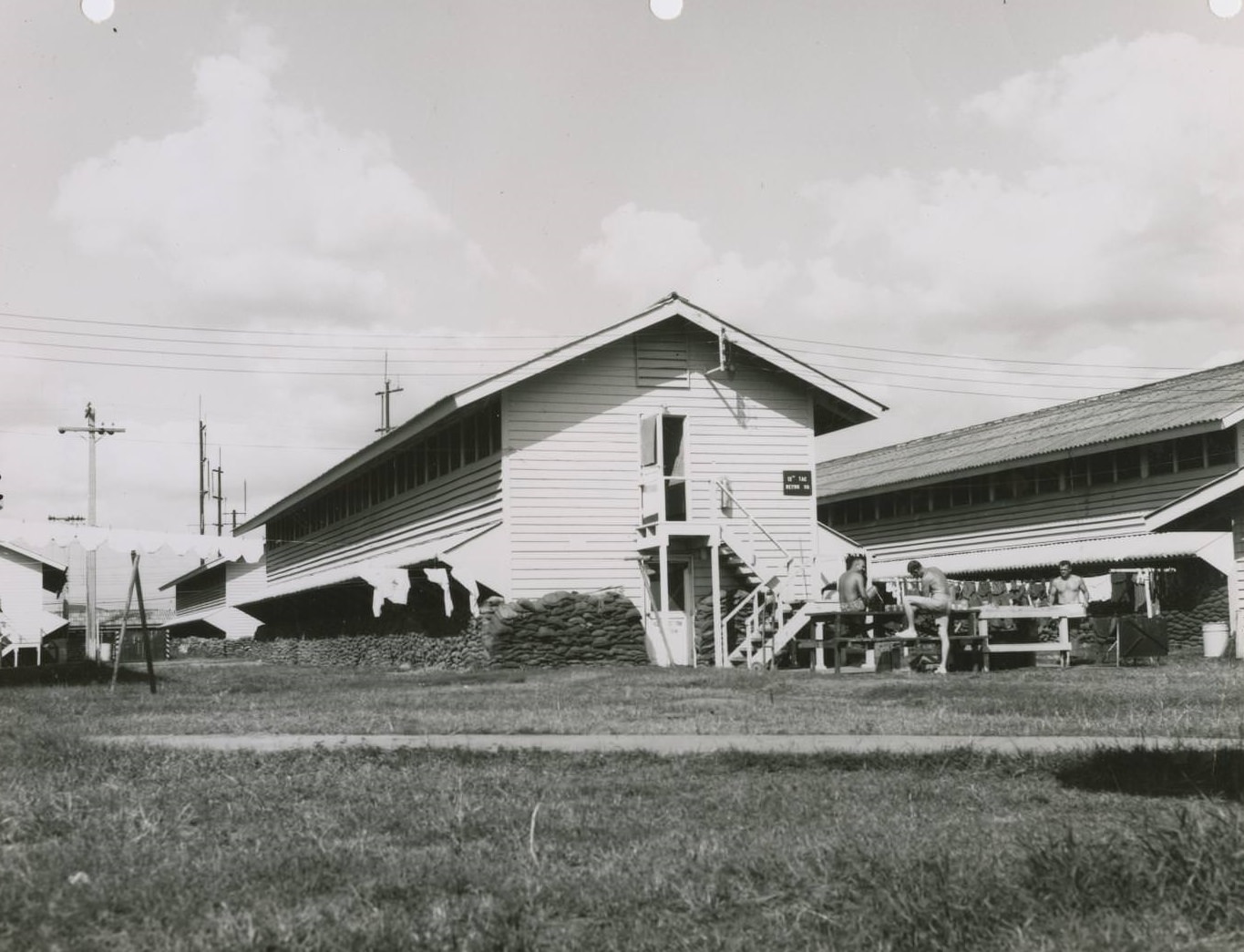
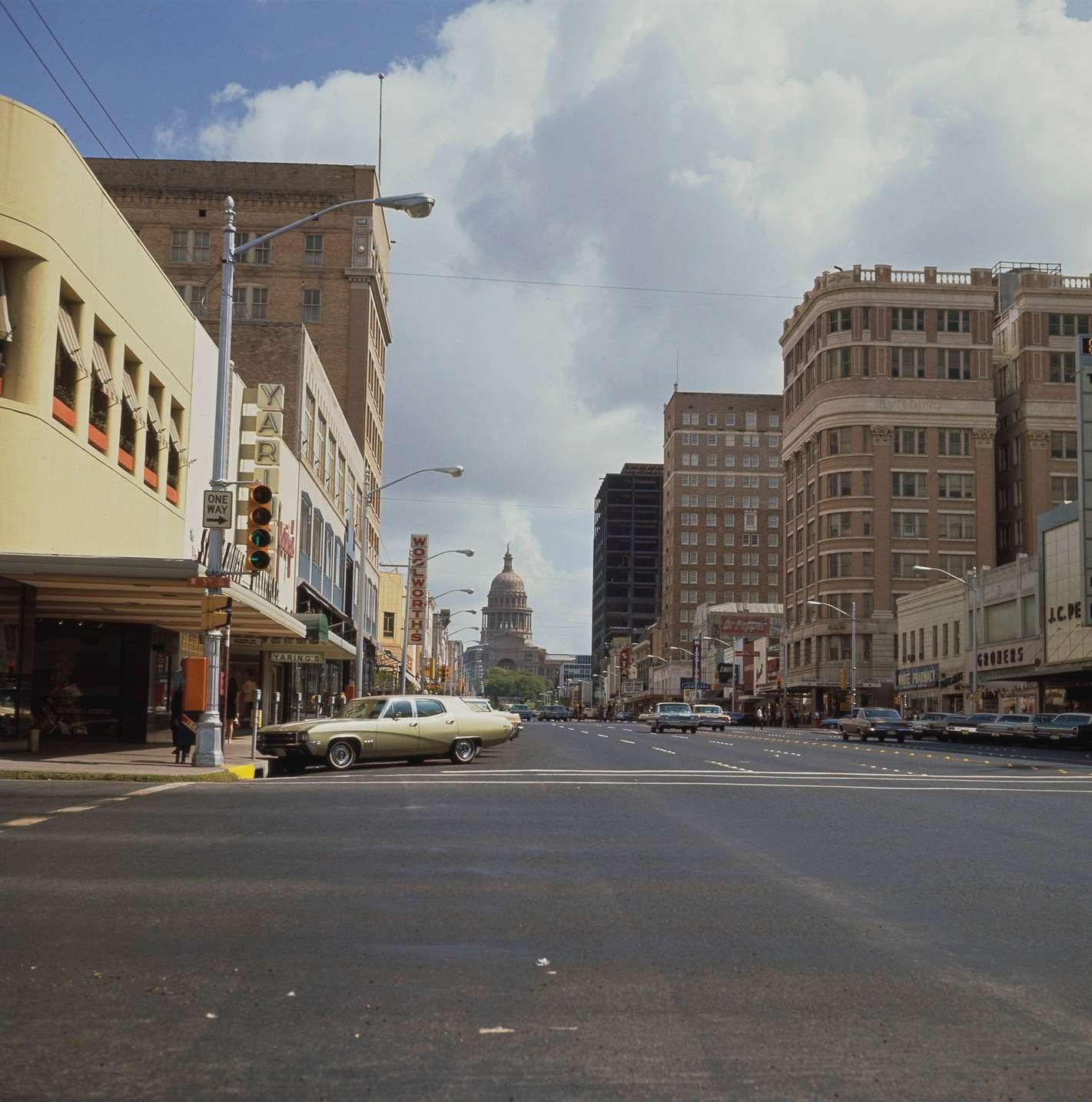
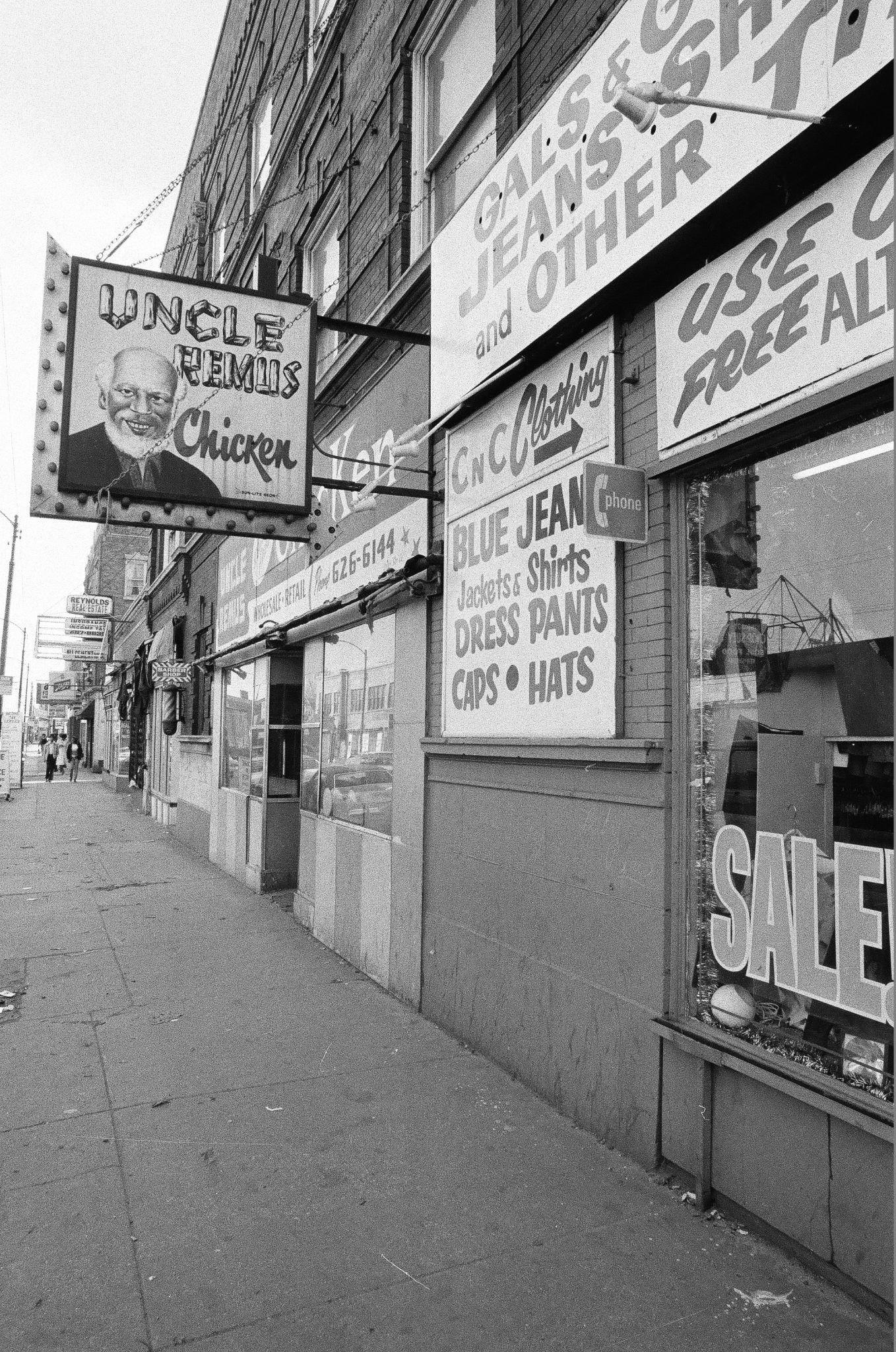
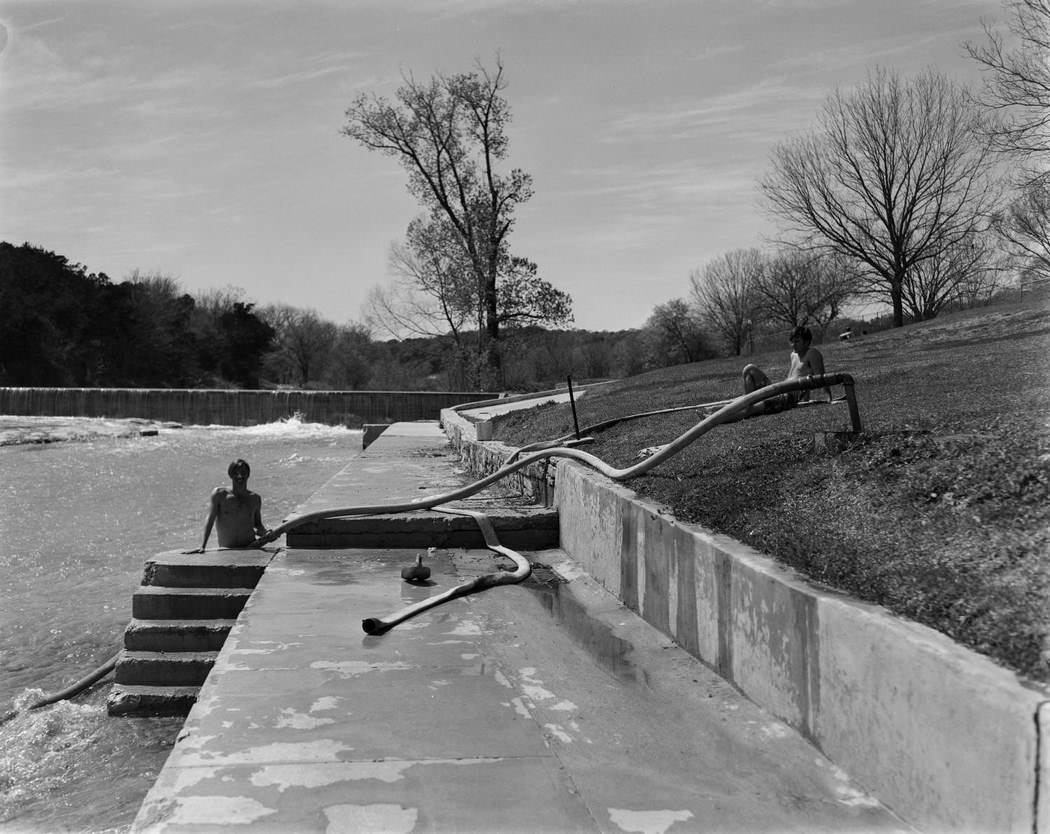
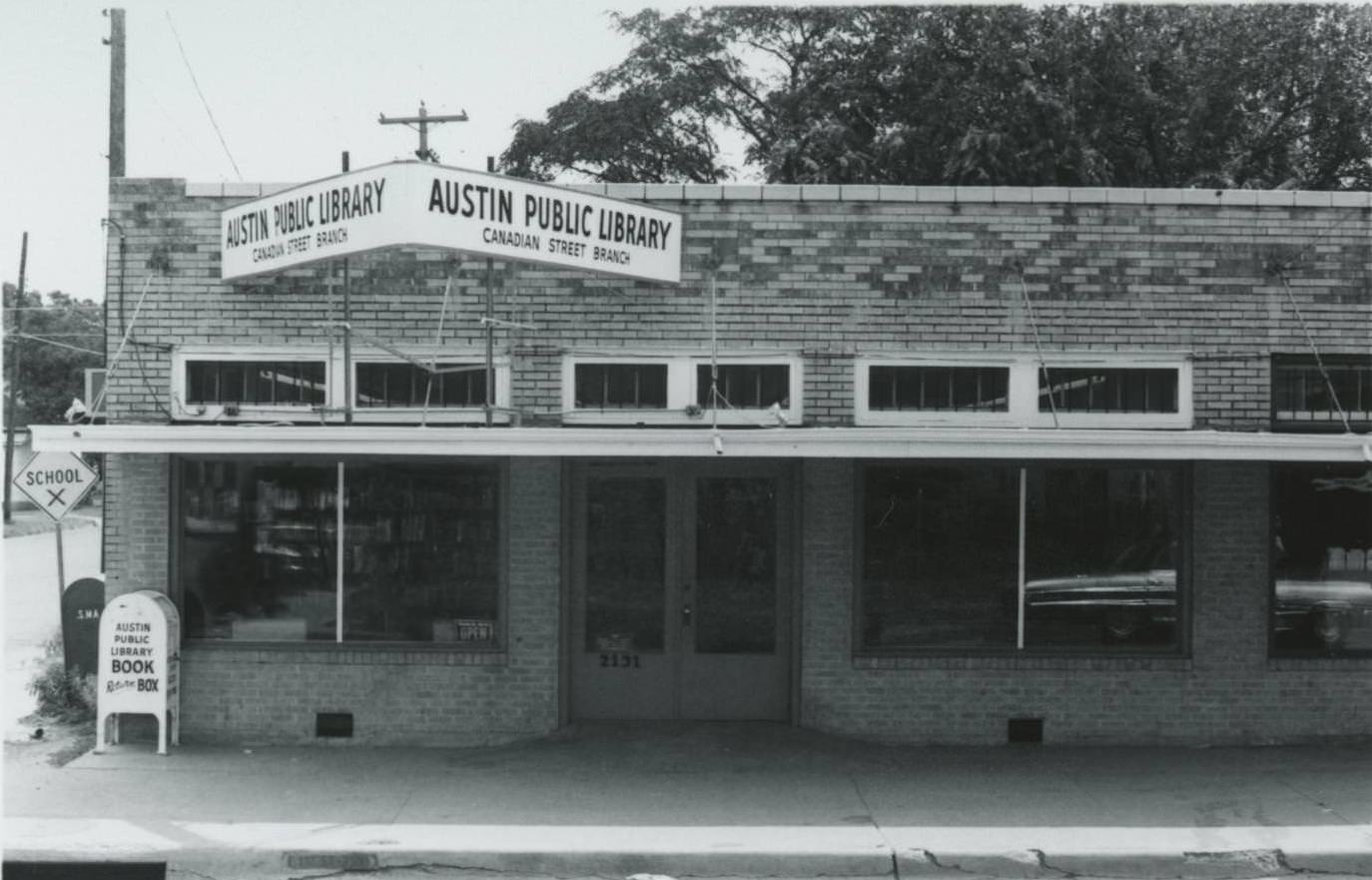
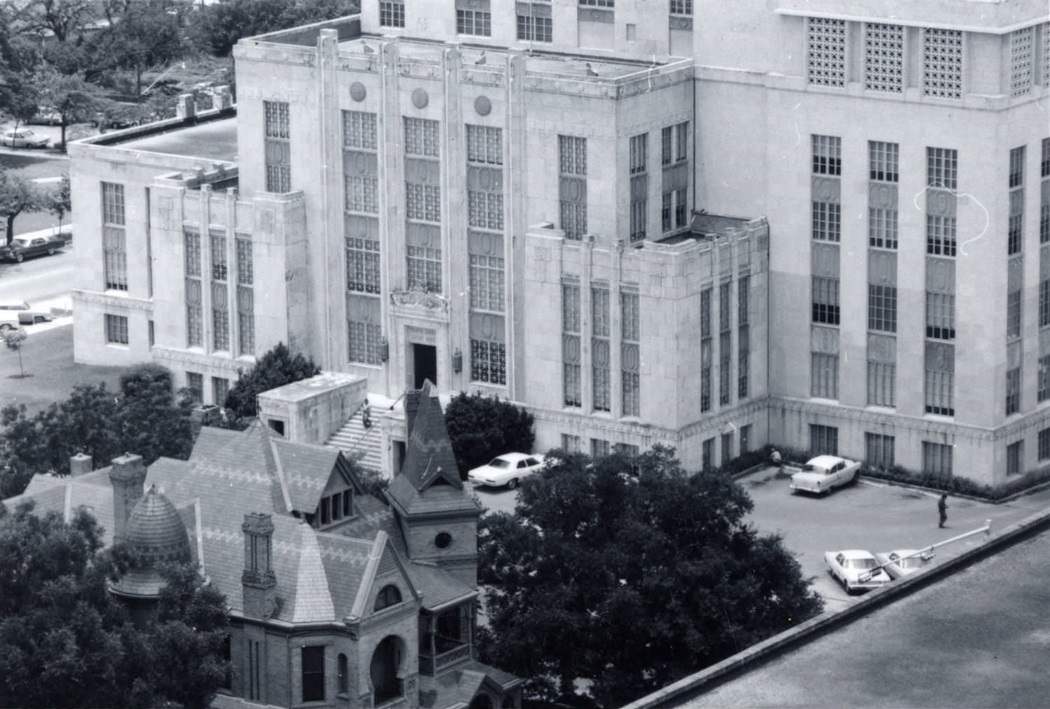
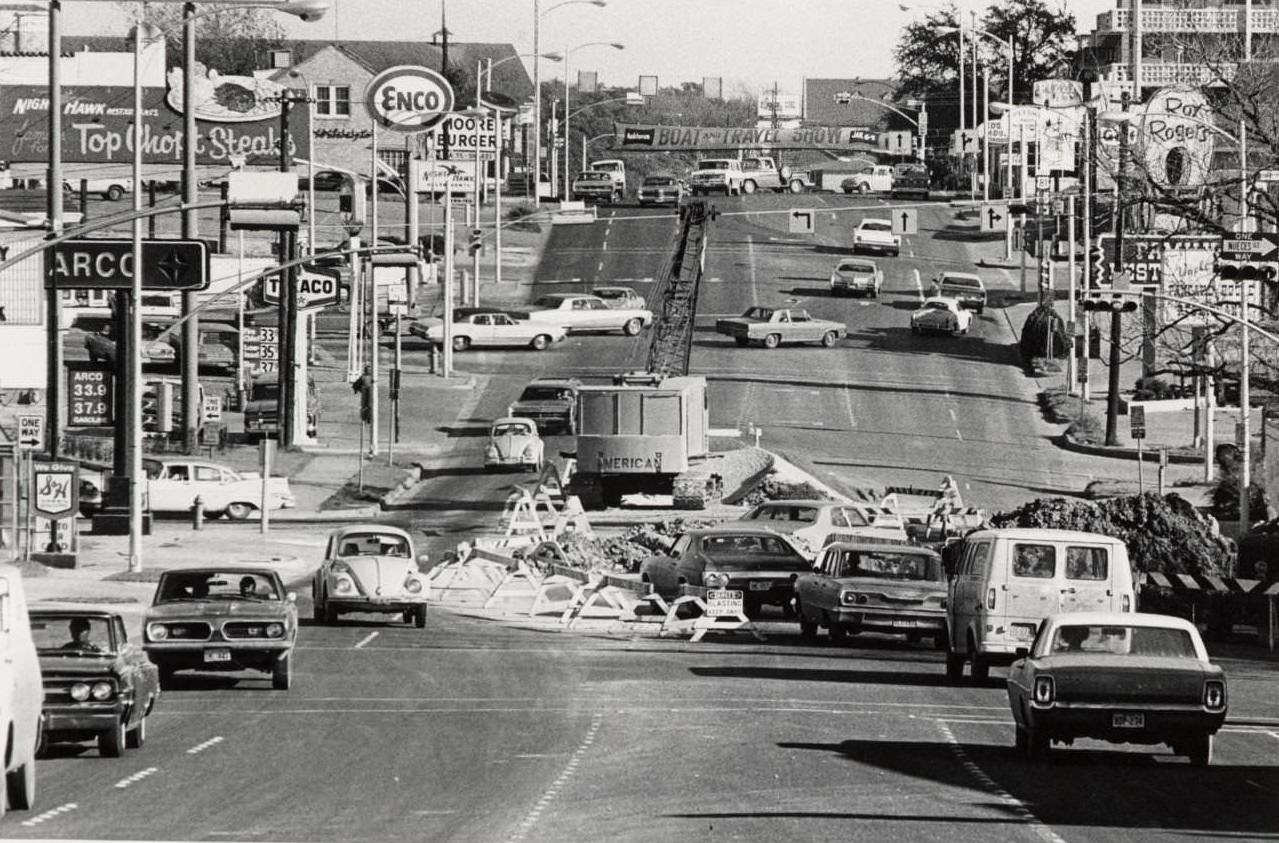
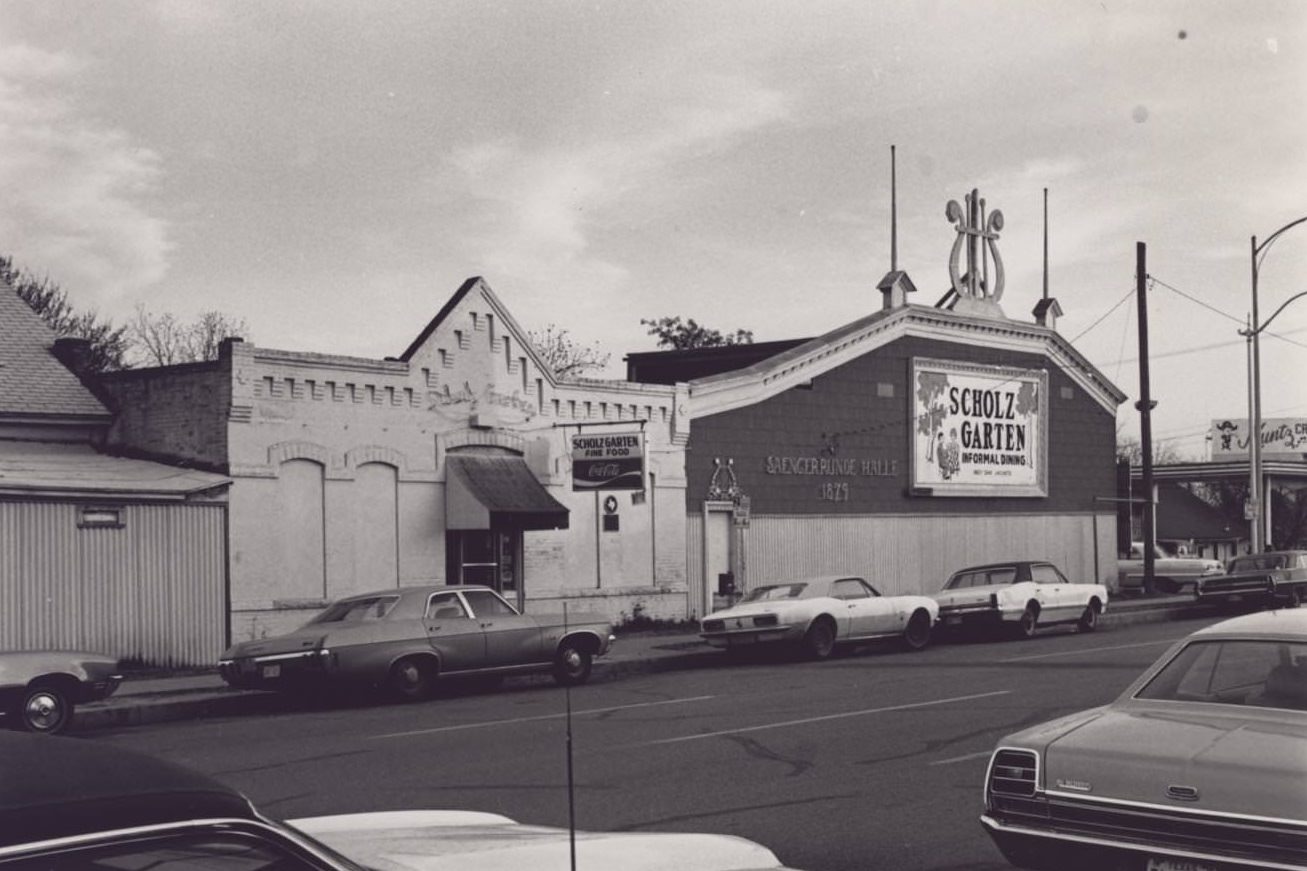
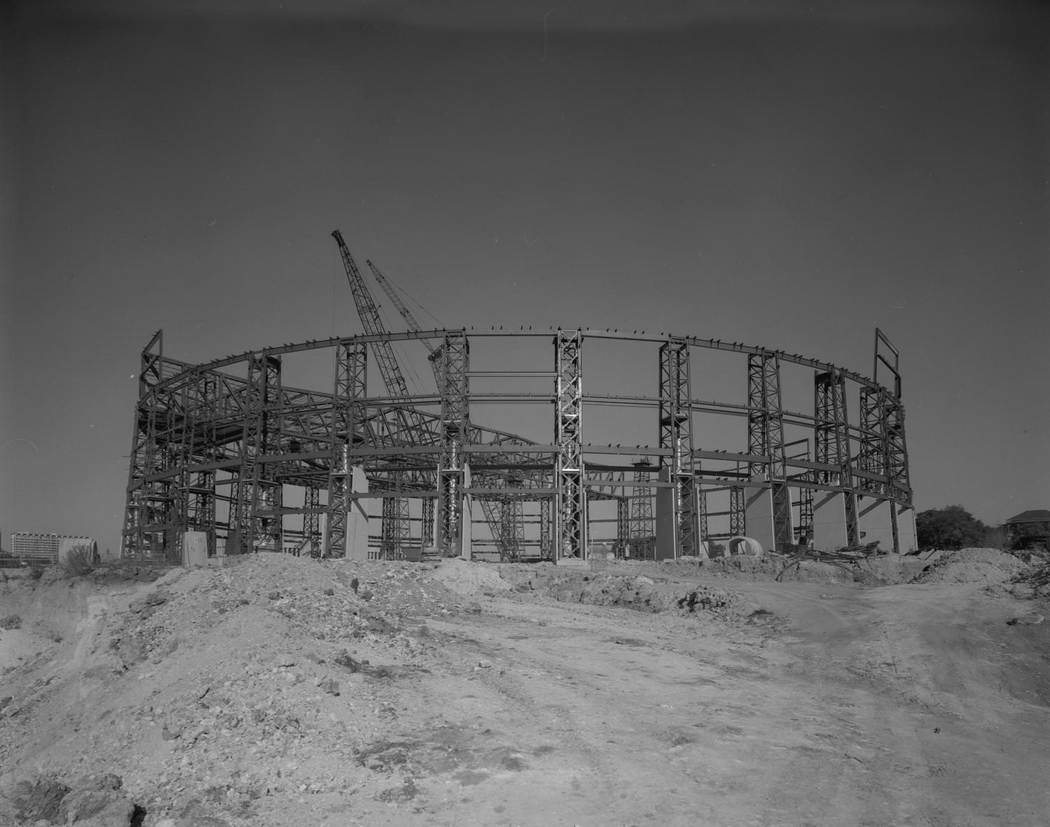
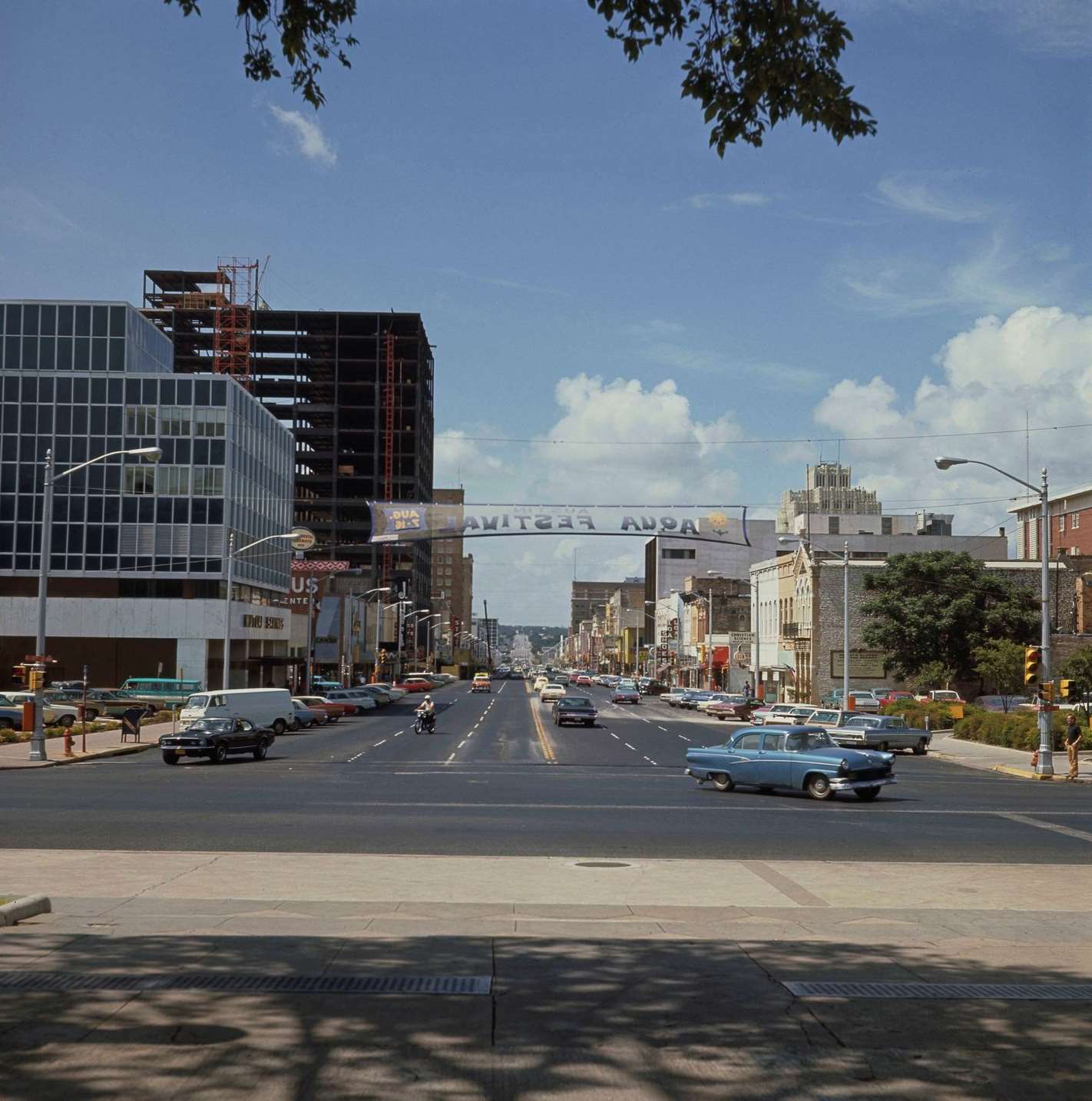
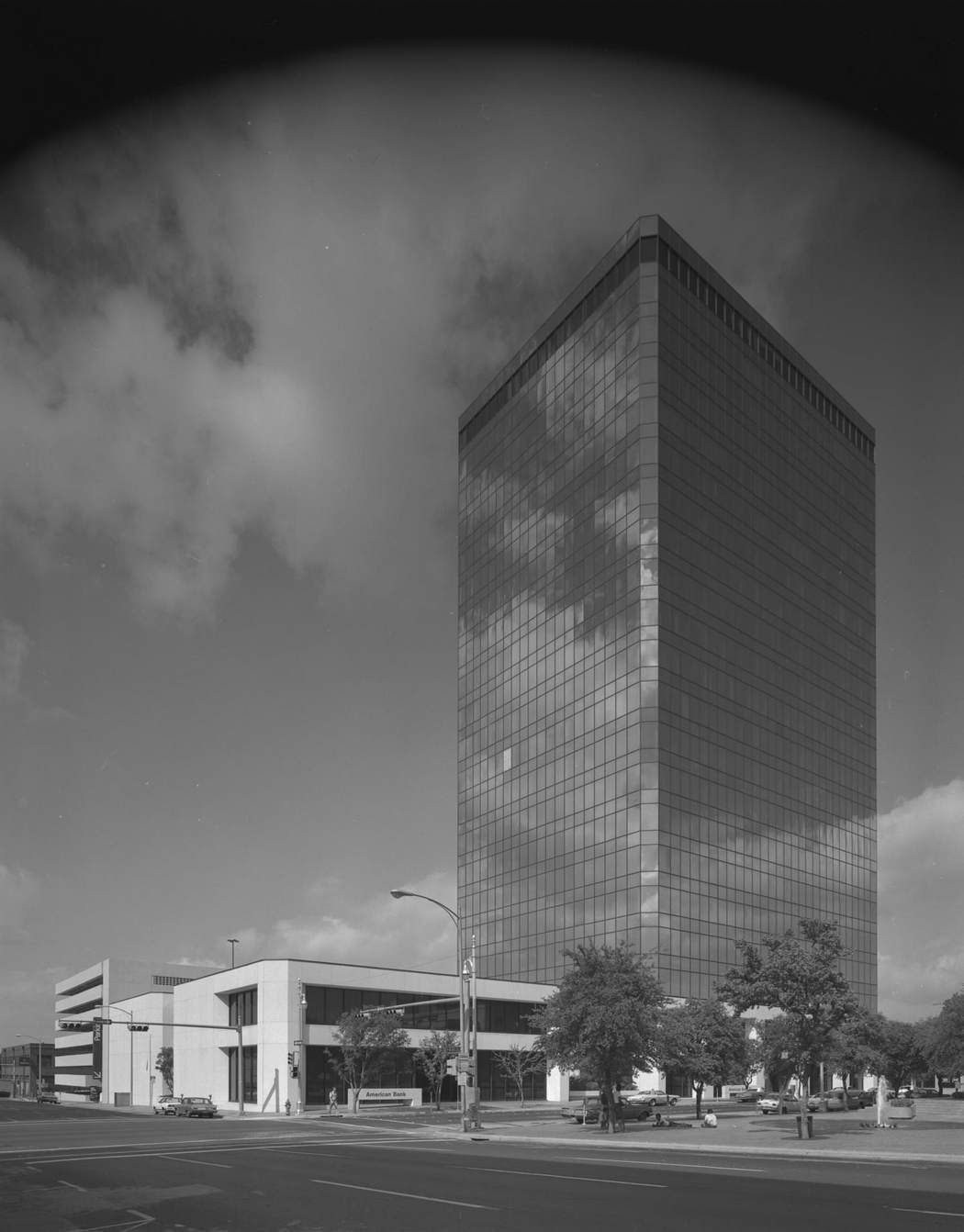
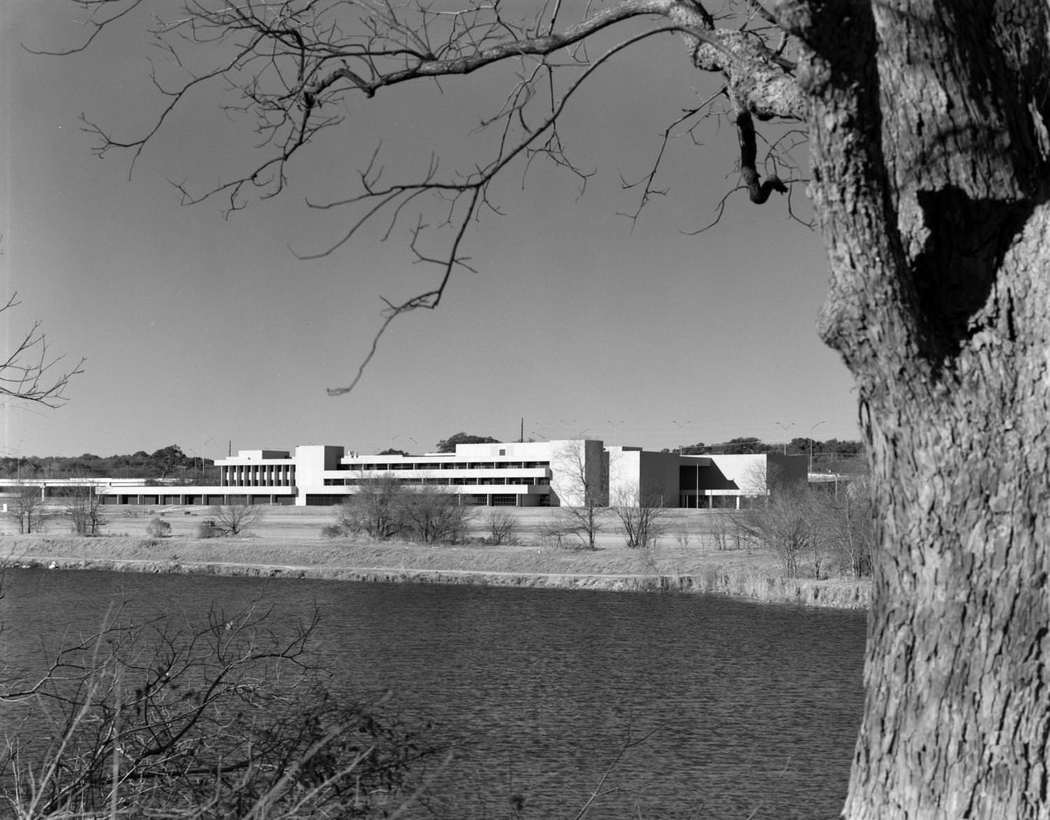
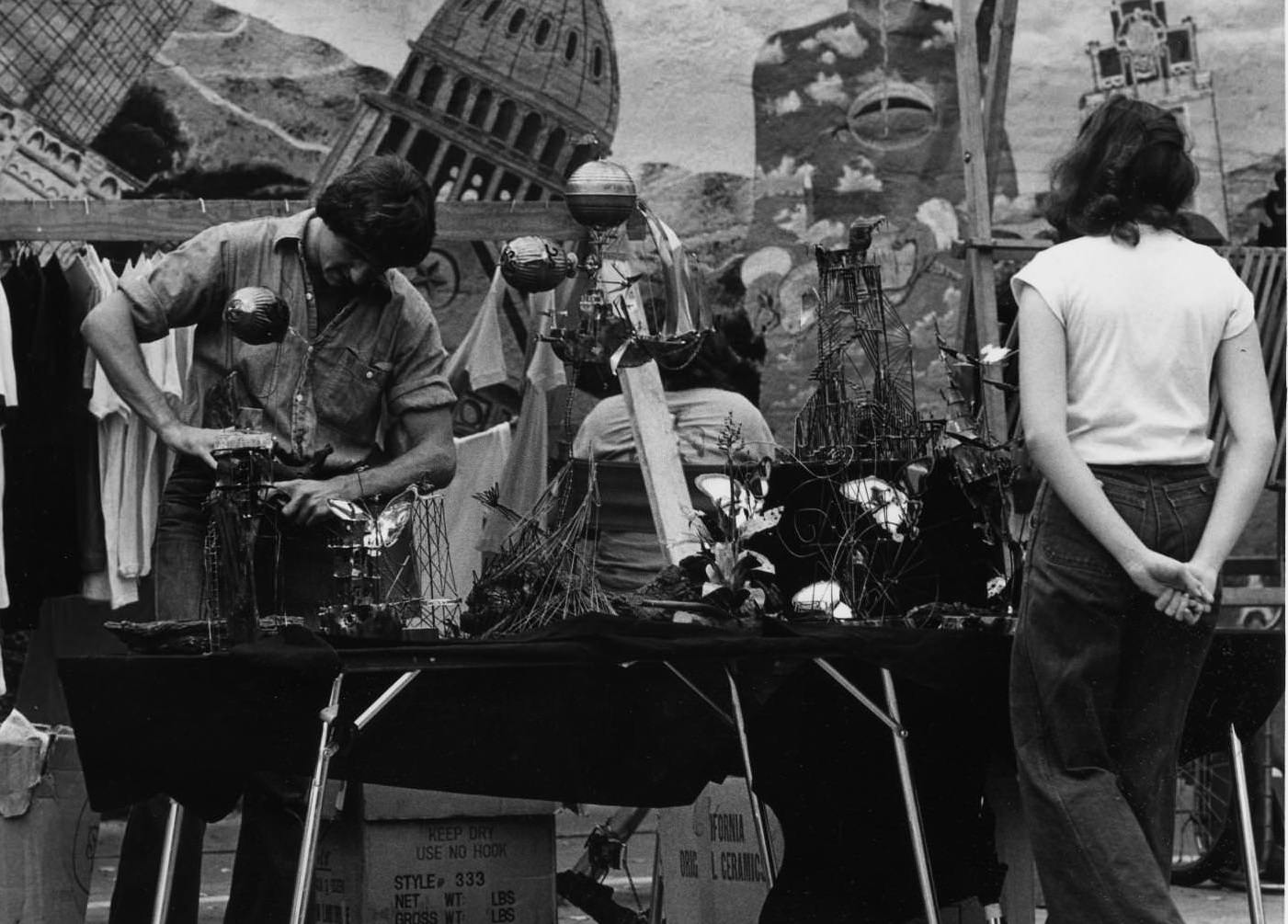
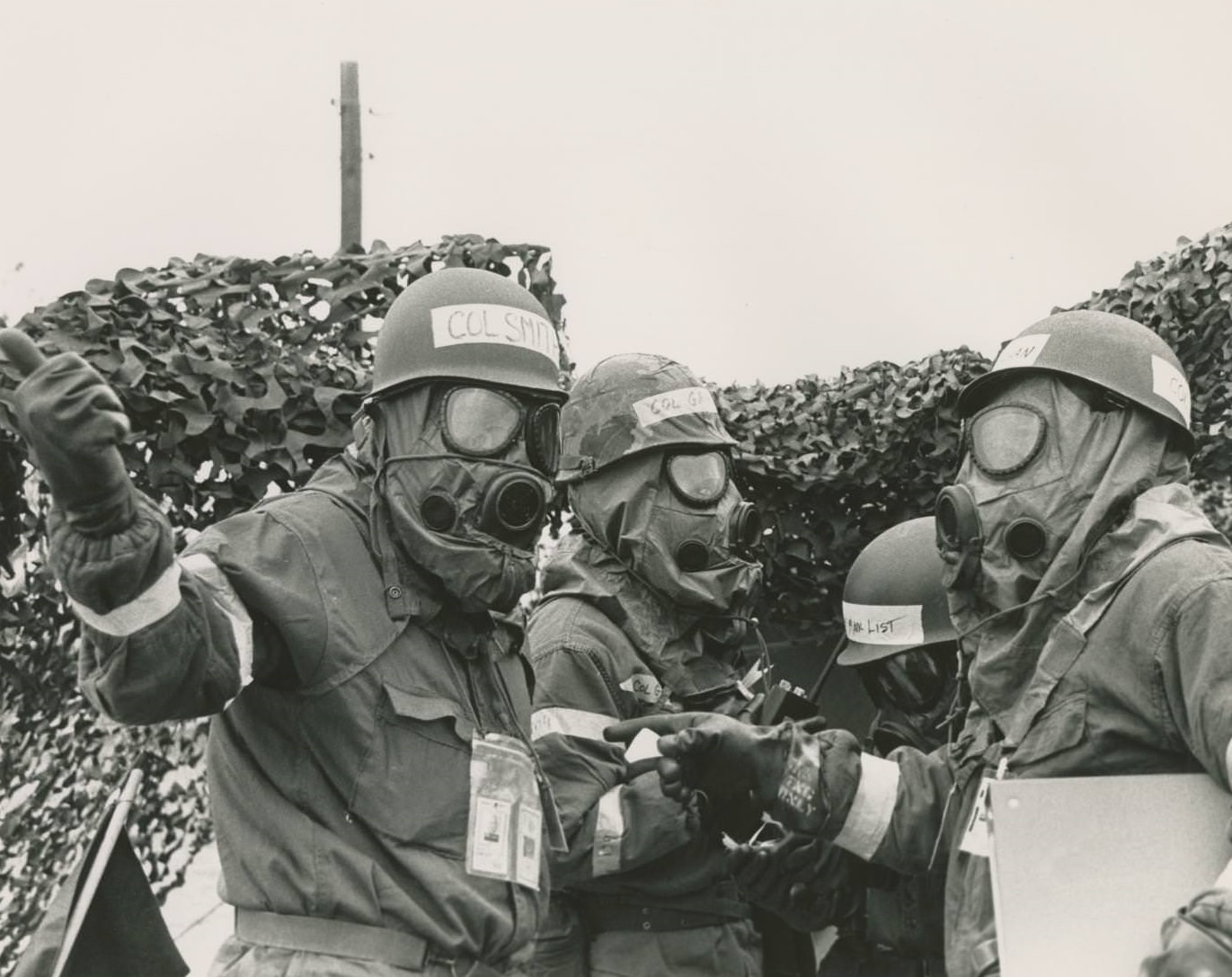
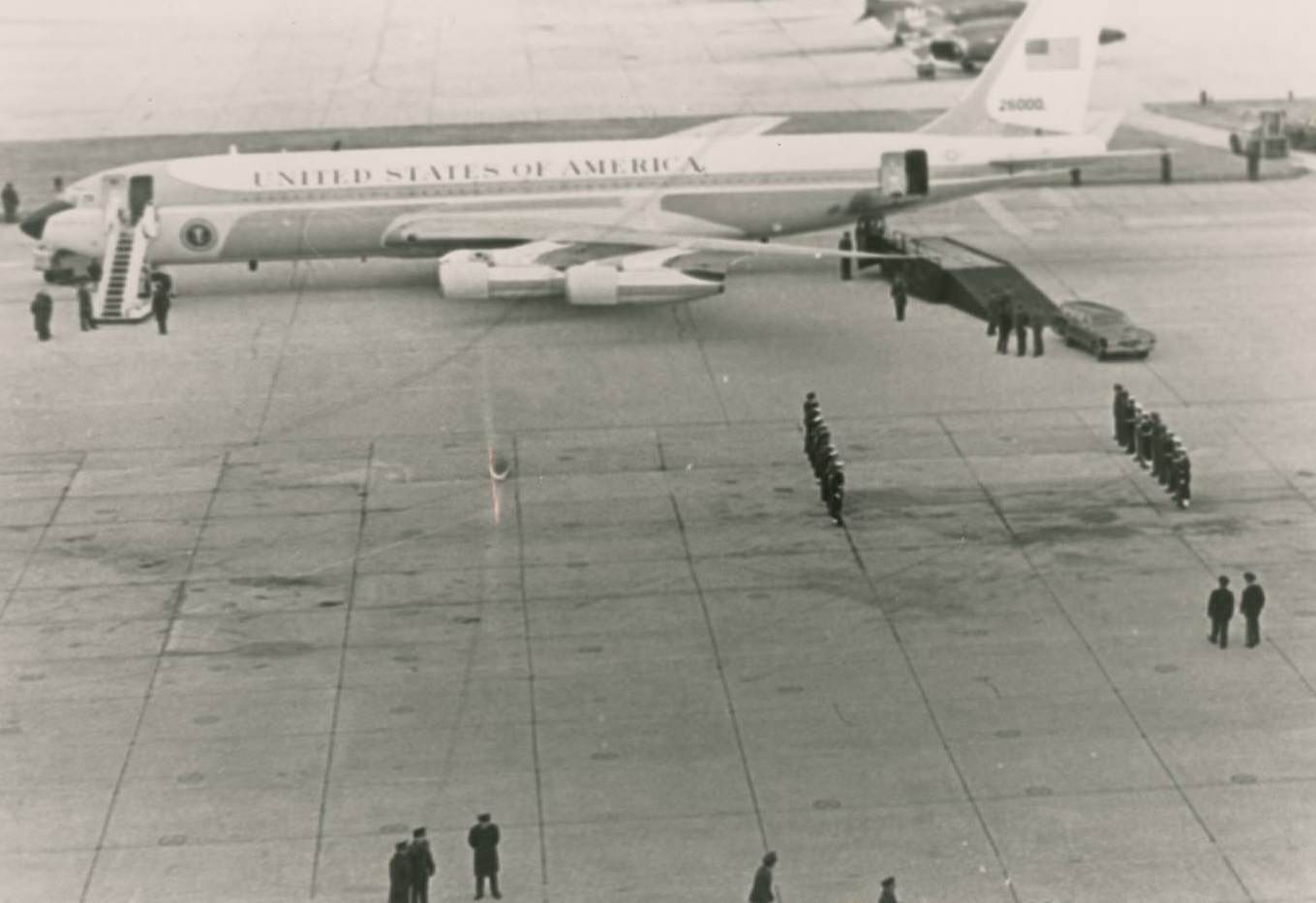
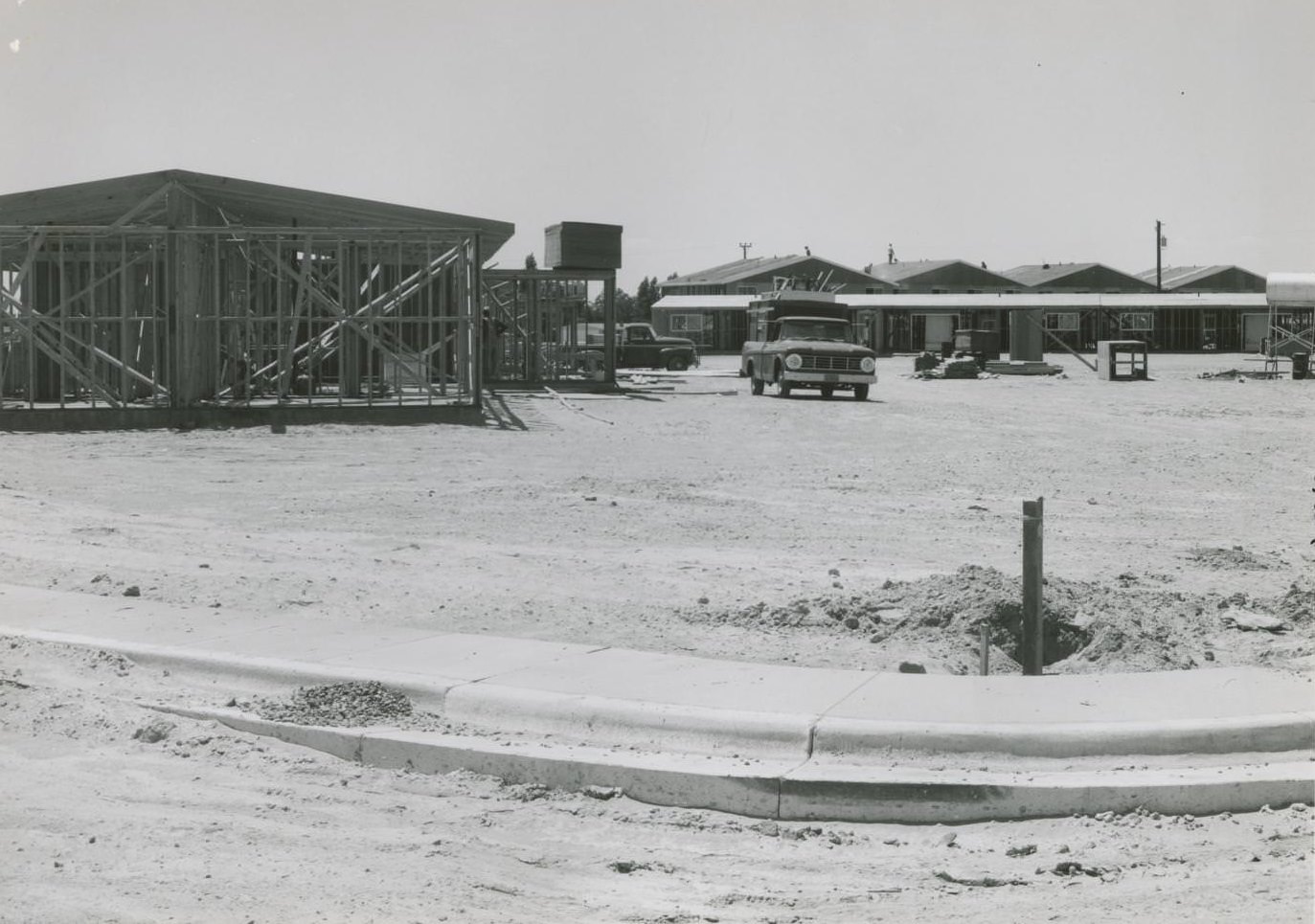
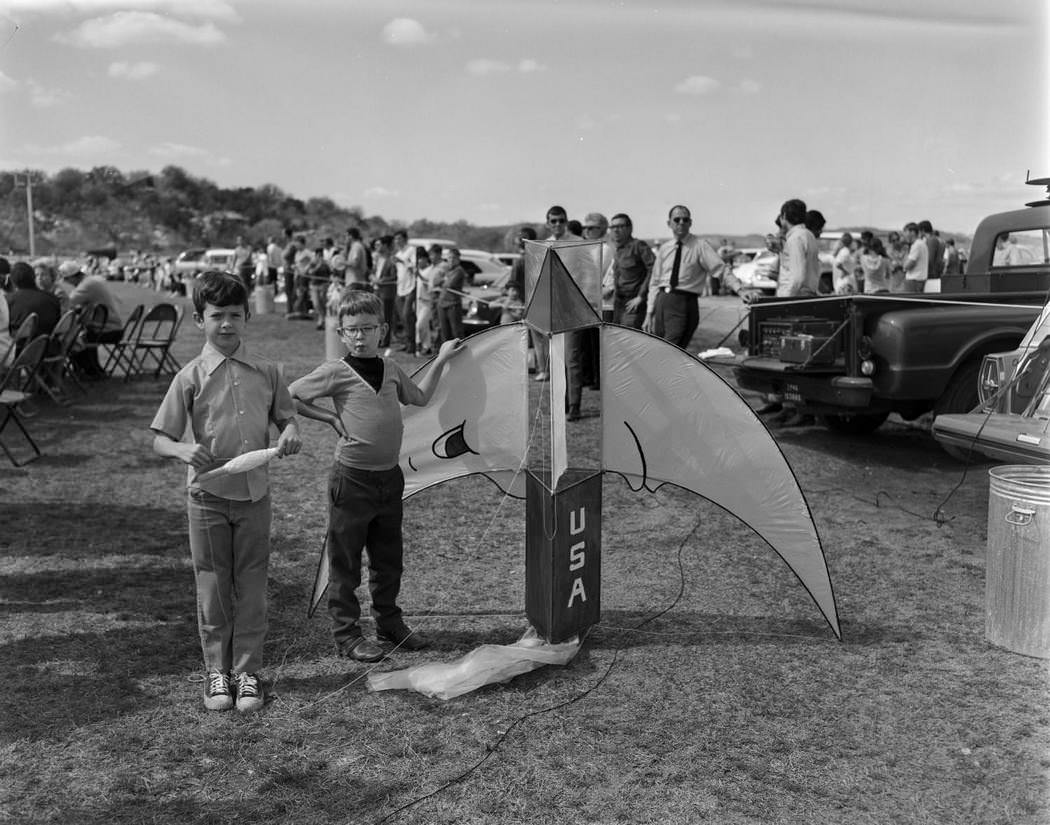
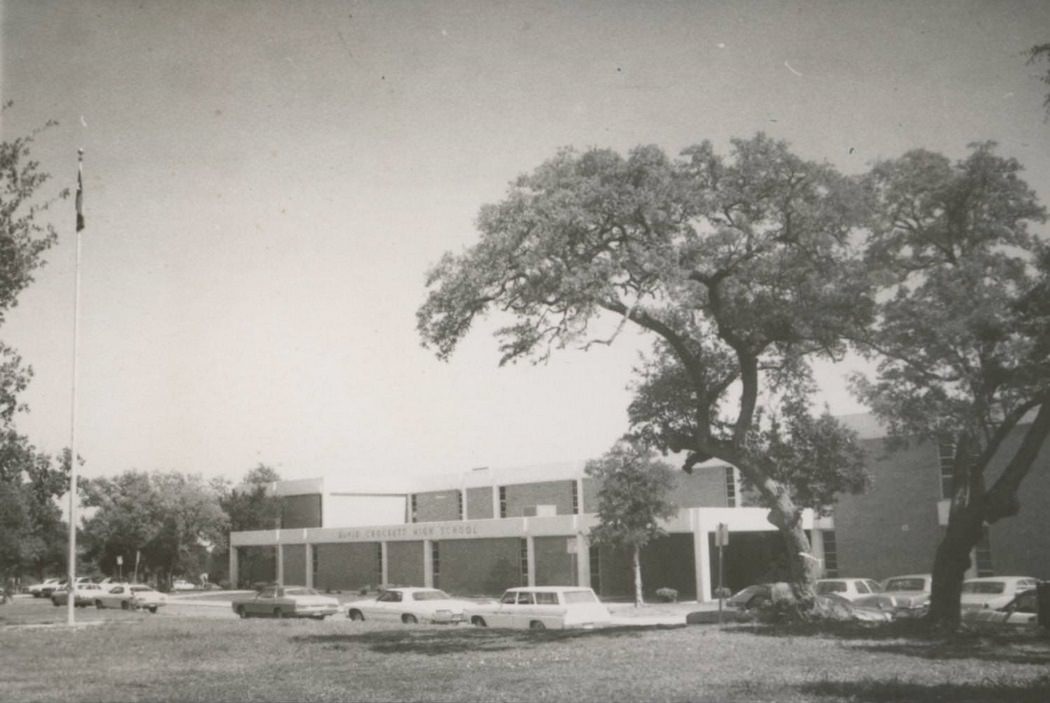
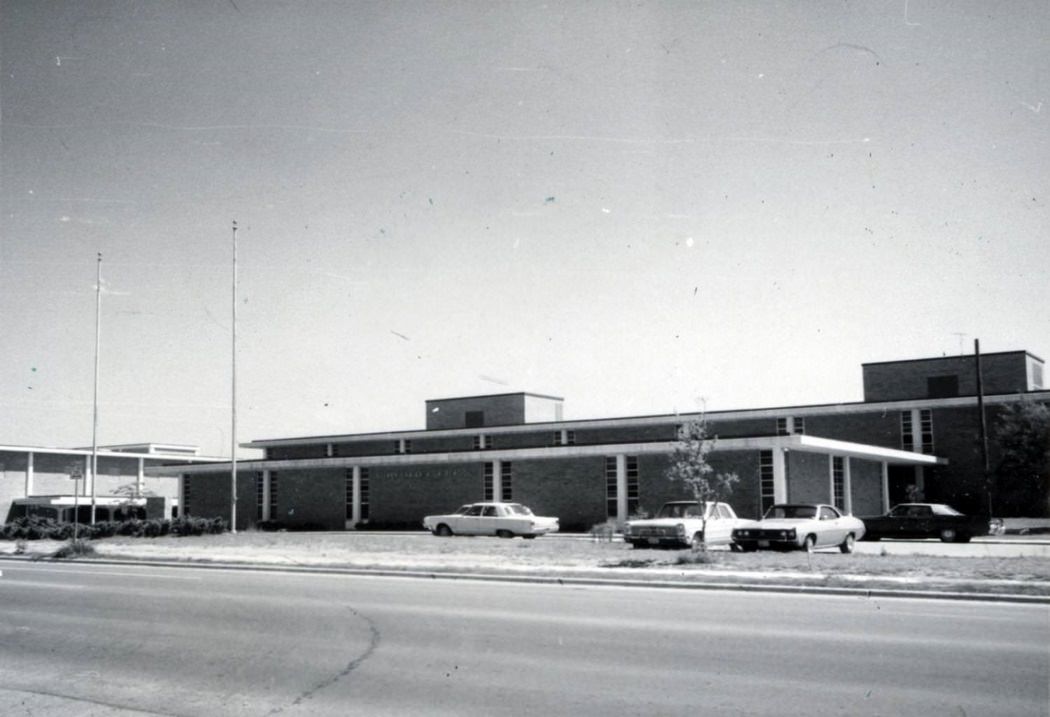
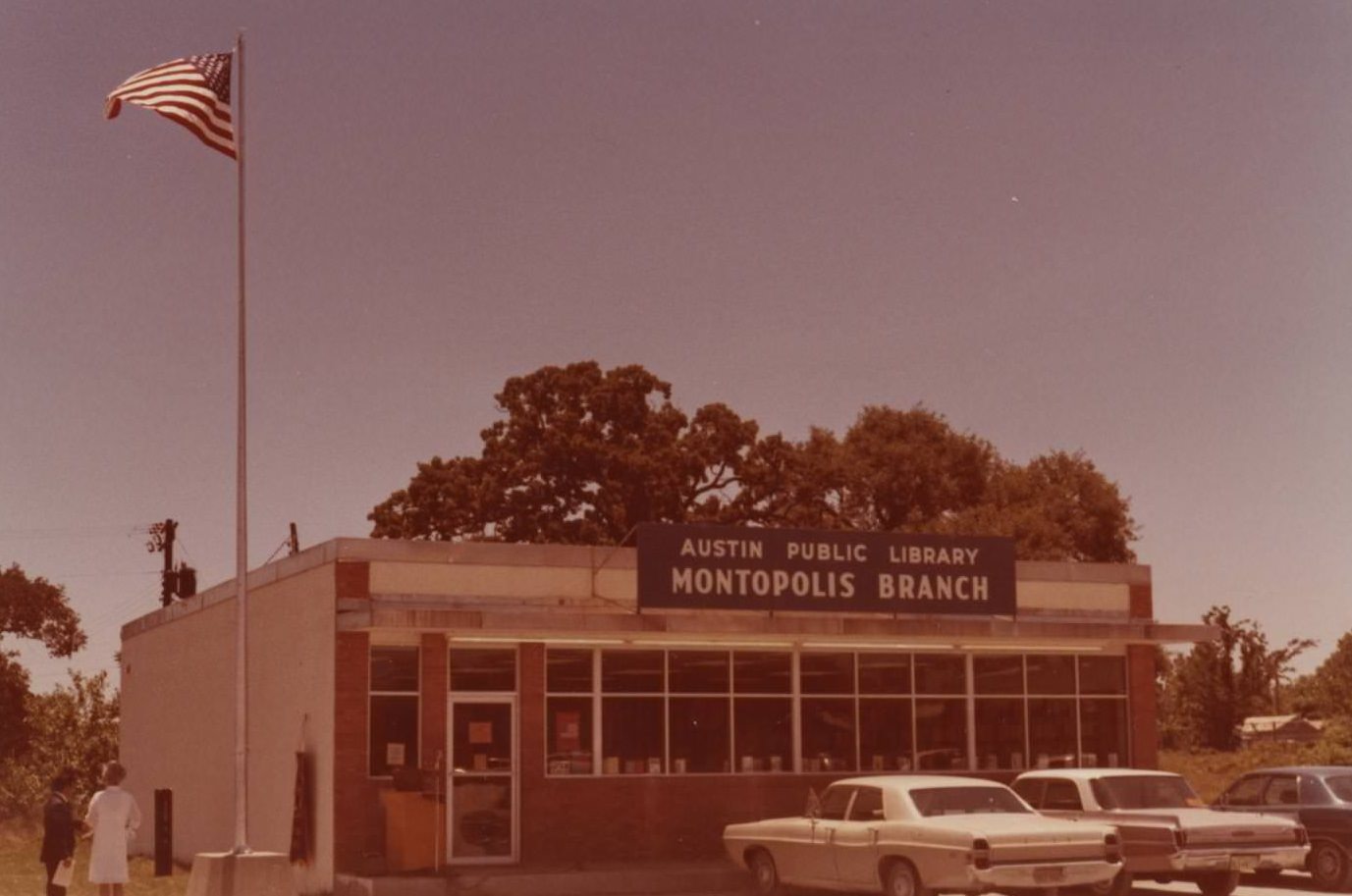
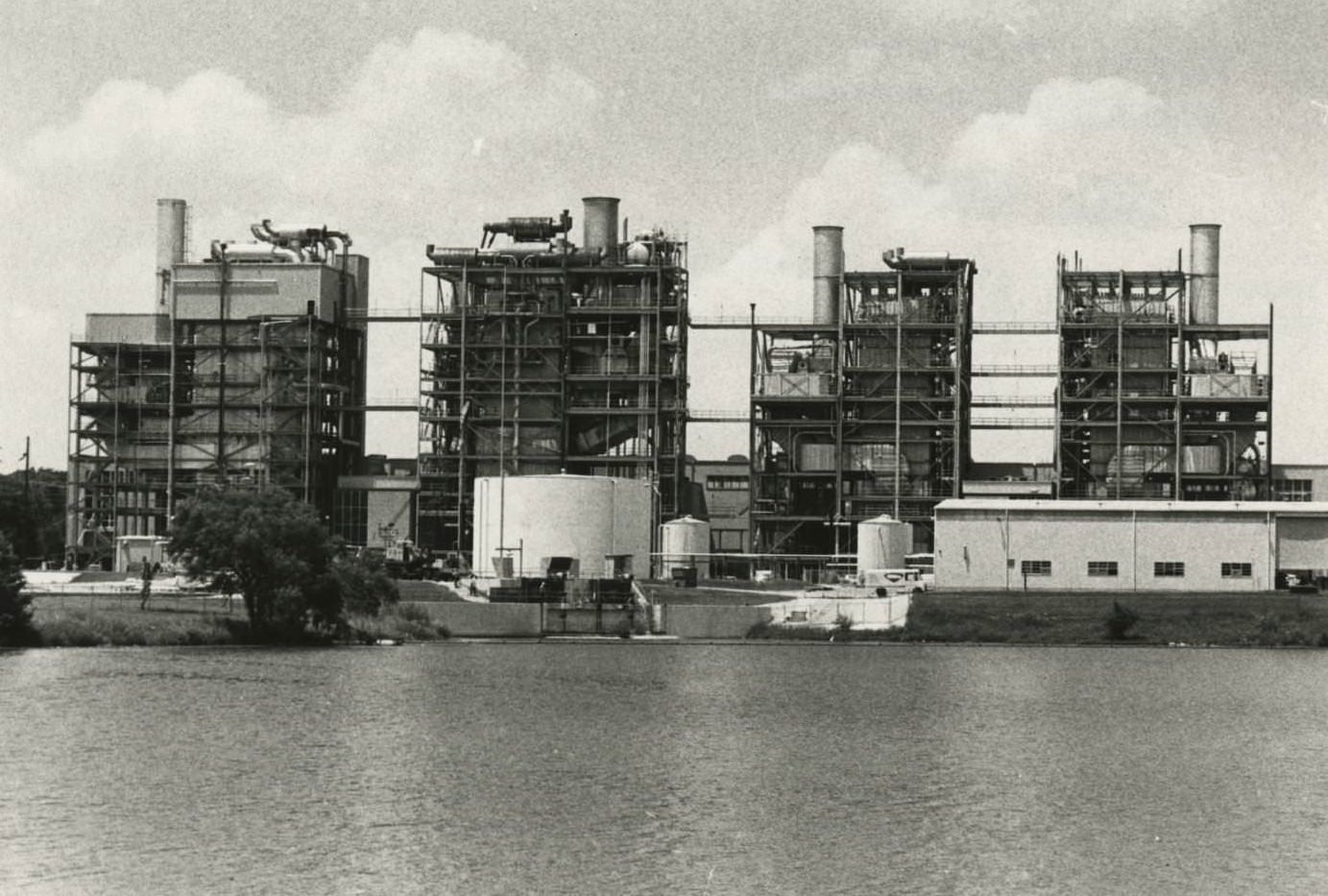
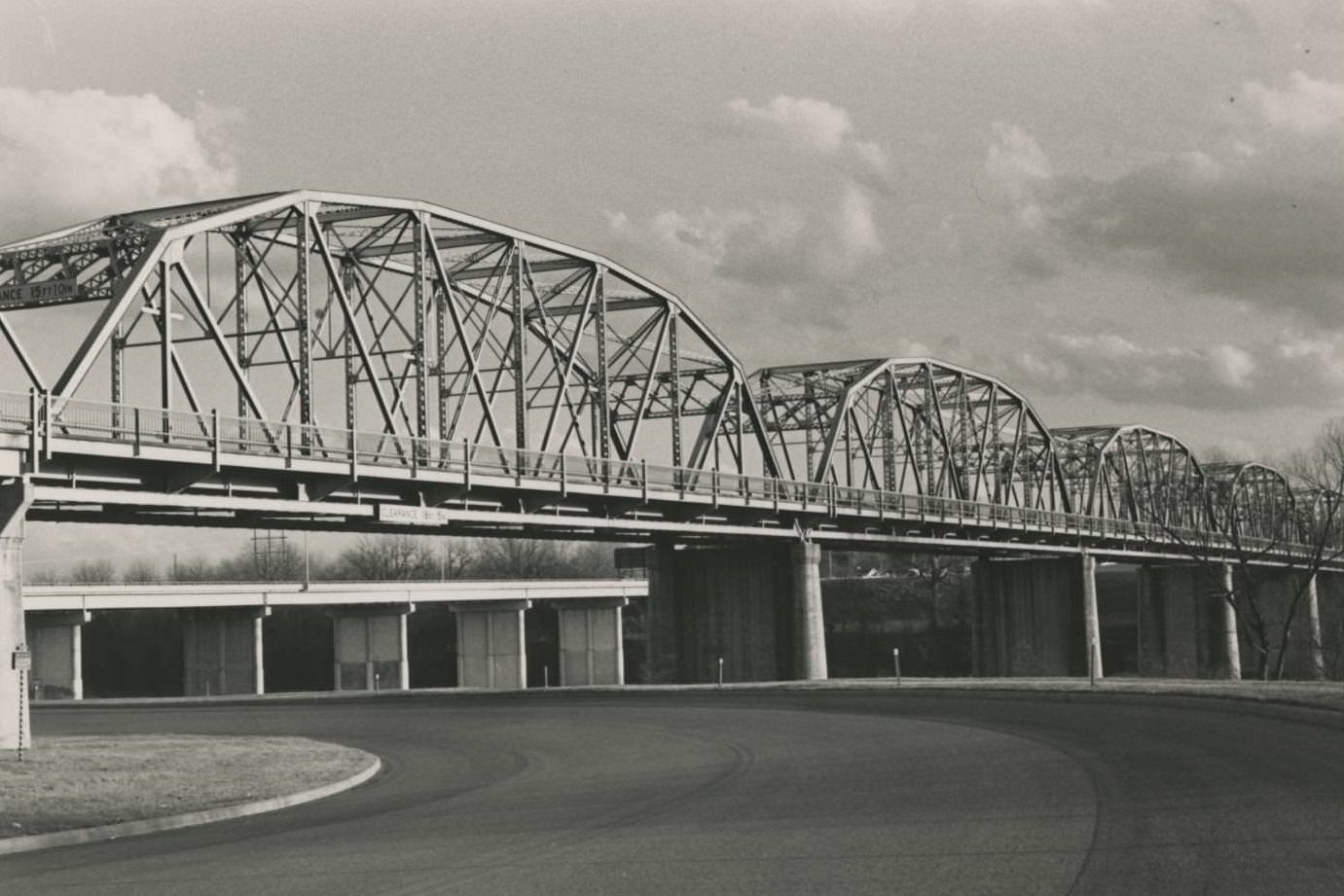
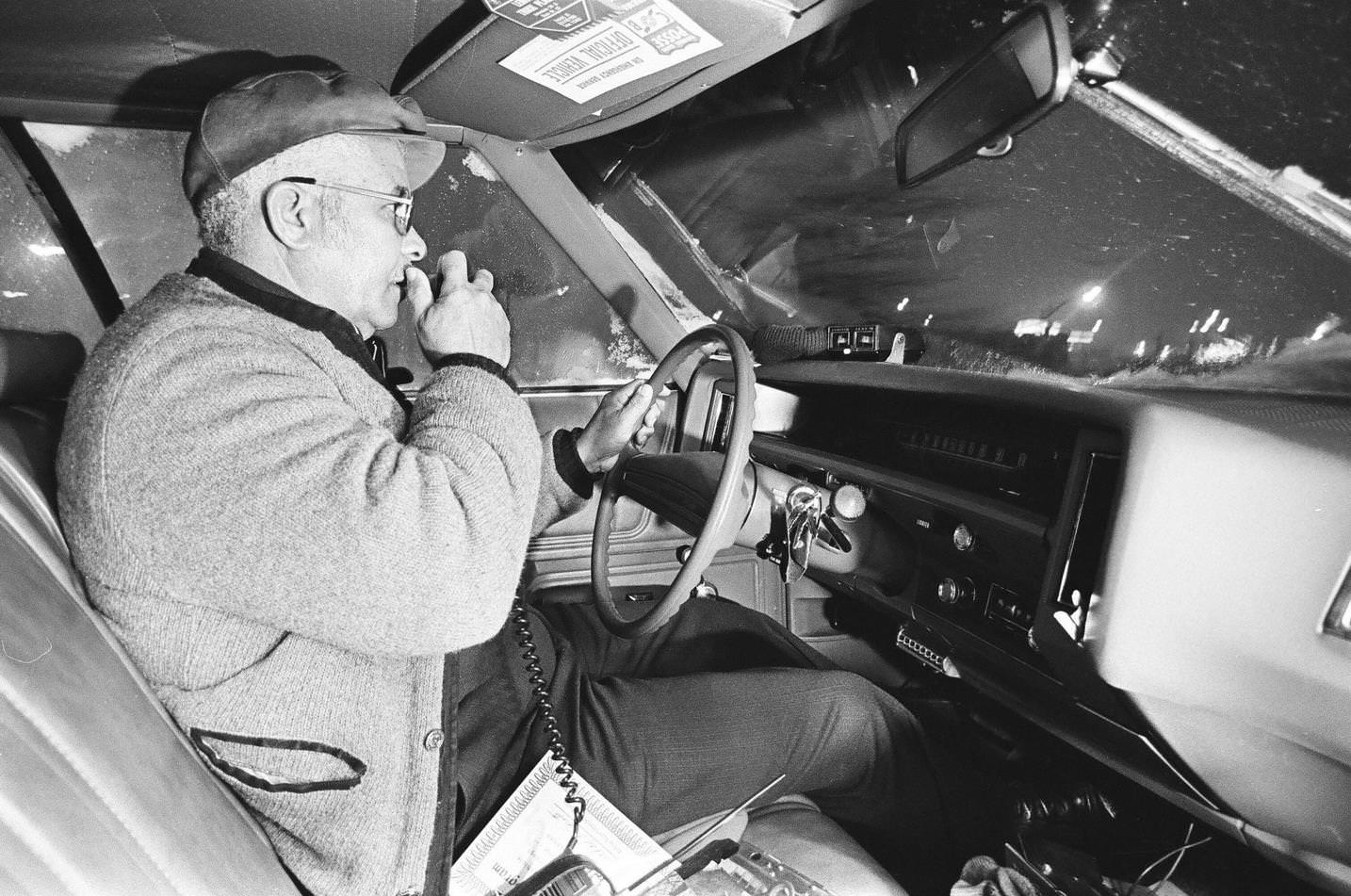
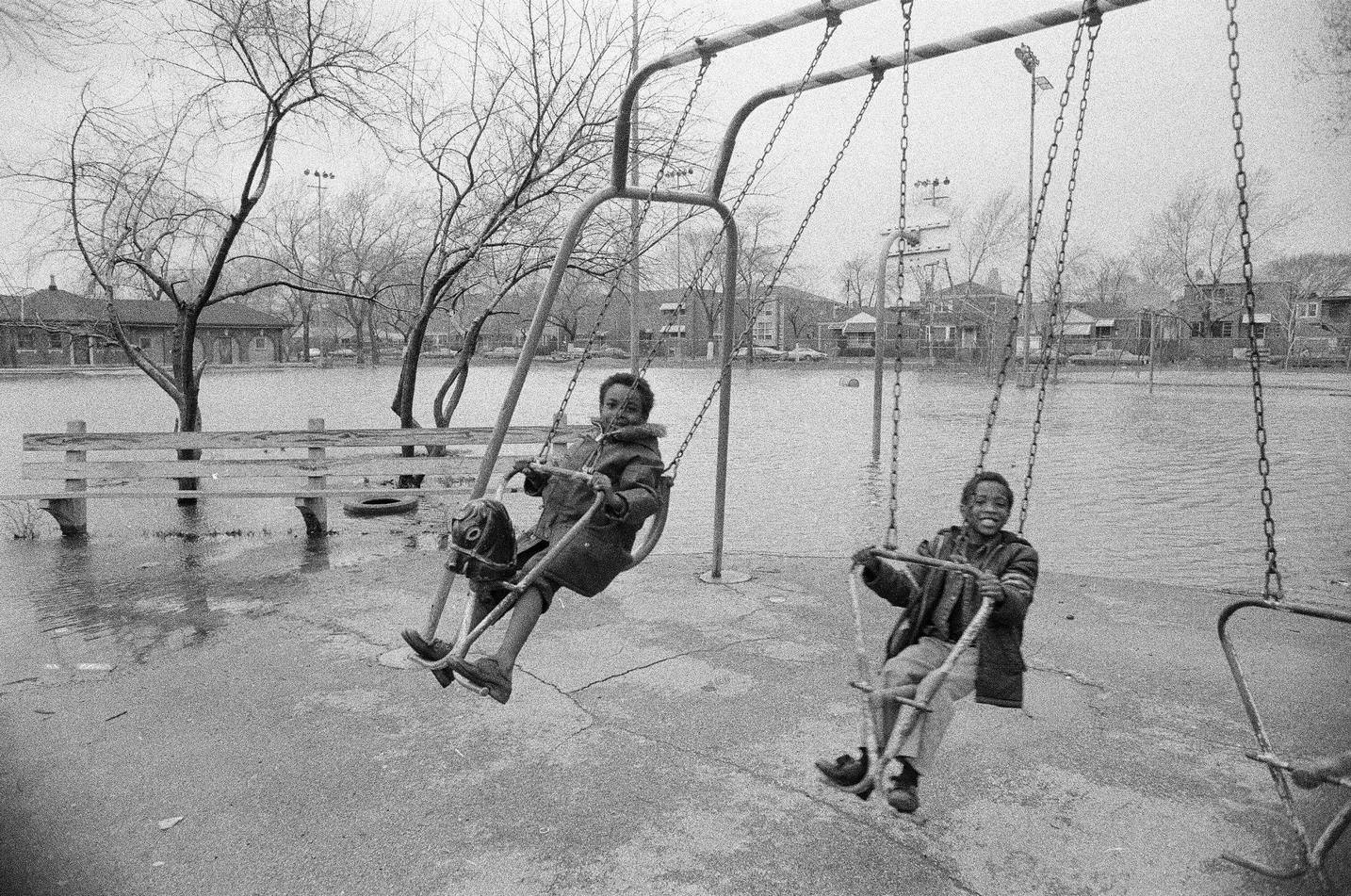
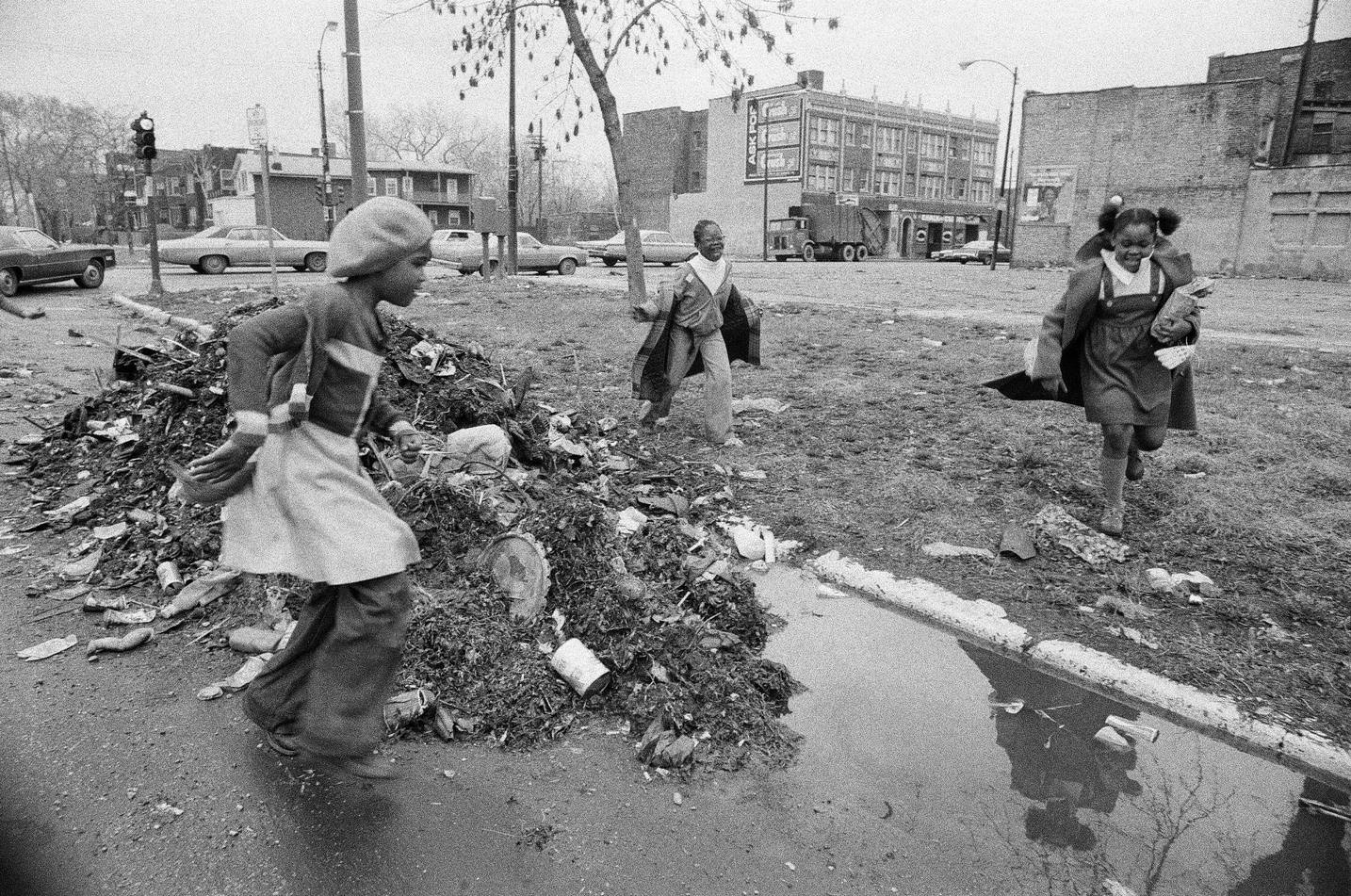
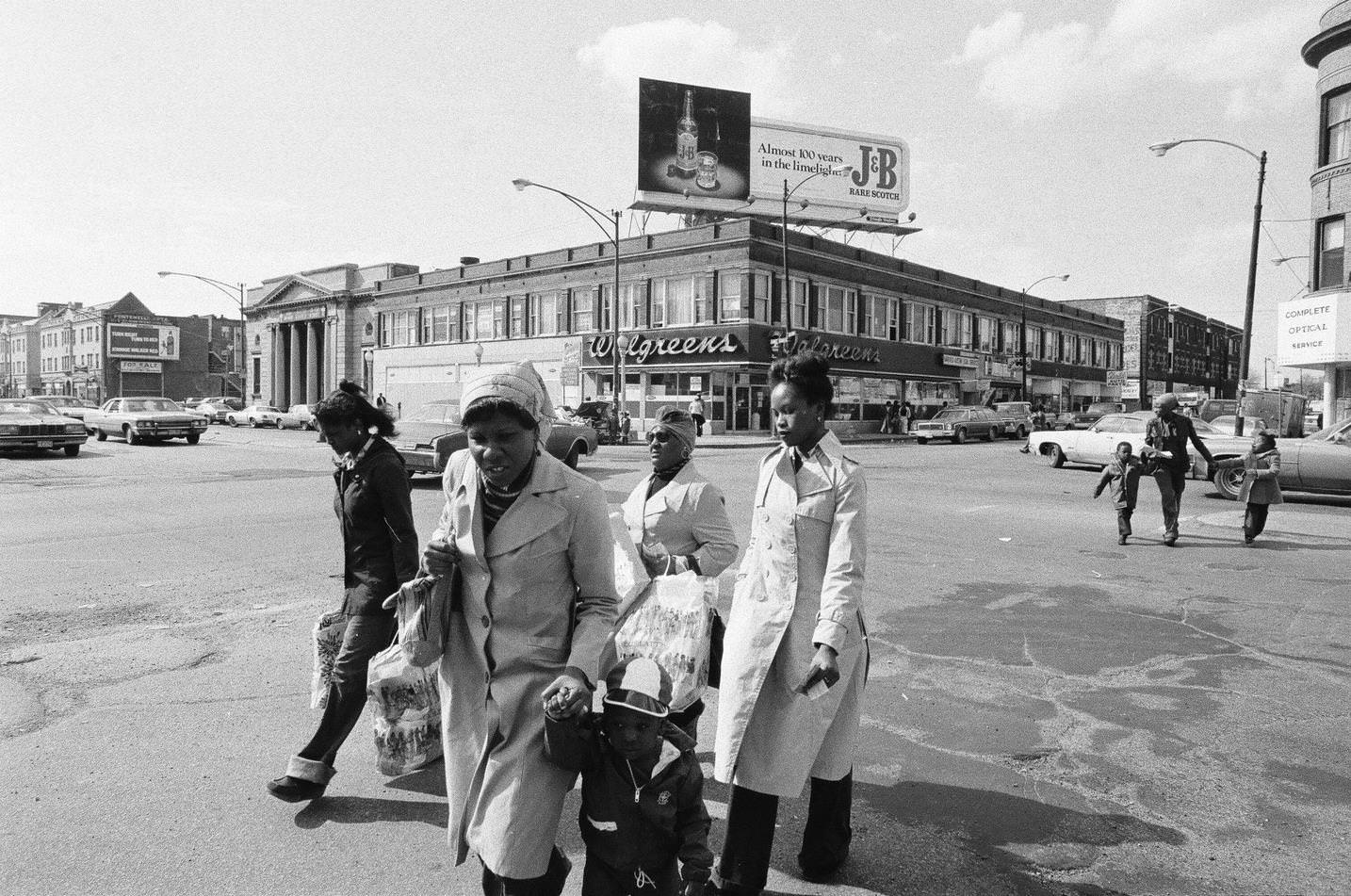
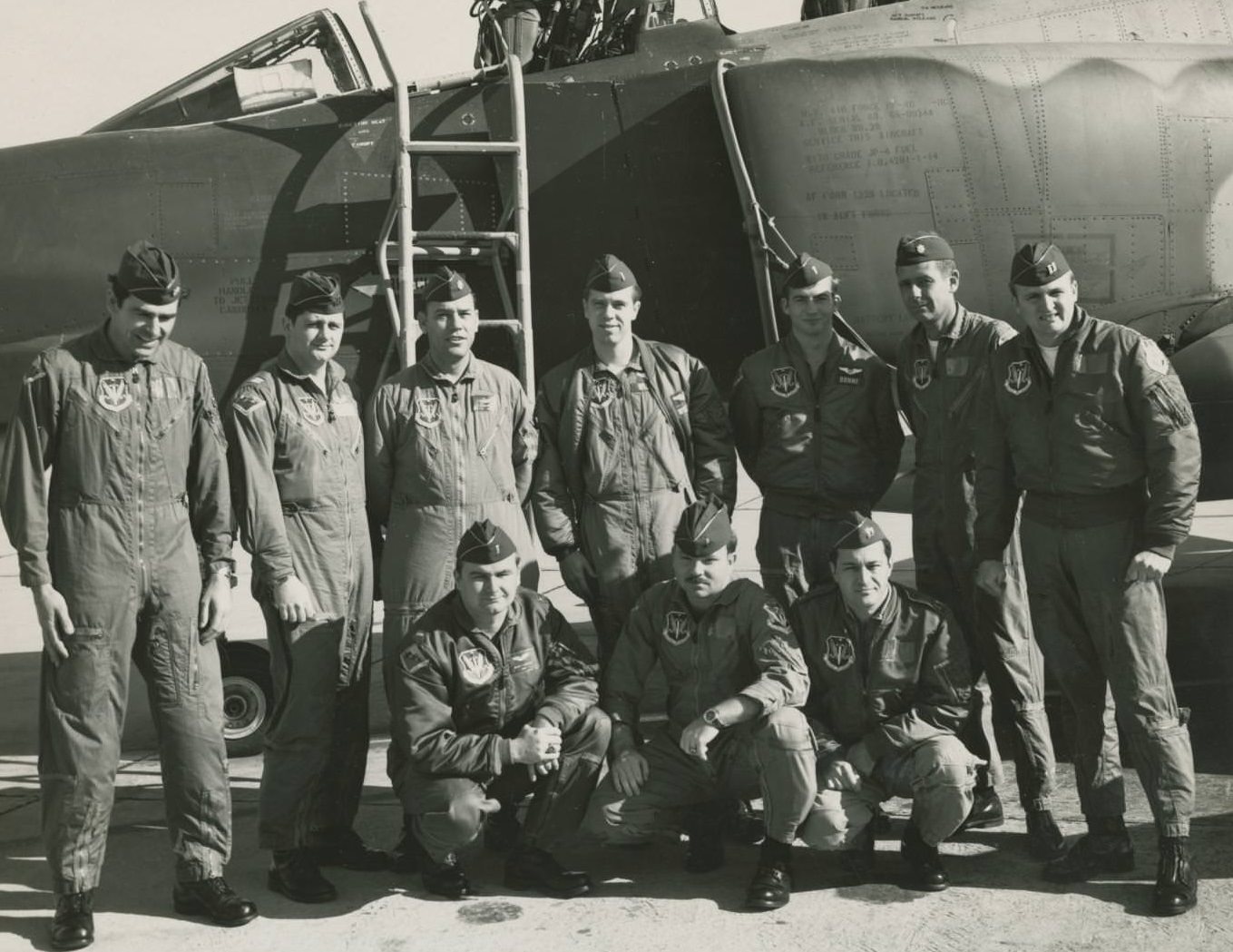
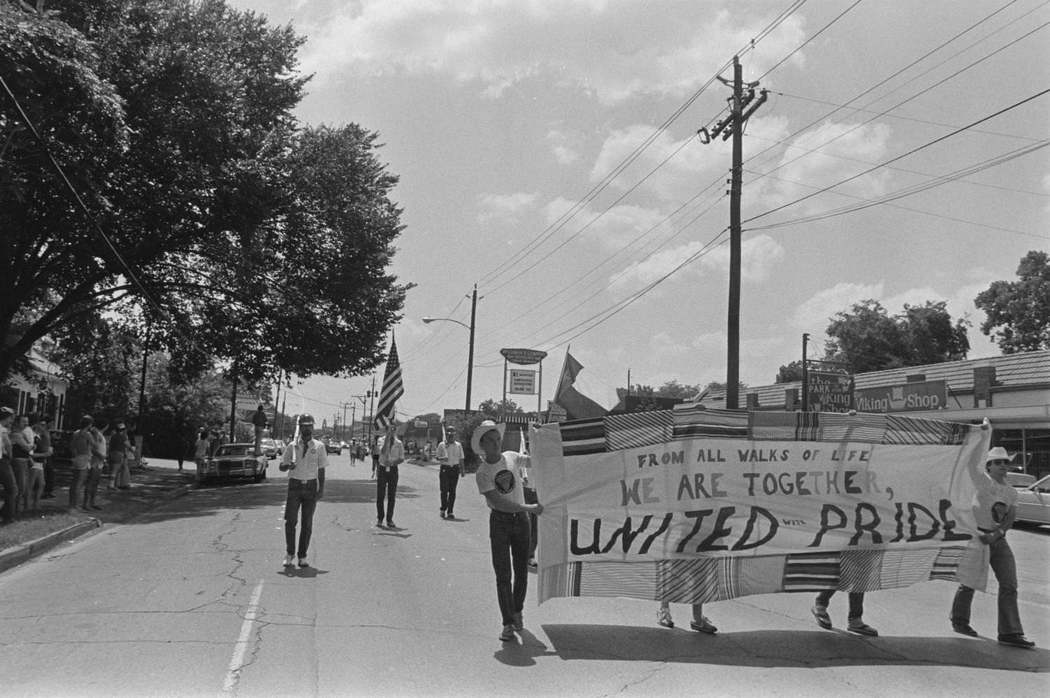
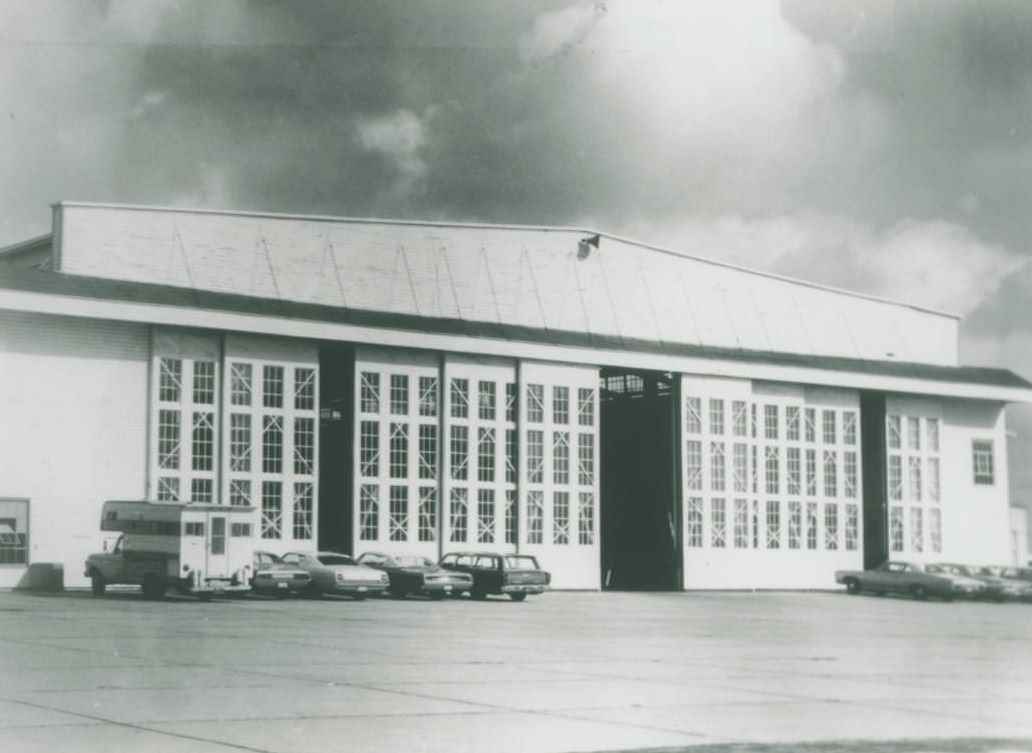
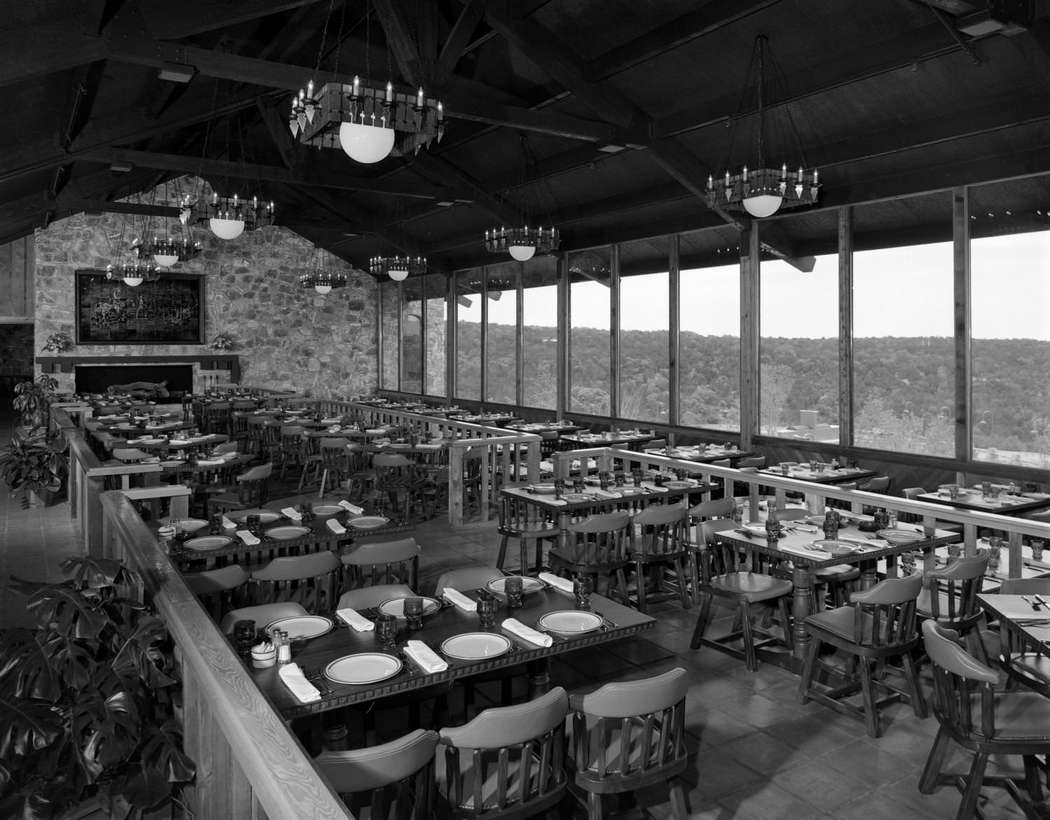
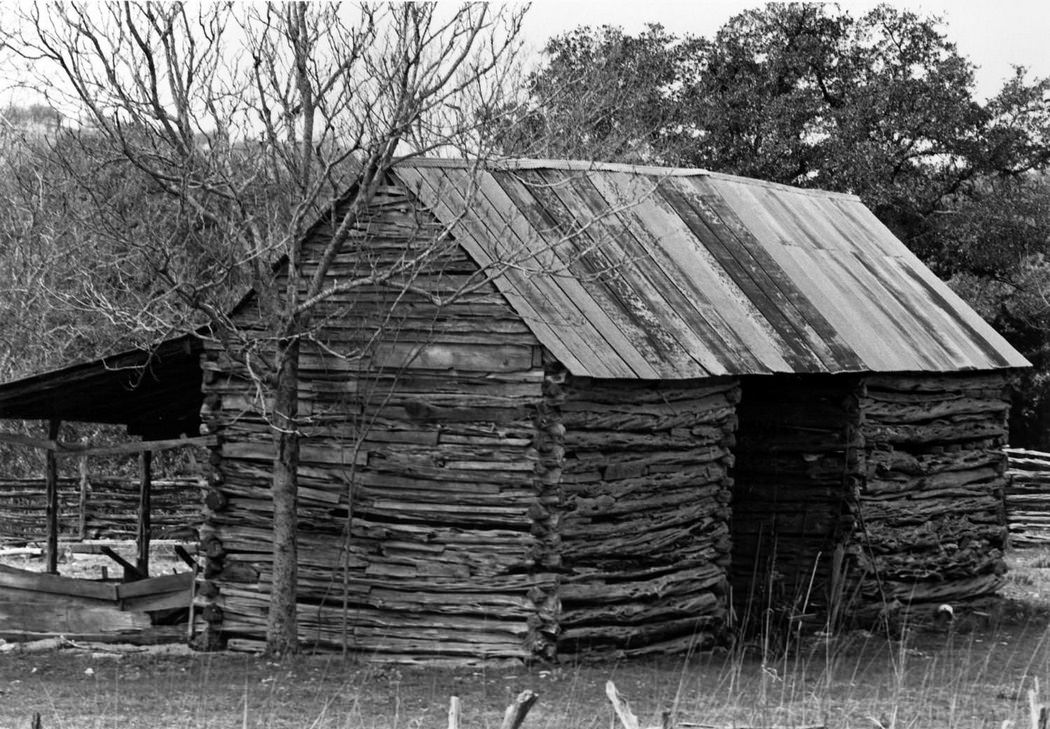
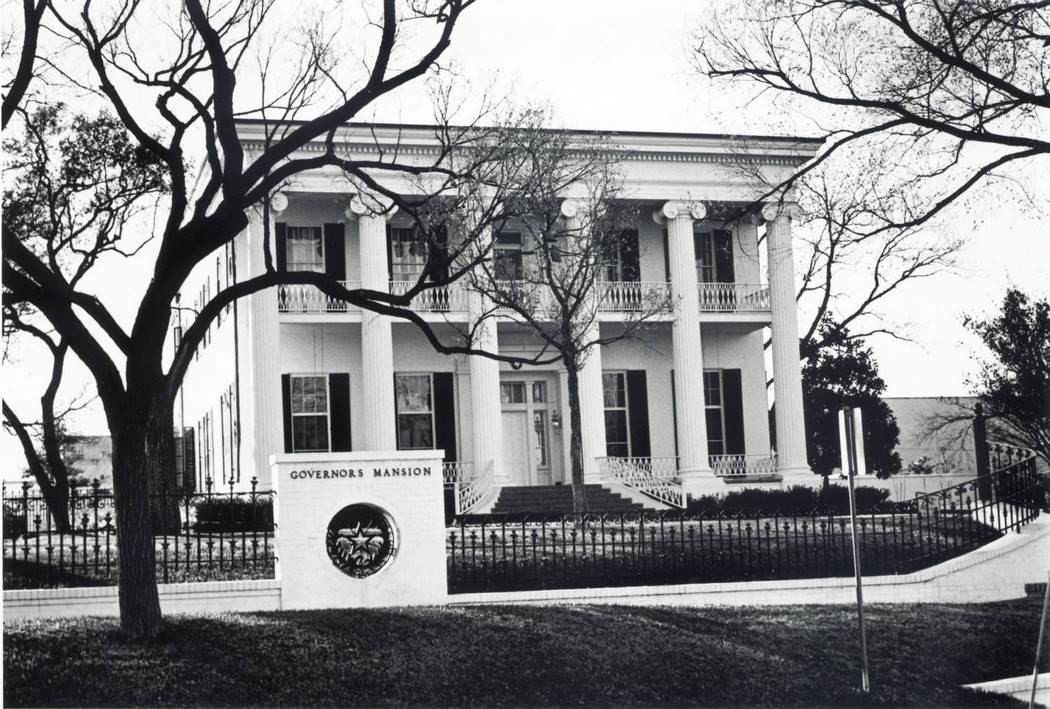
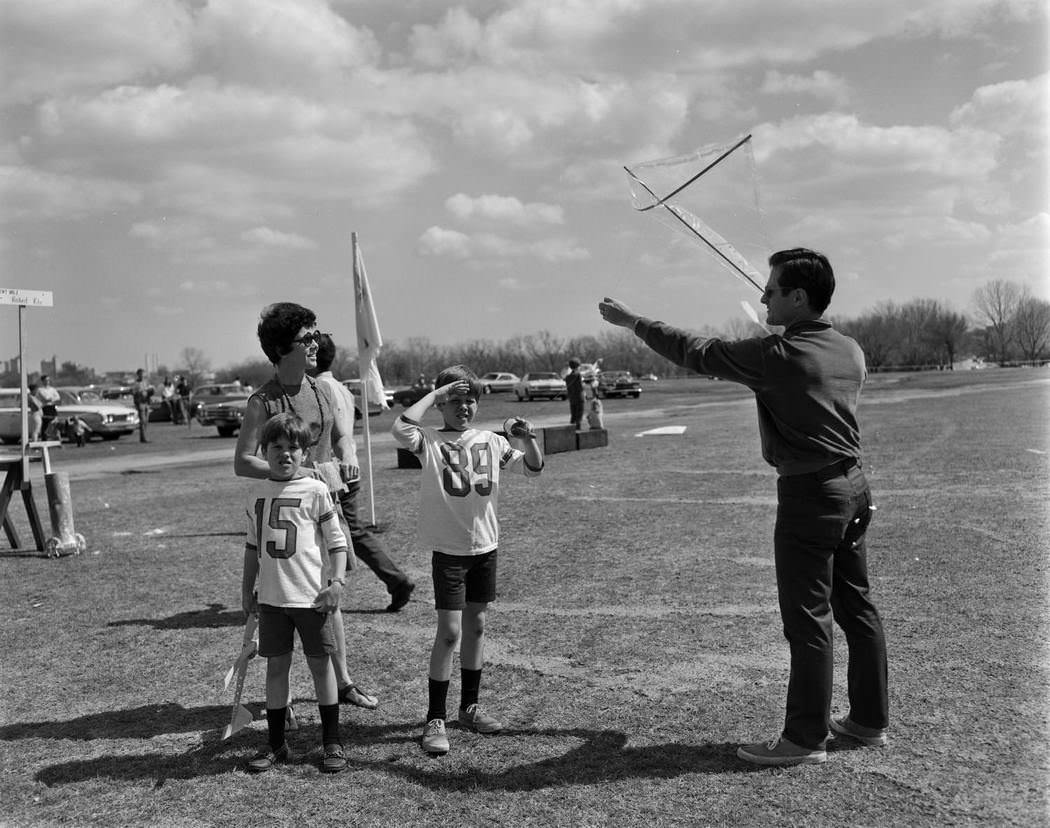
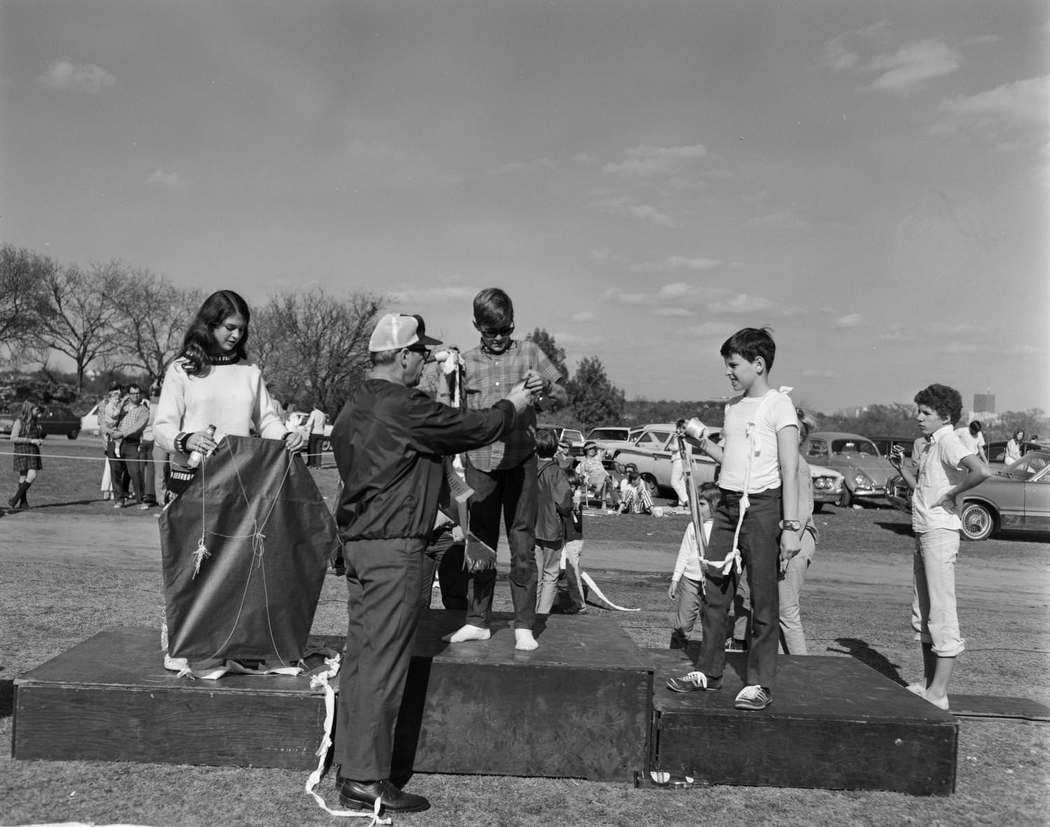
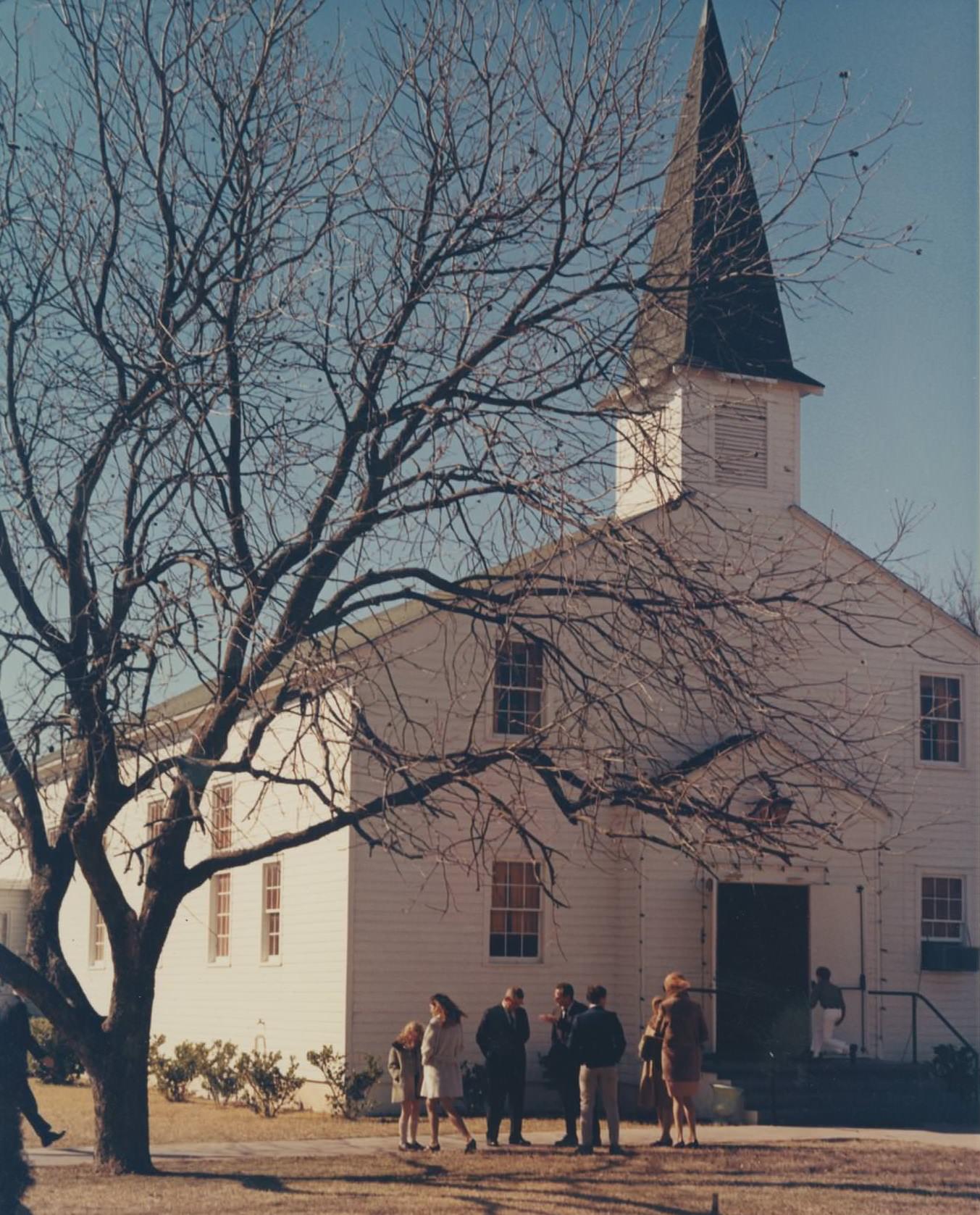
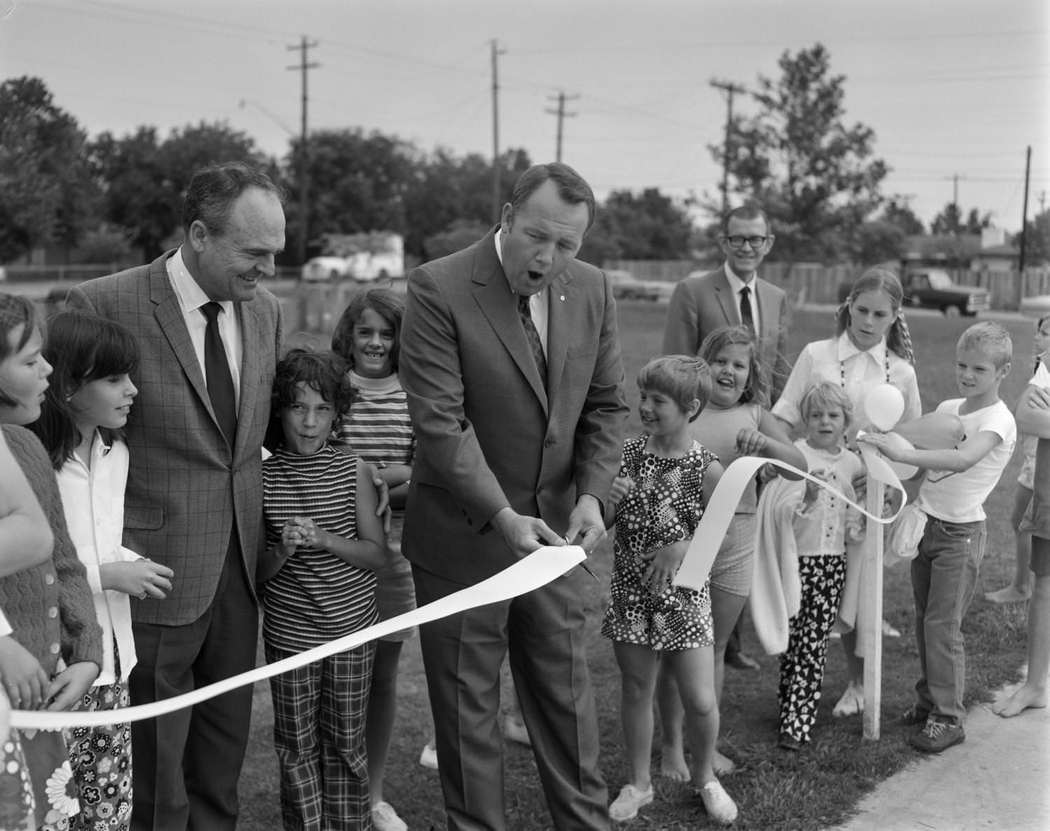
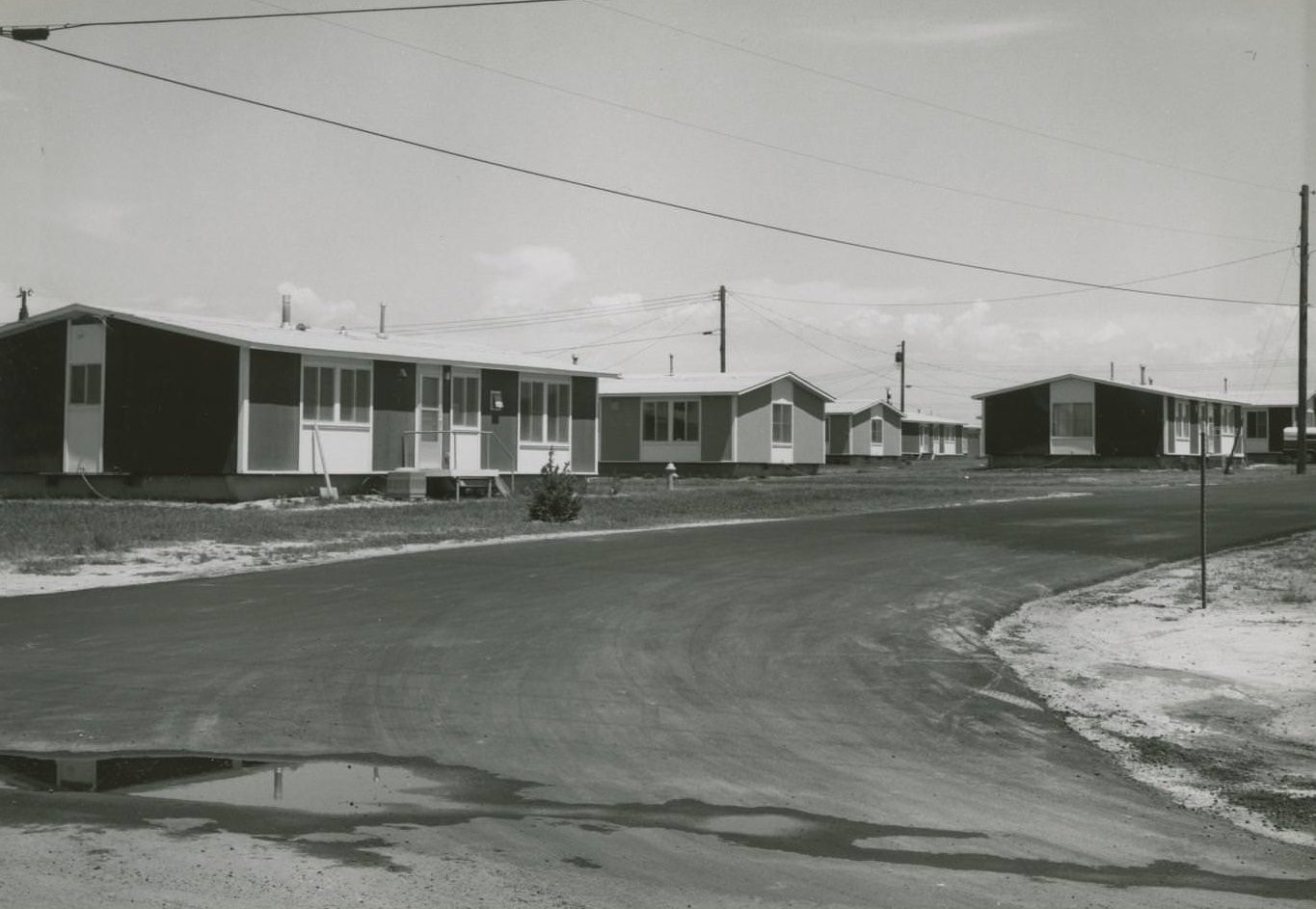
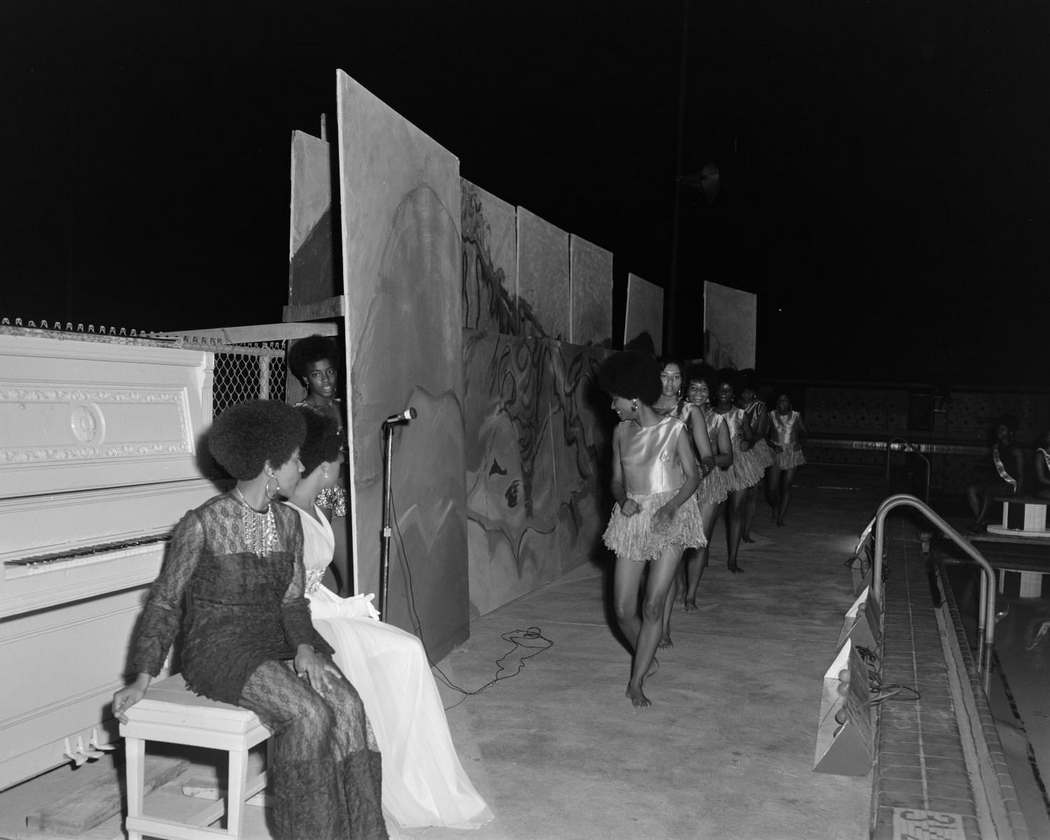
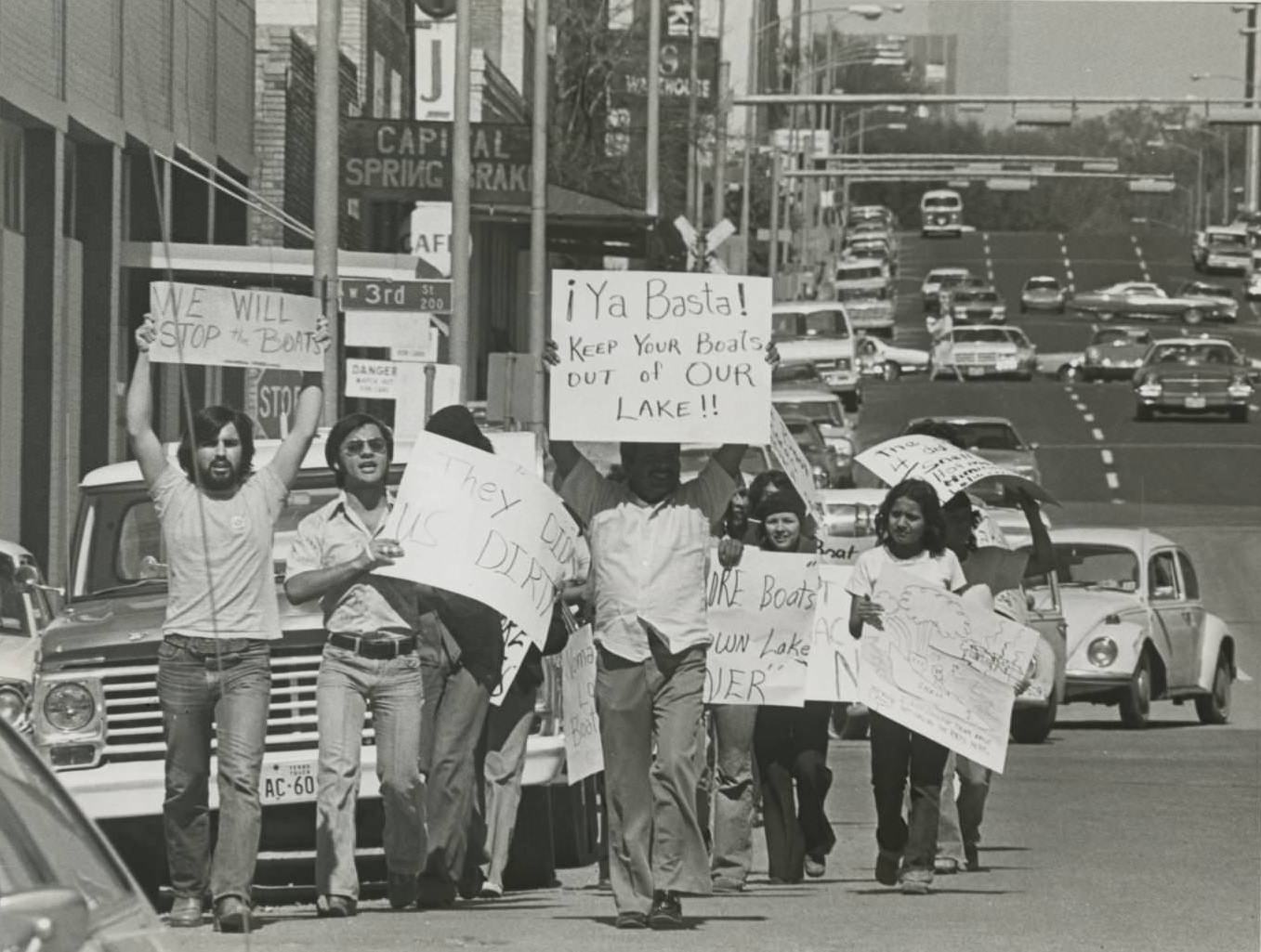
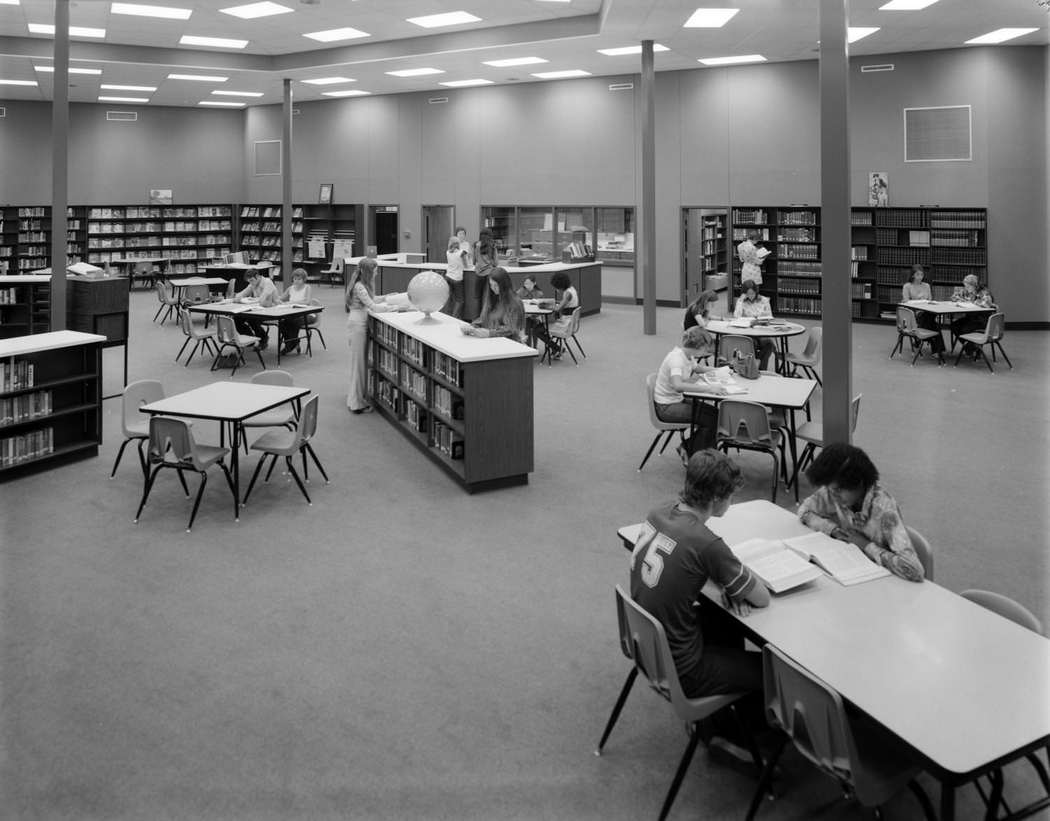
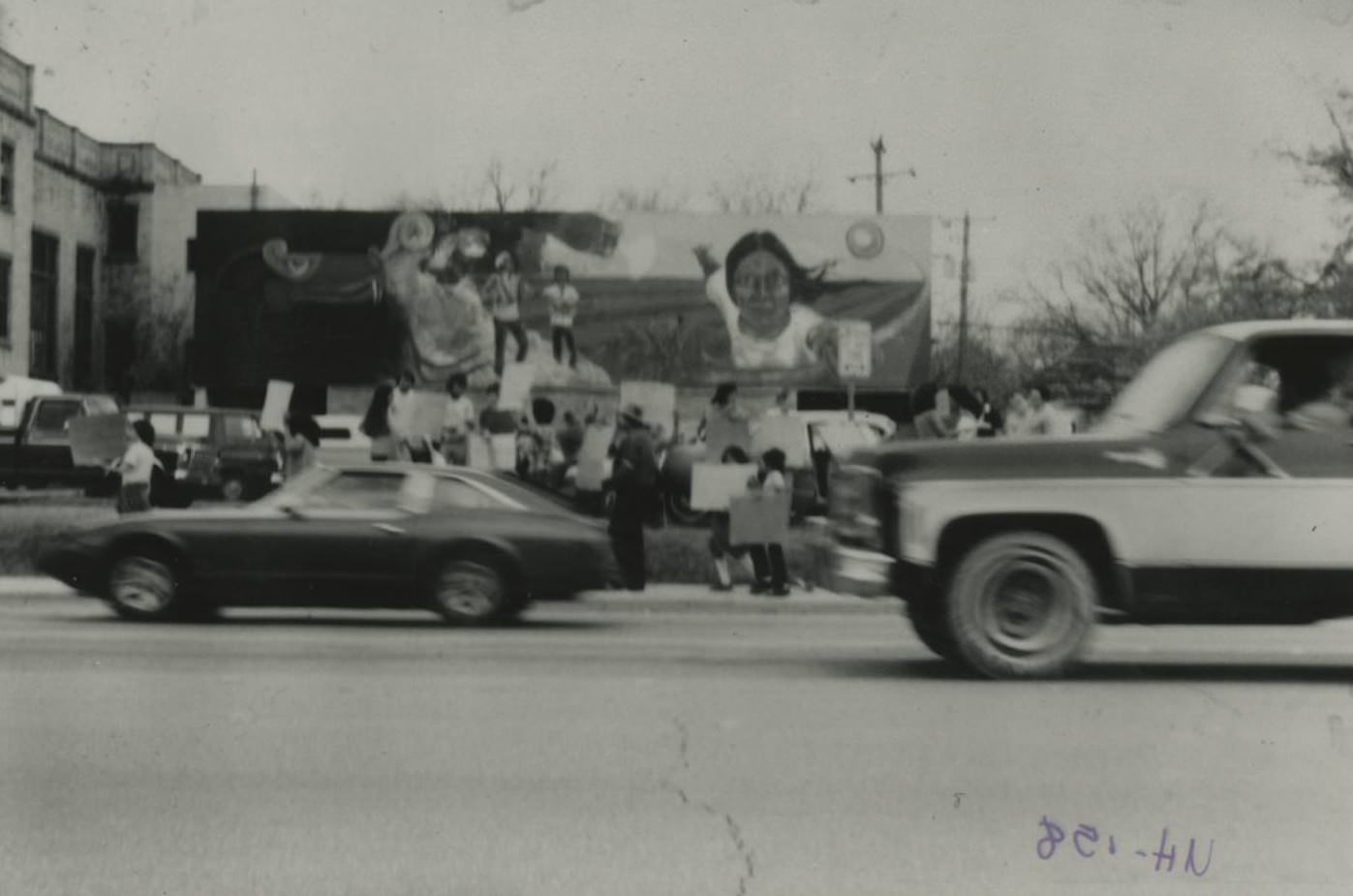
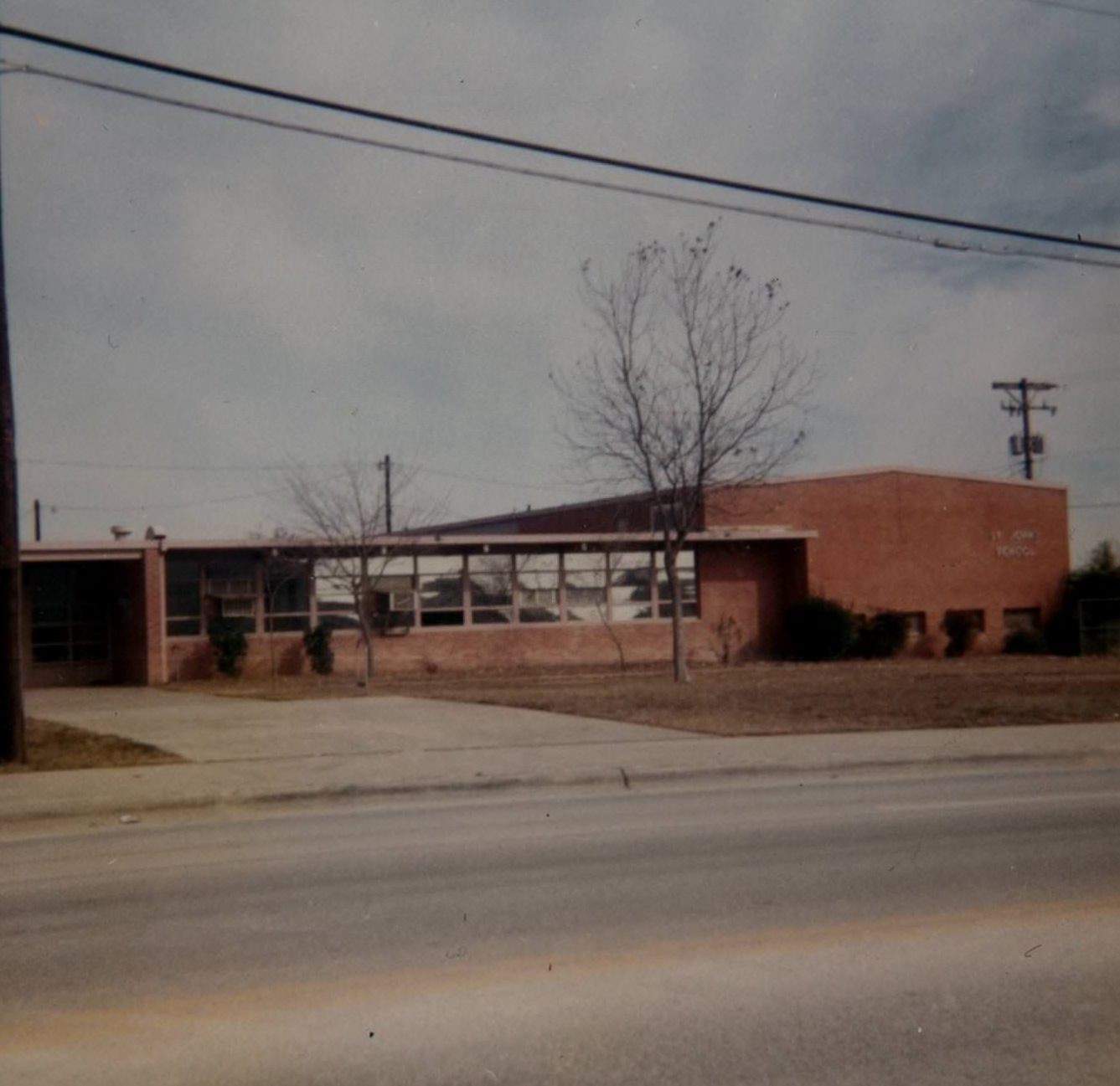
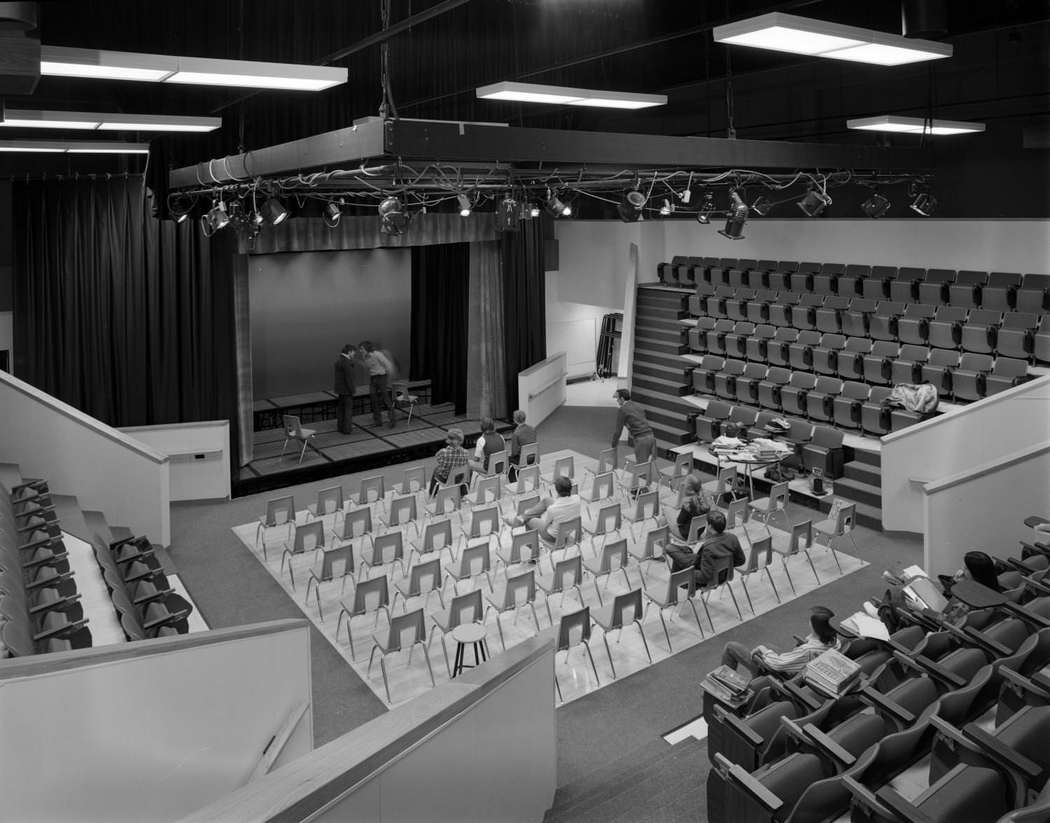
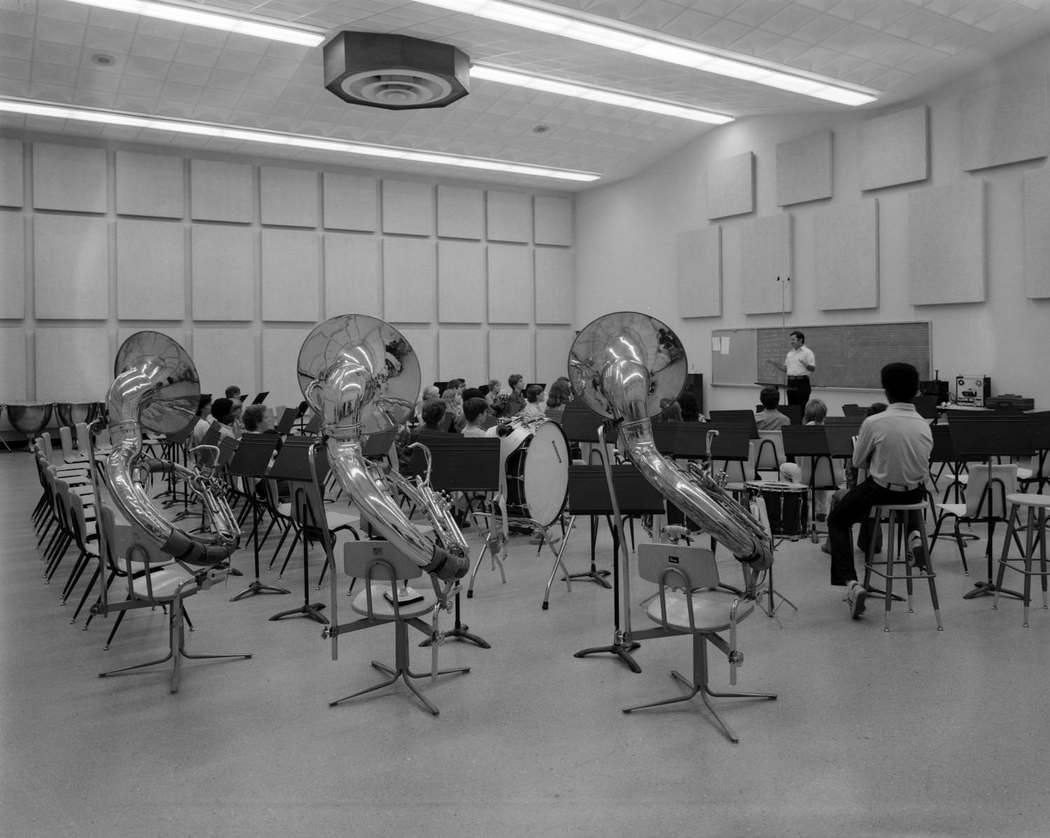
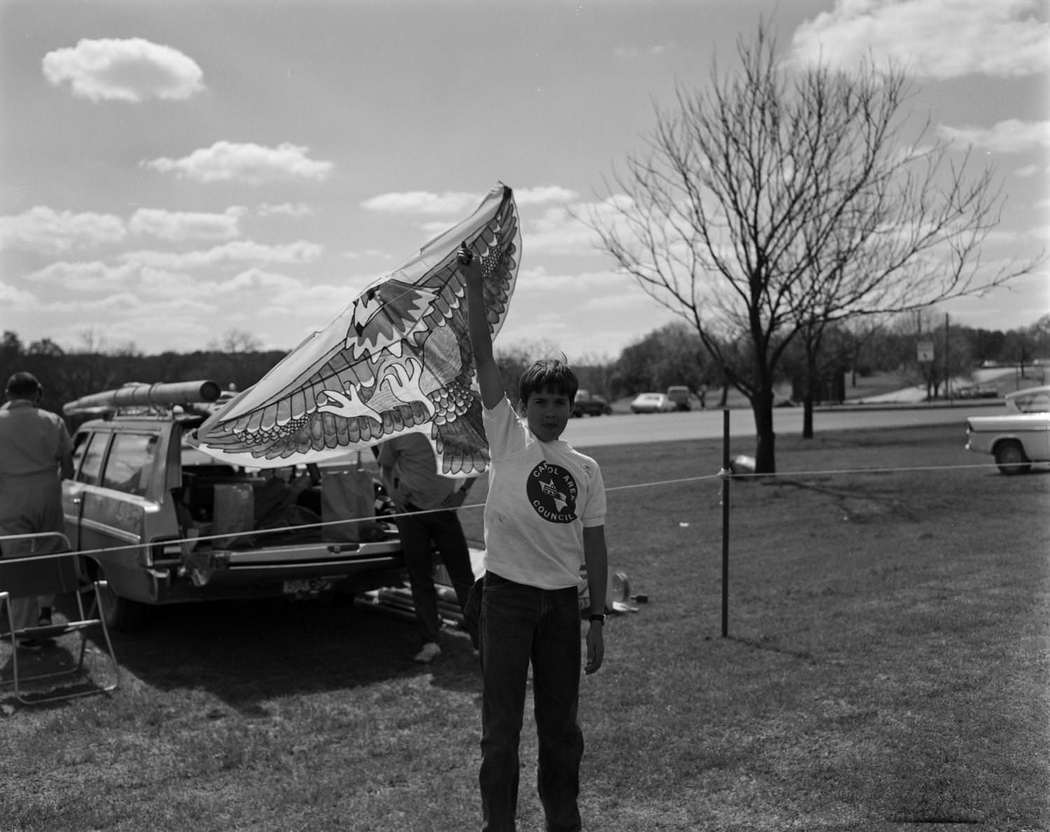
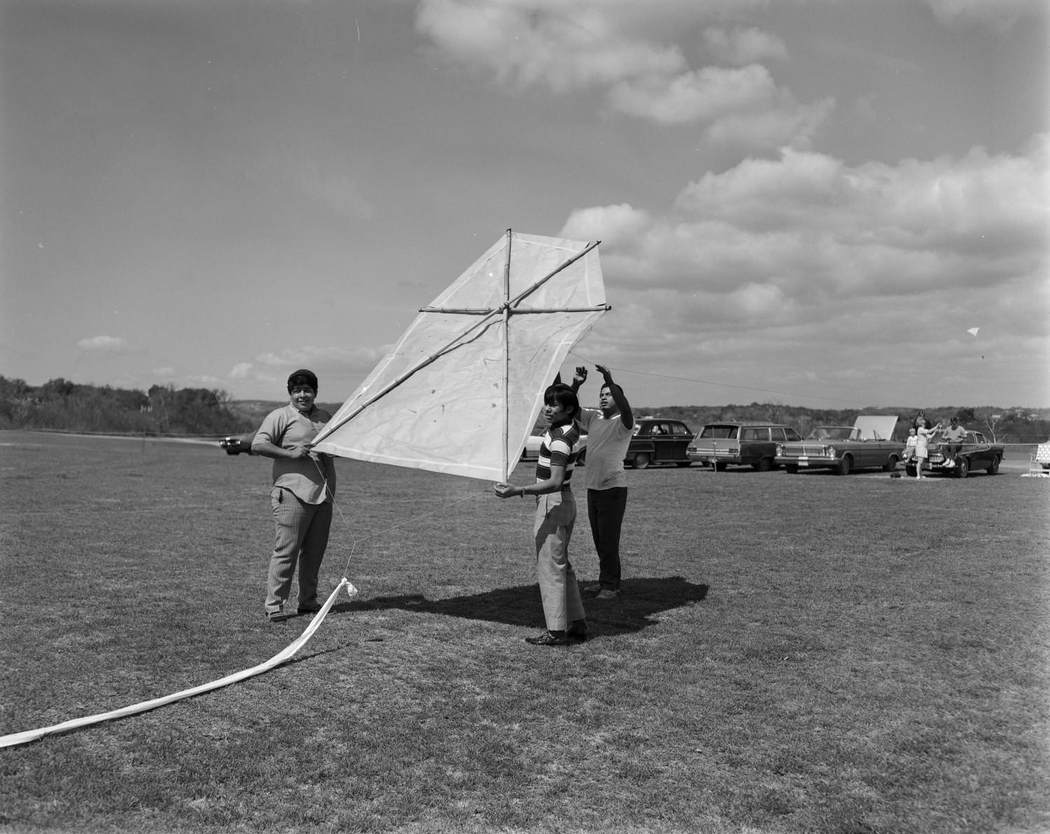
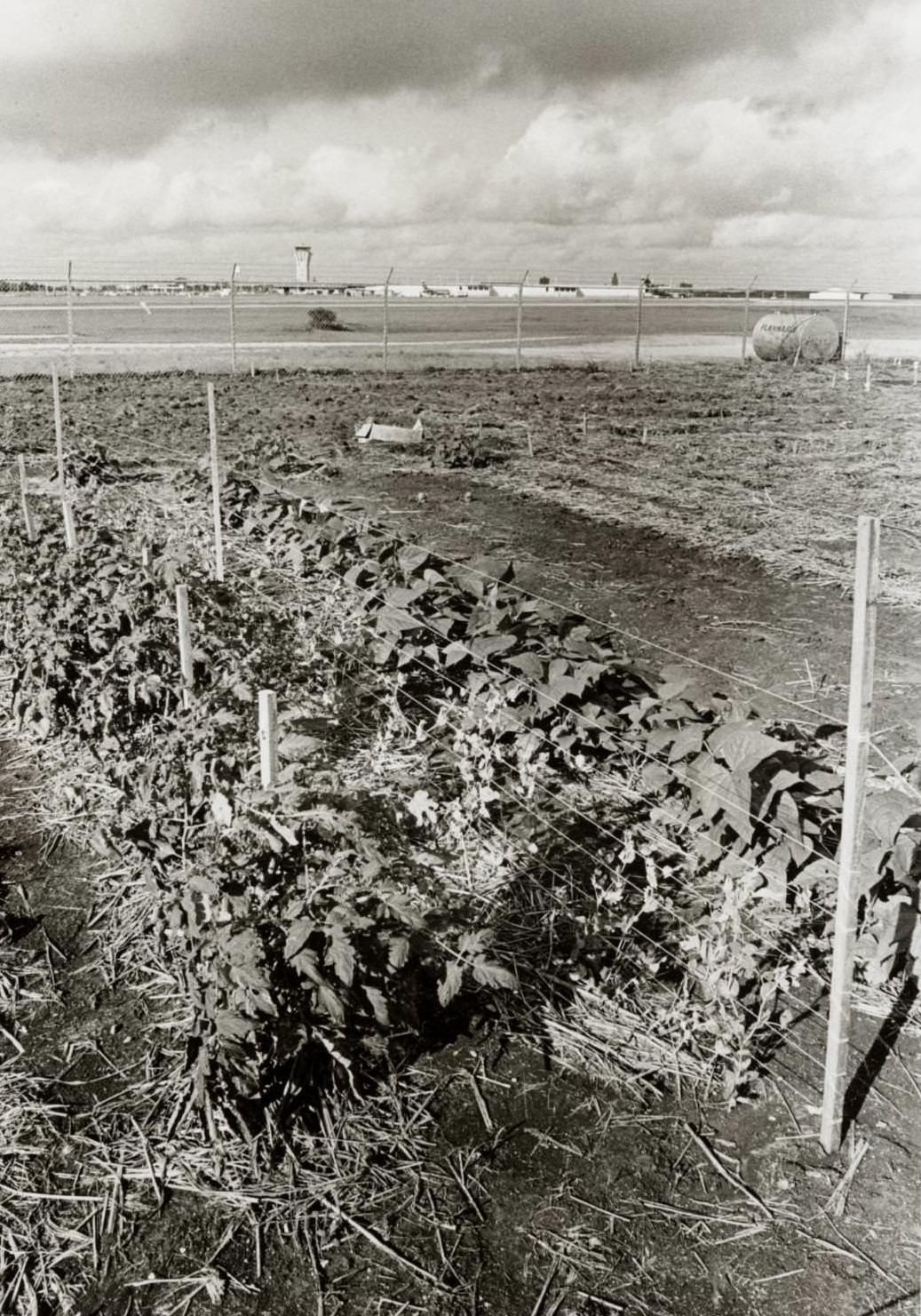
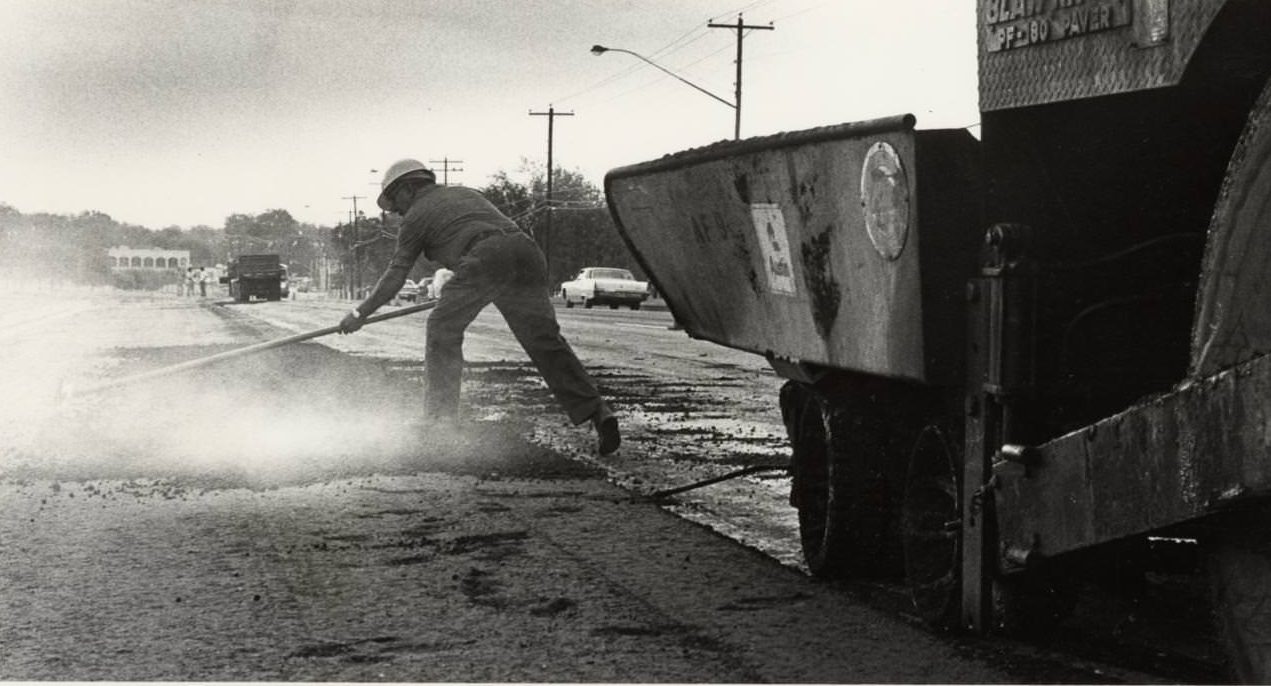
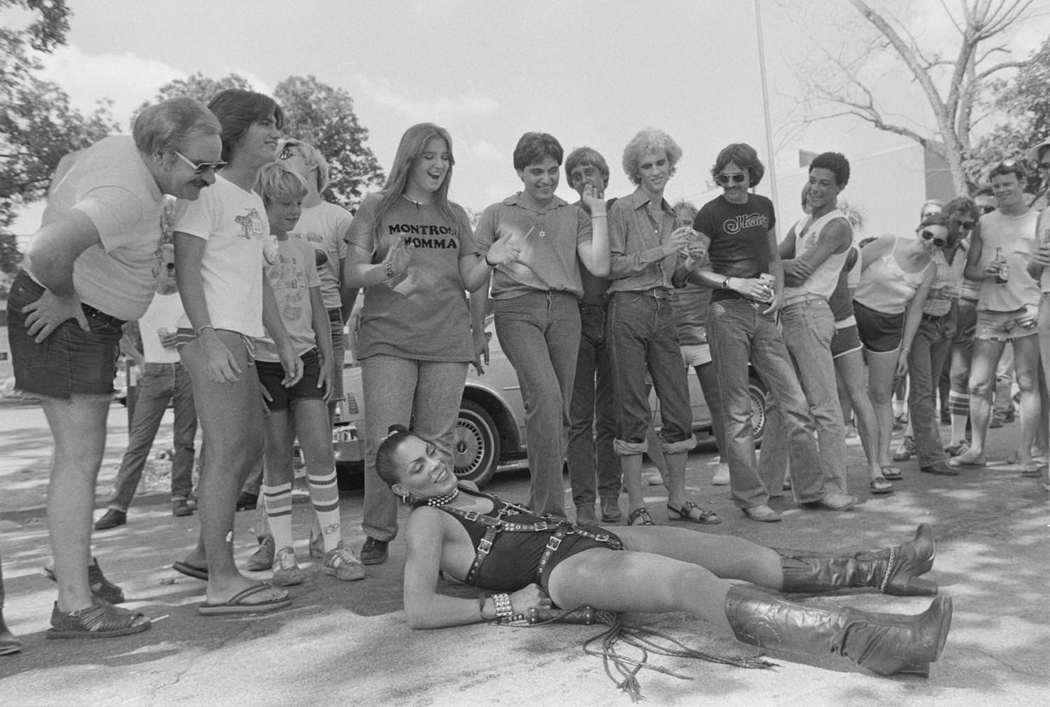
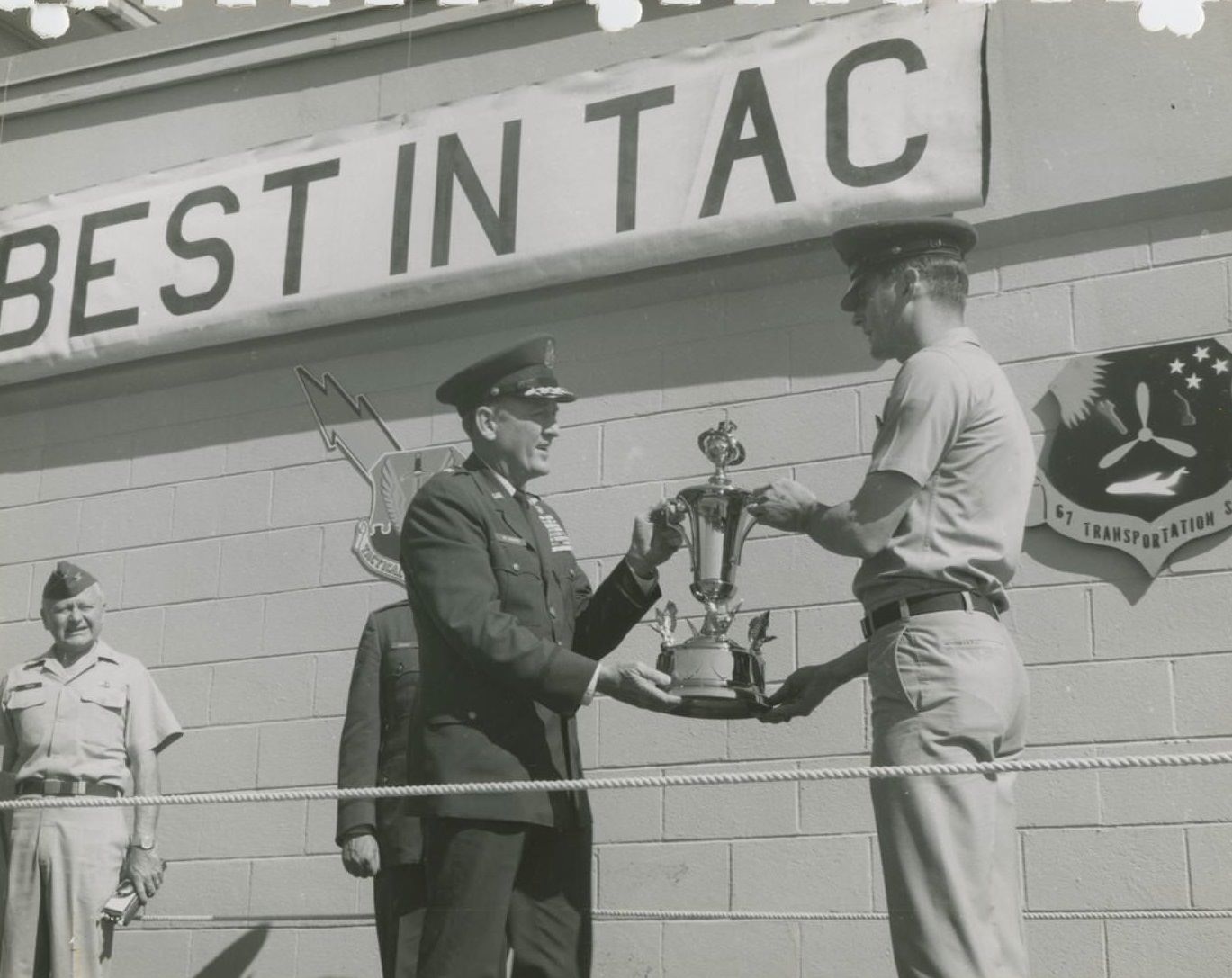
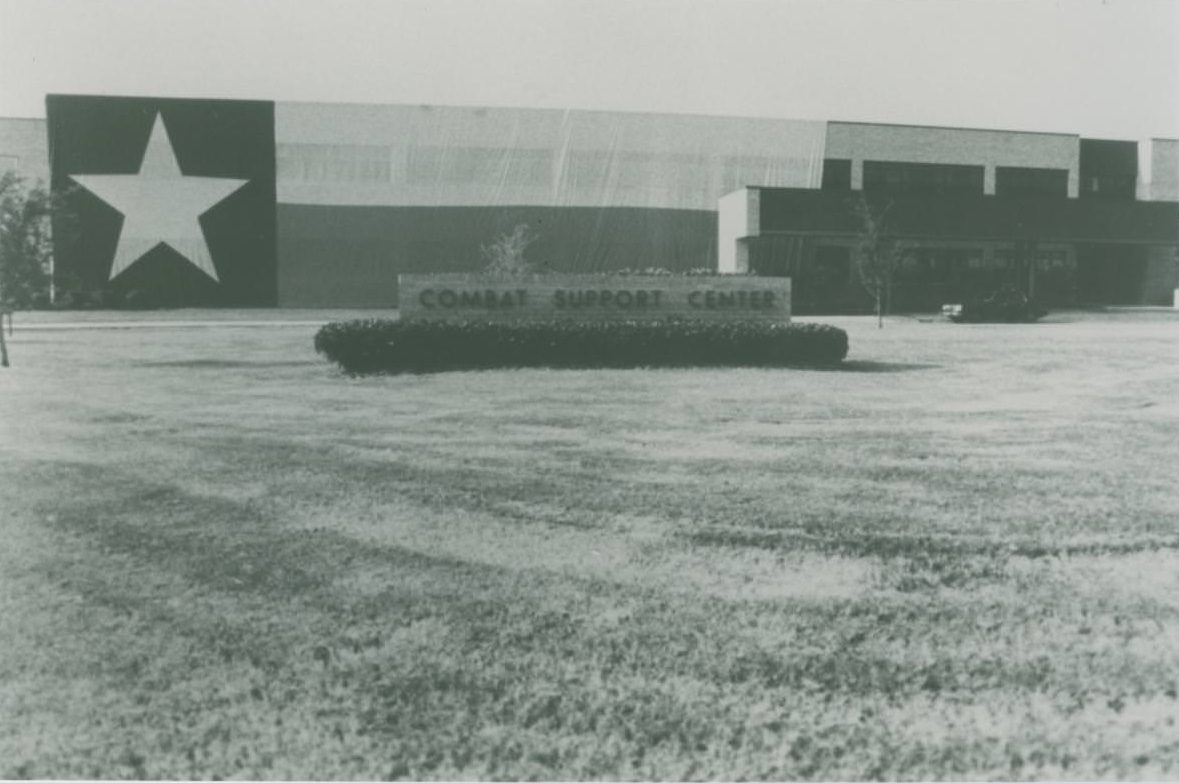
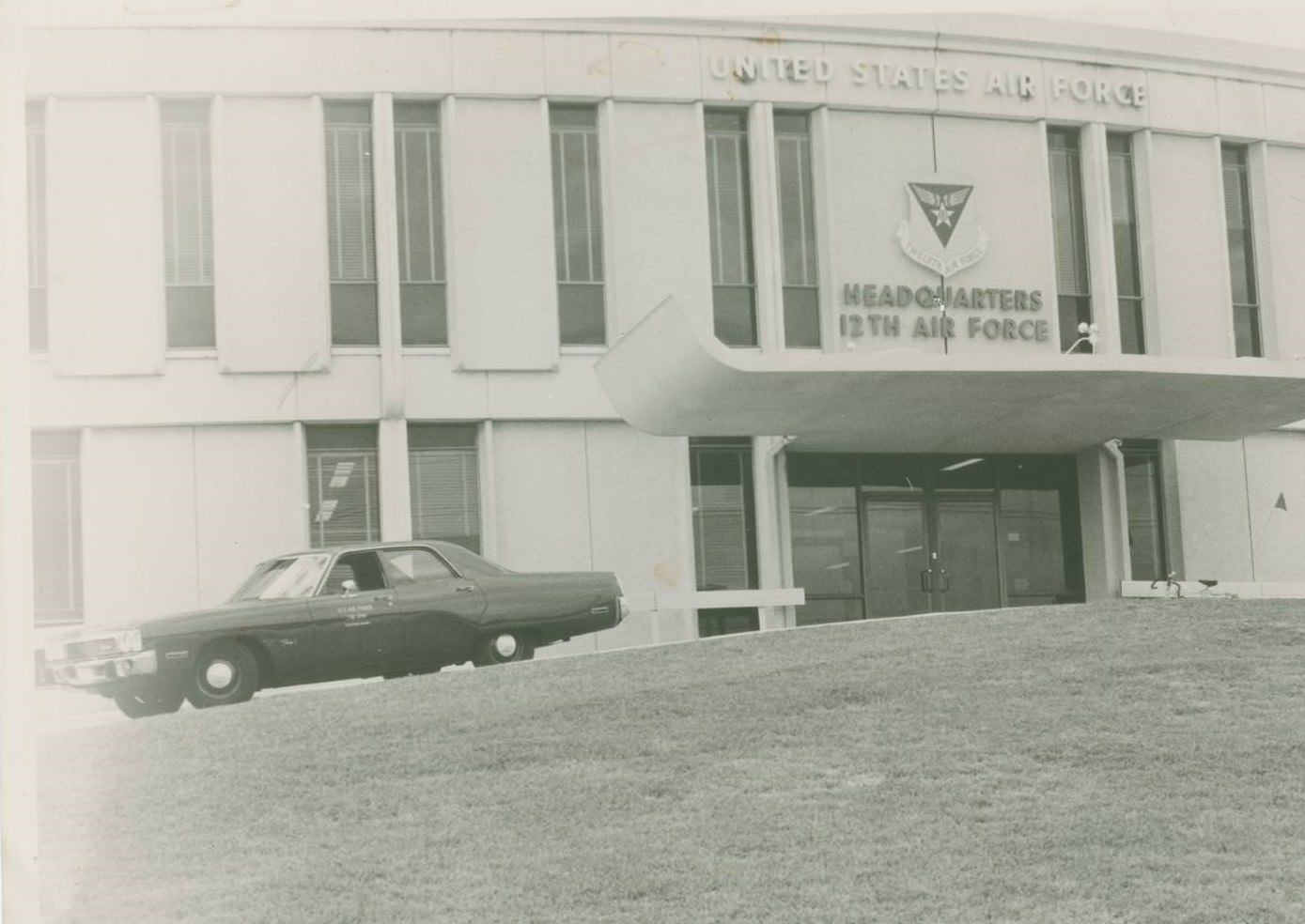
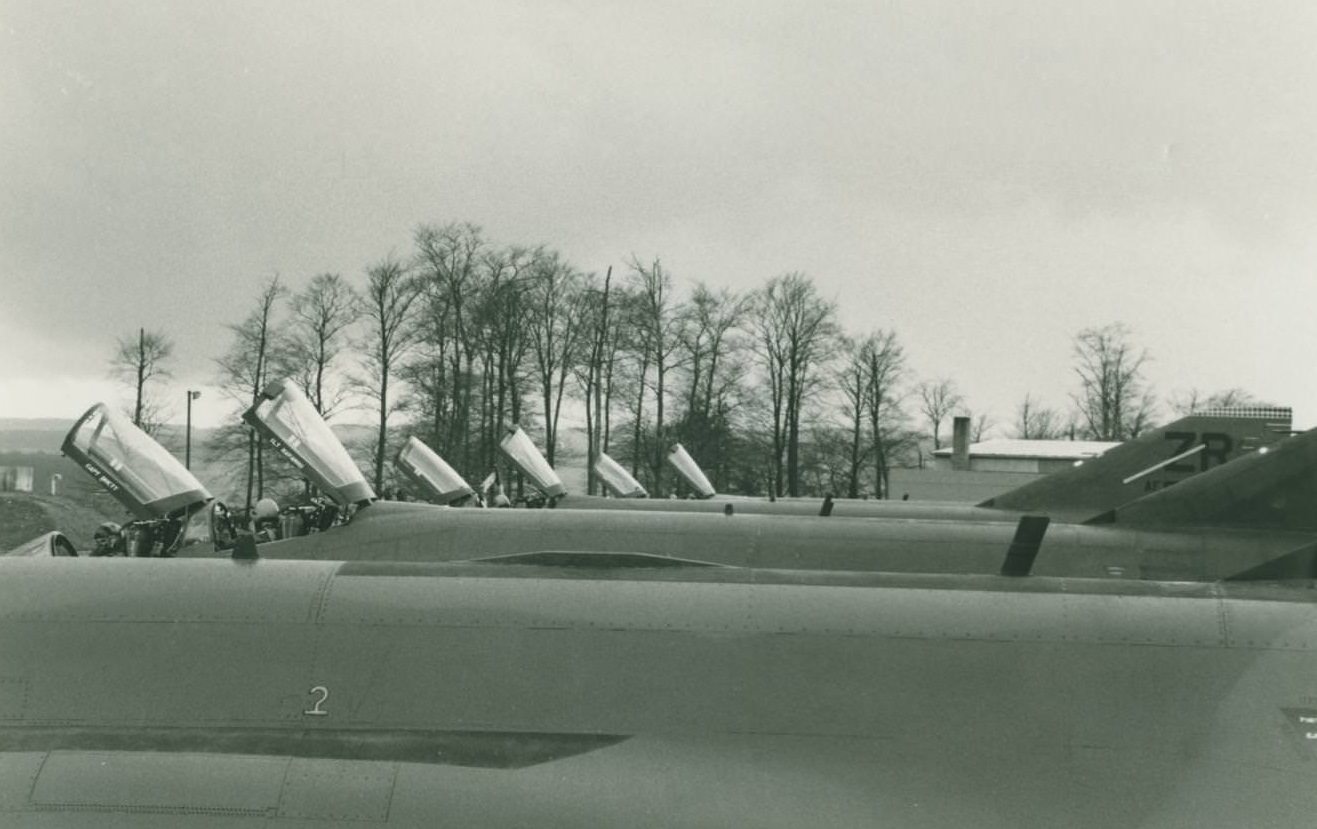
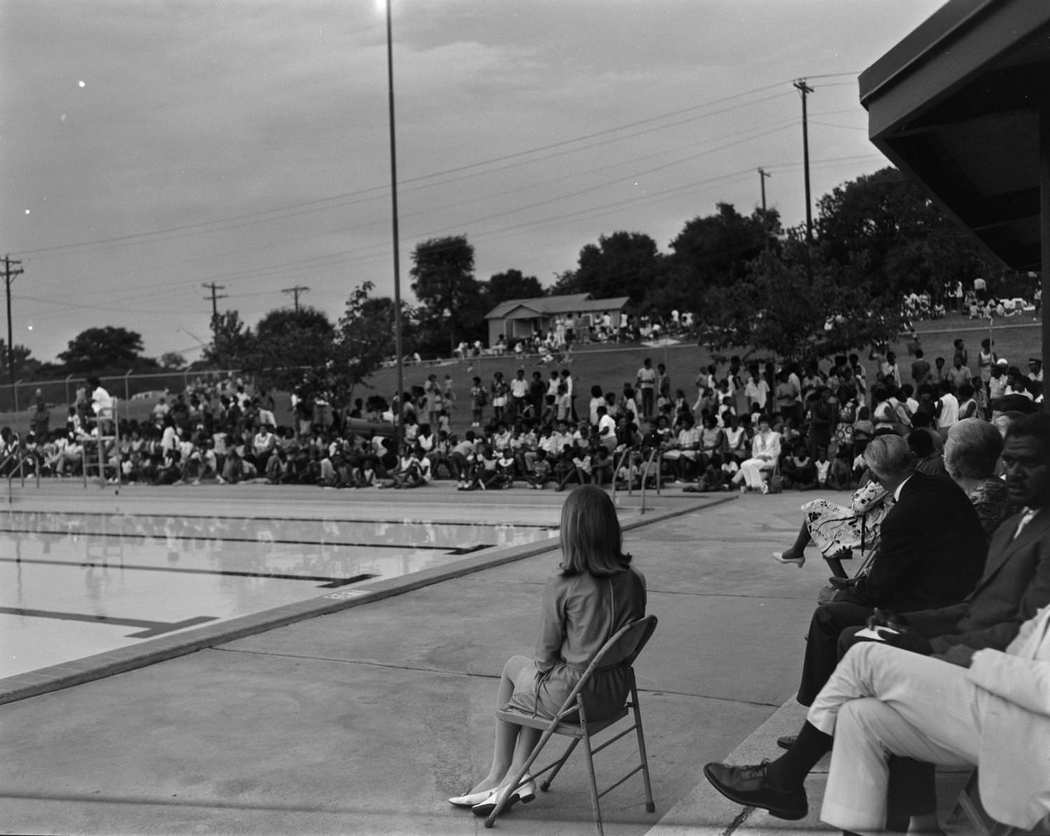
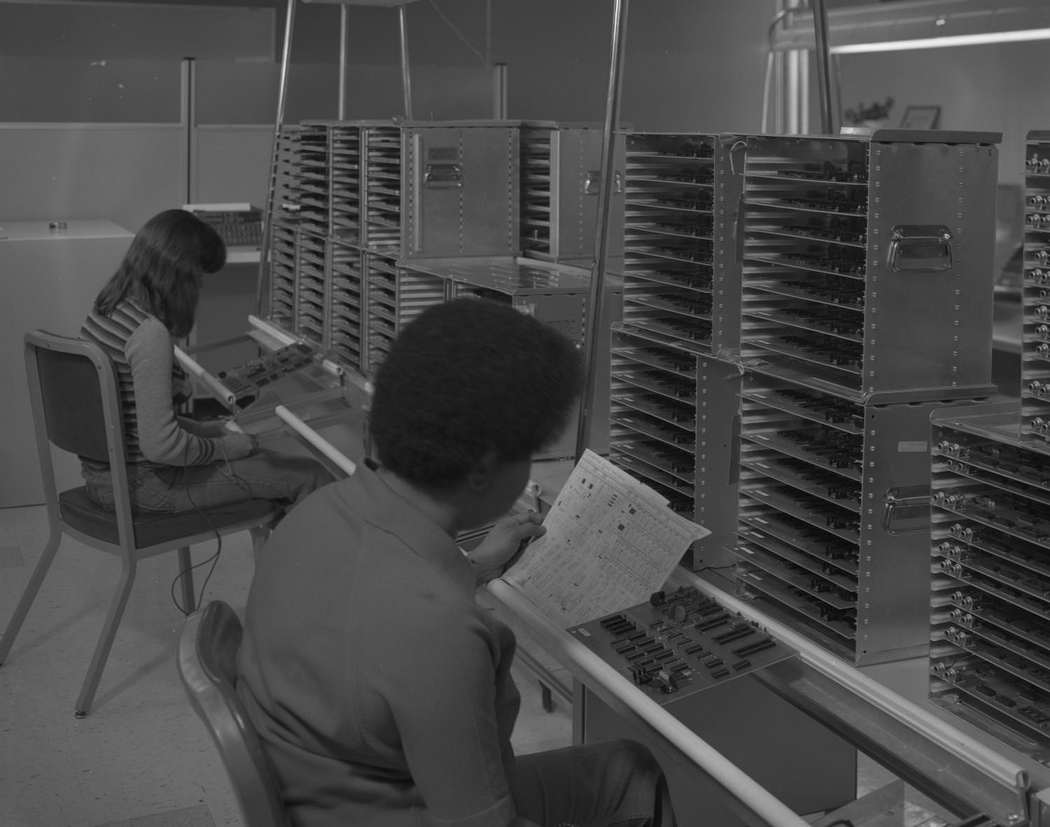
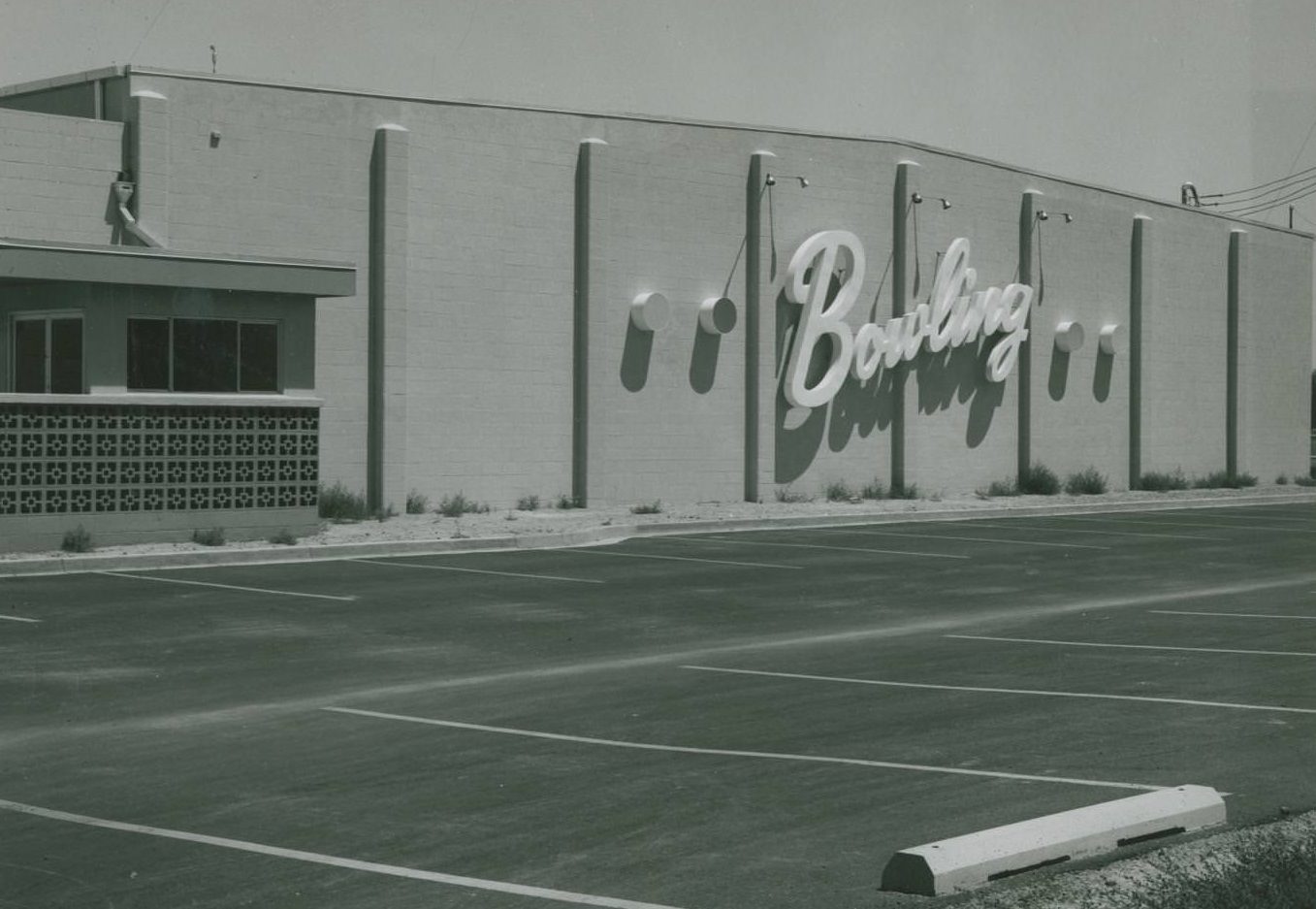
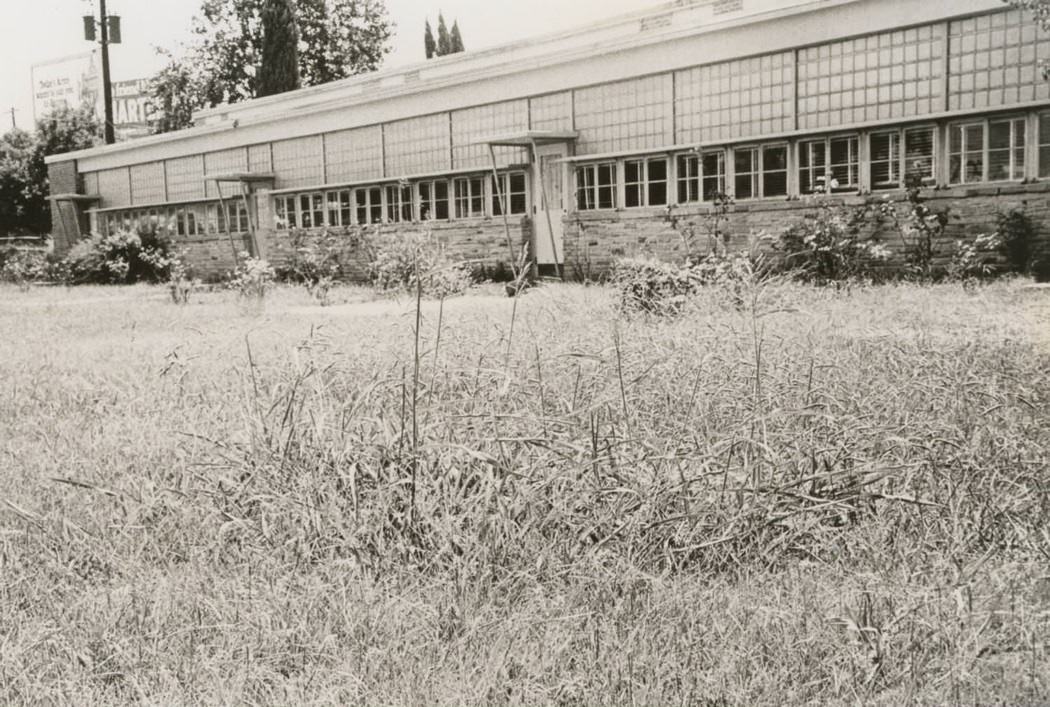

I love the Driskill Hotel, and that’s probably the best photo I’ve ever seen of the little-known penthouse.
Would’ve been better with more neighborhoods than ones shown.. what about in the West side, Brykerwood elementary, Shoal creek by Lamar and 29th?